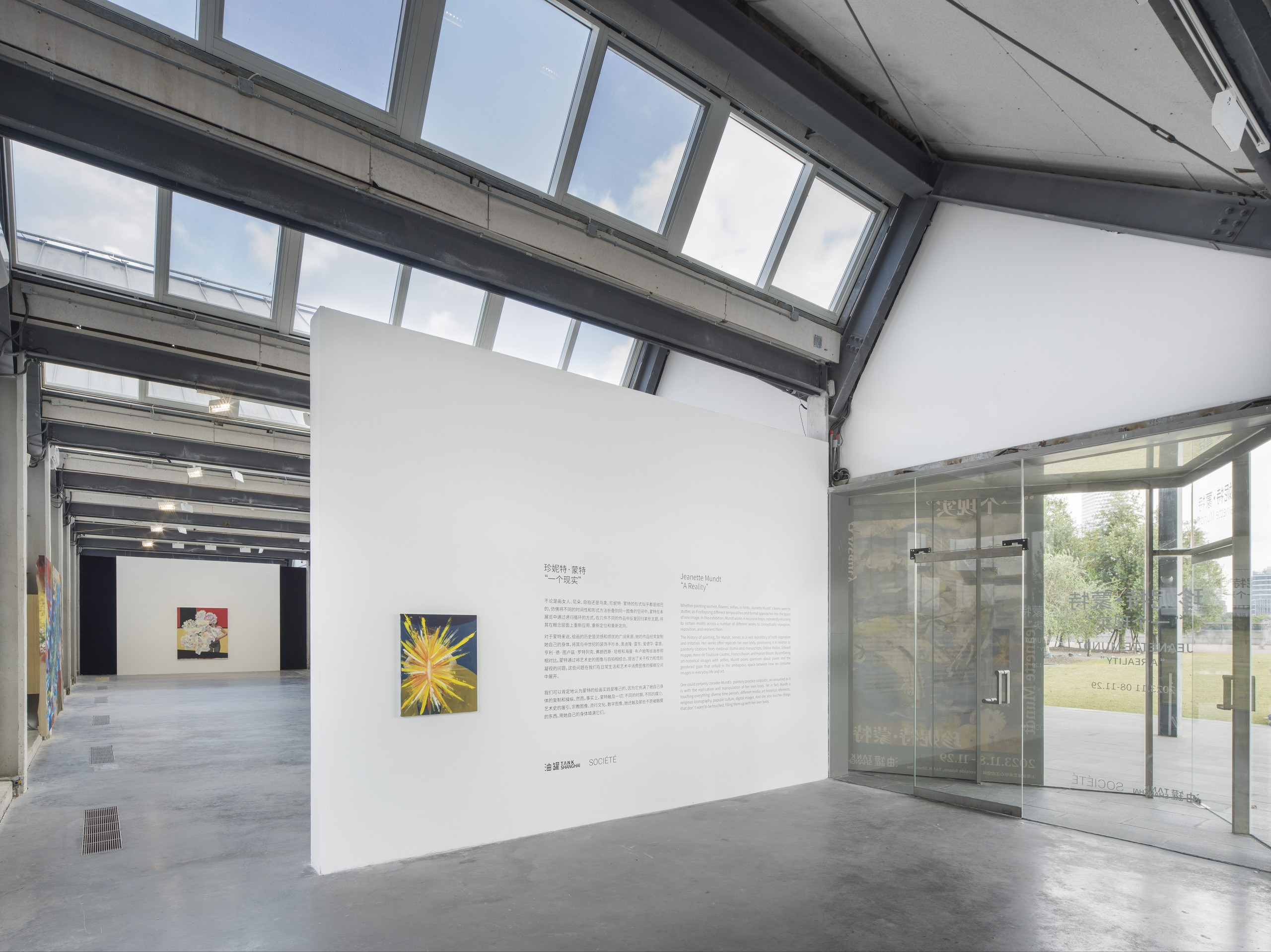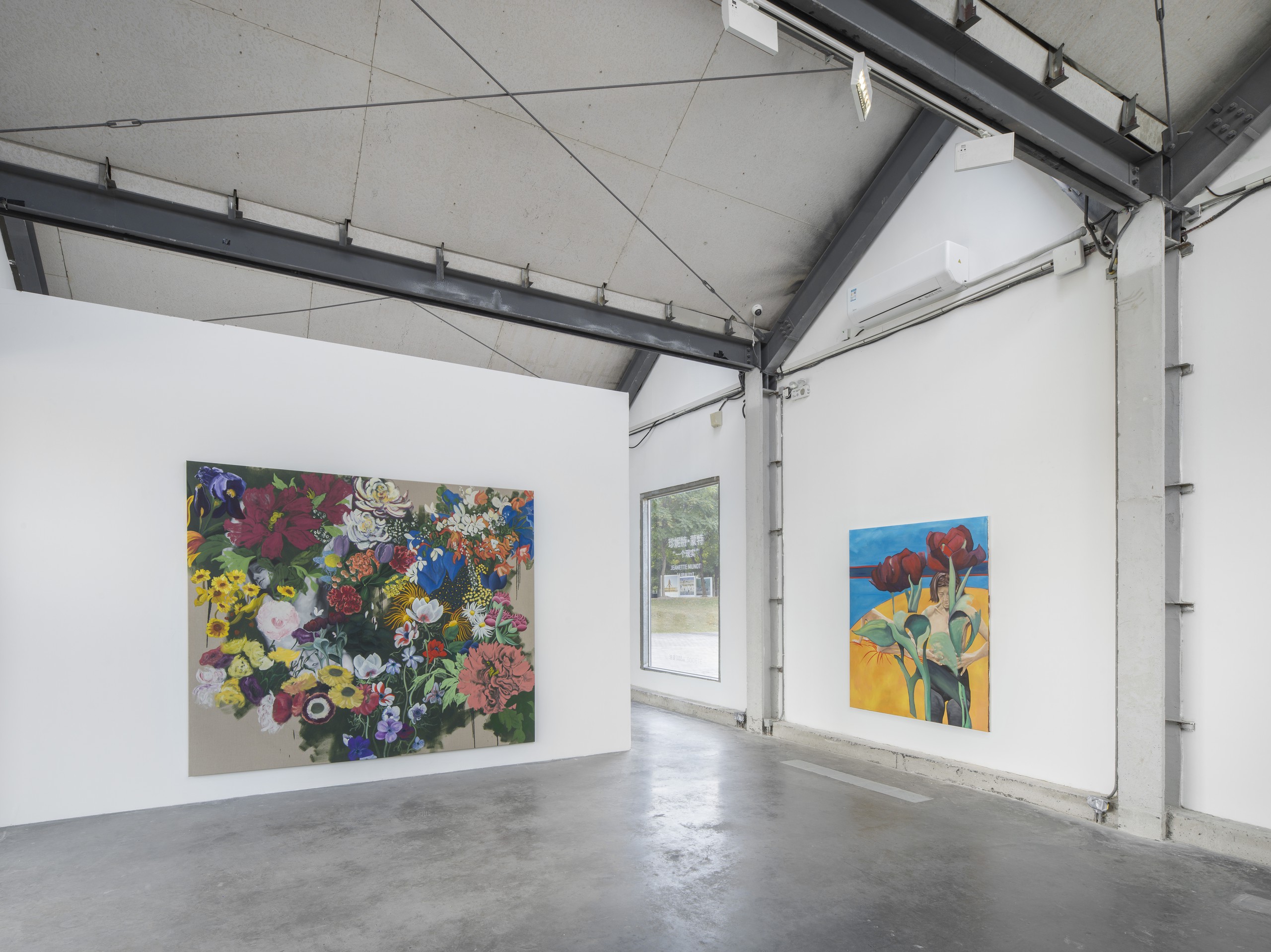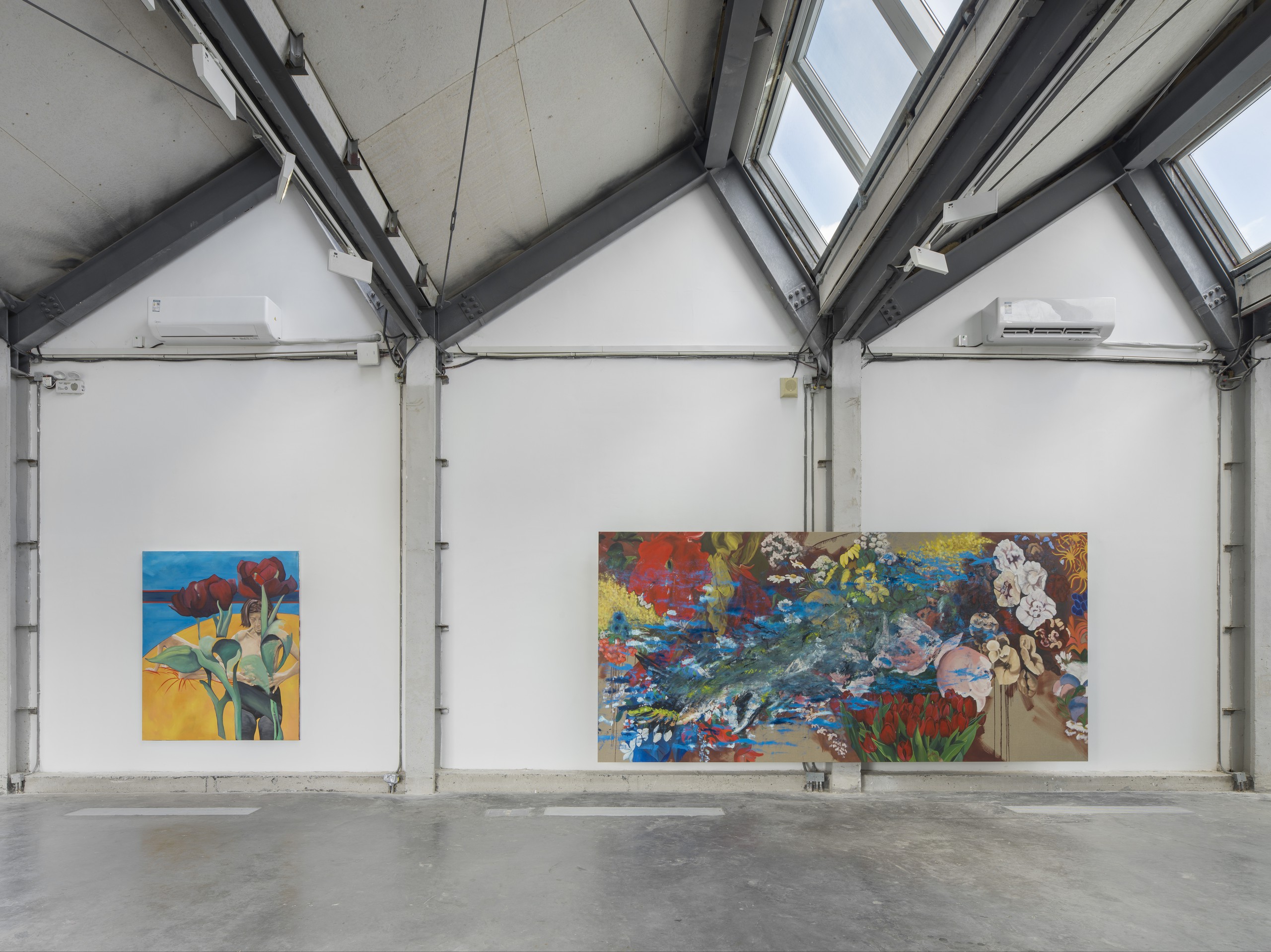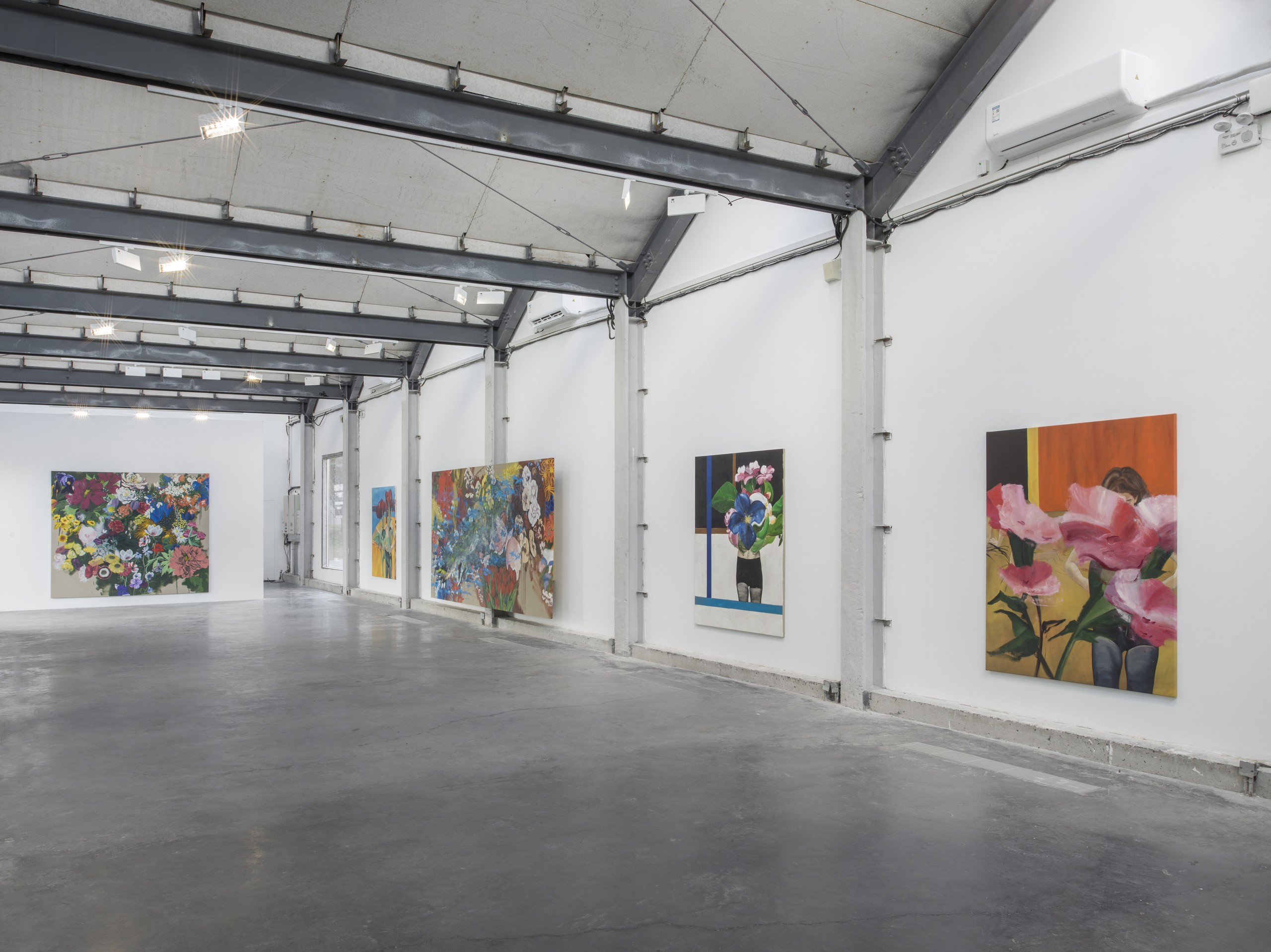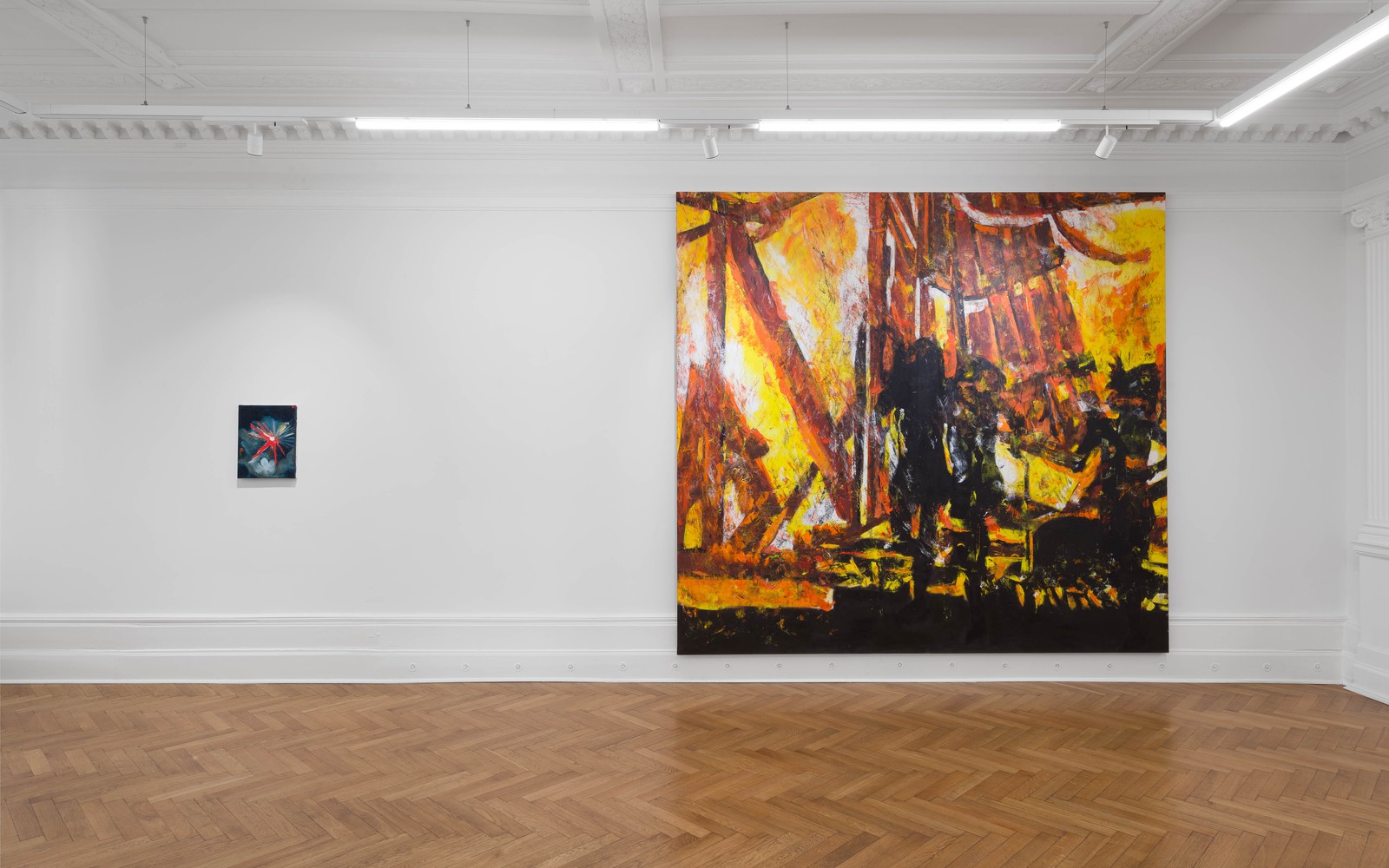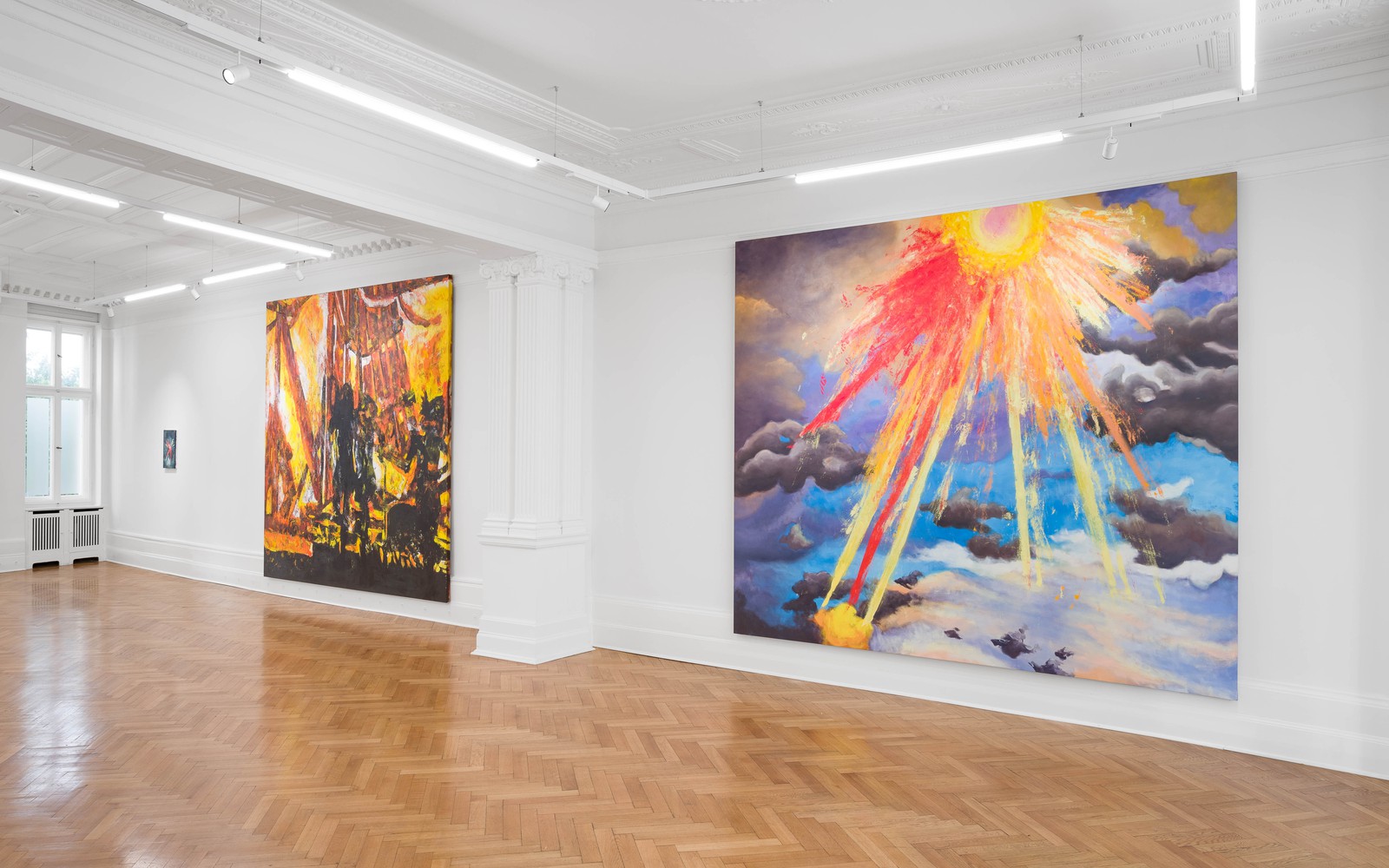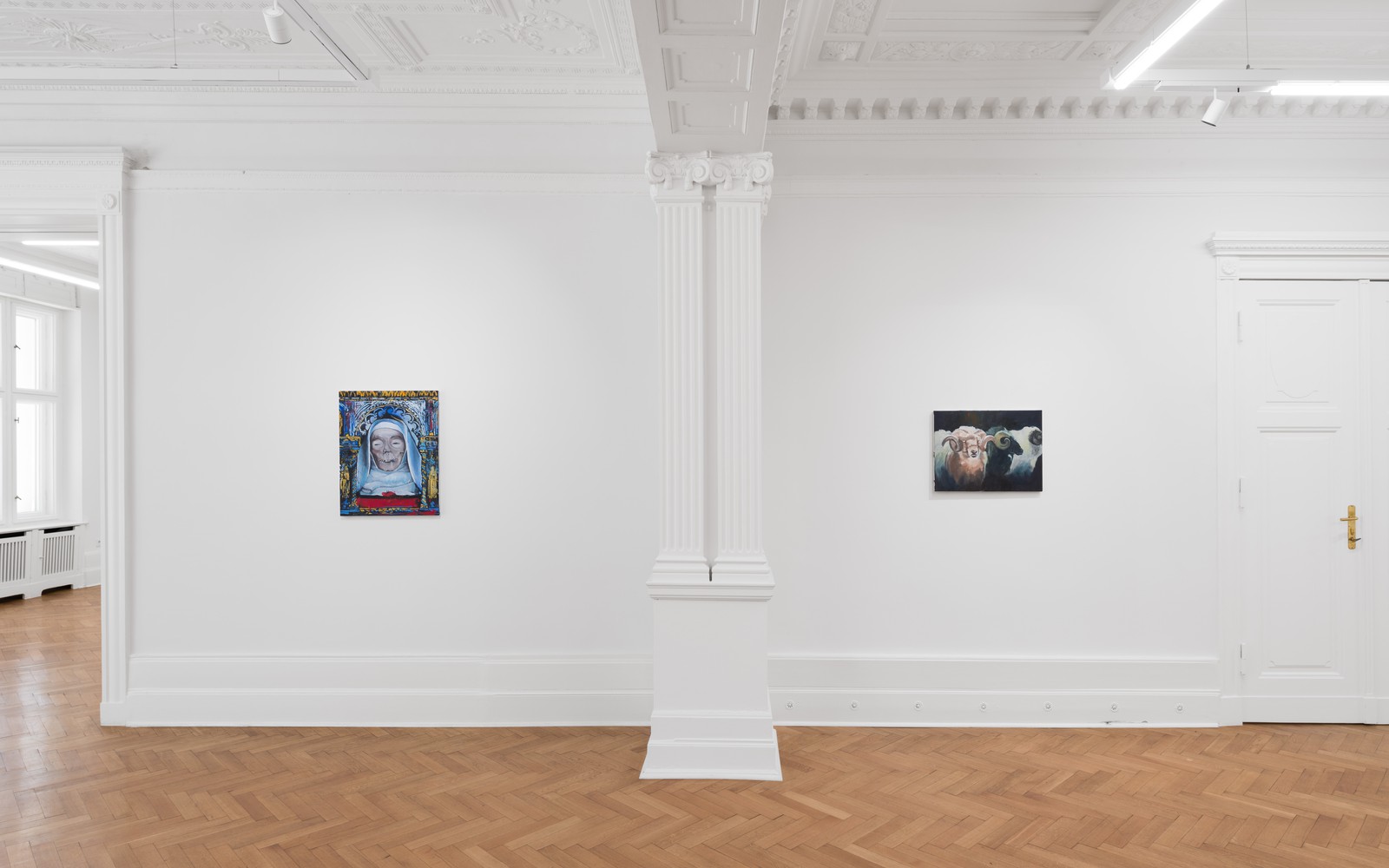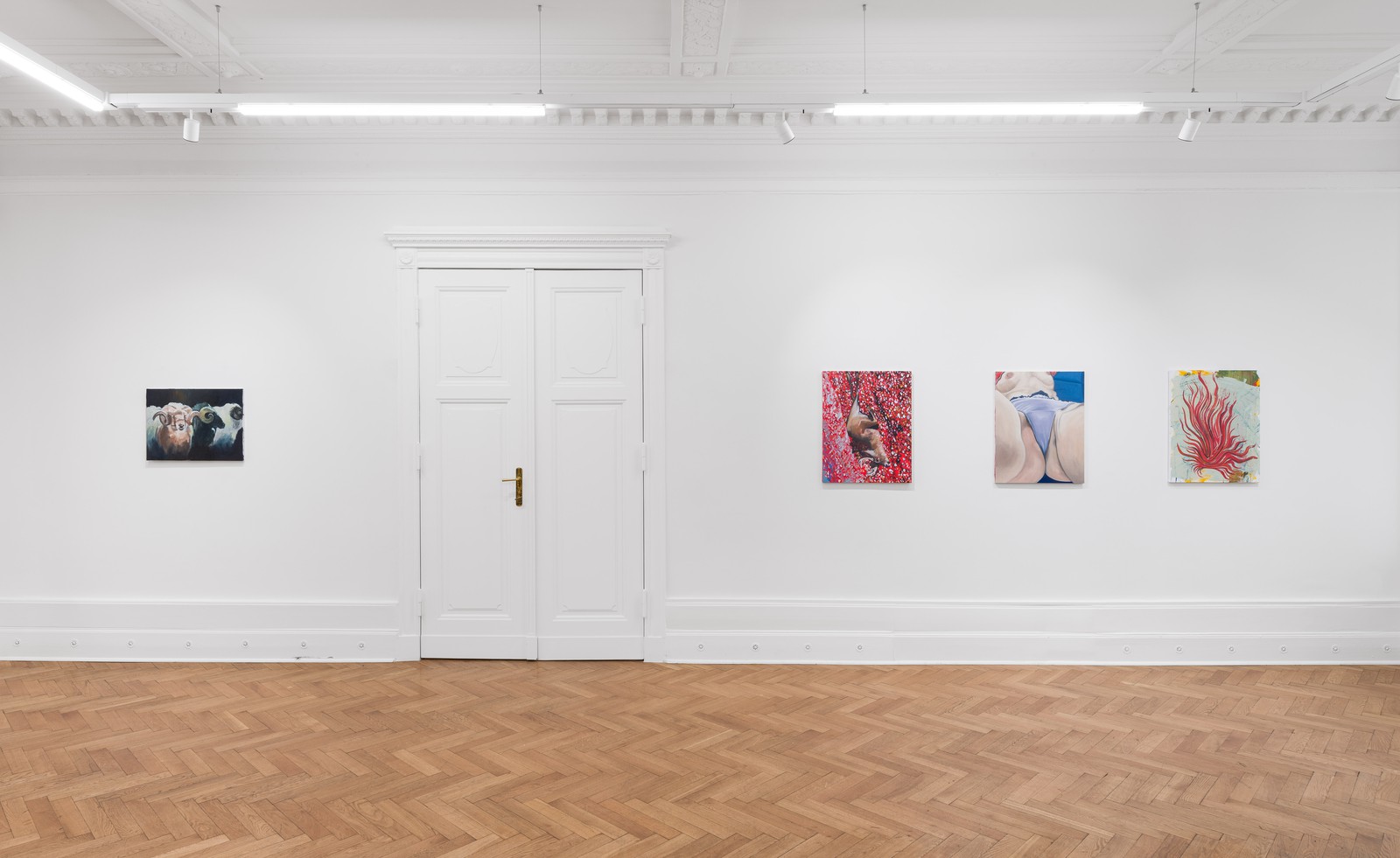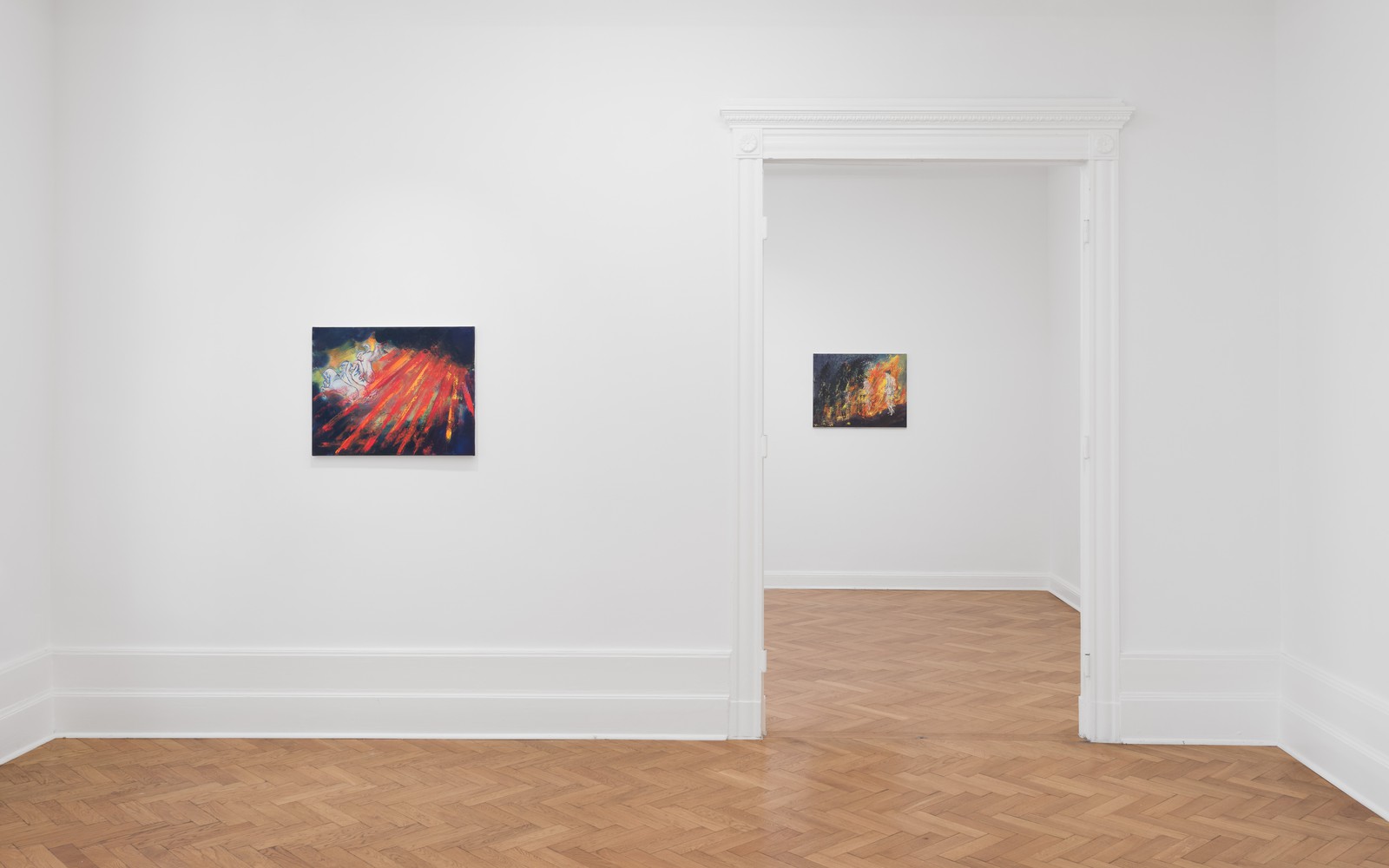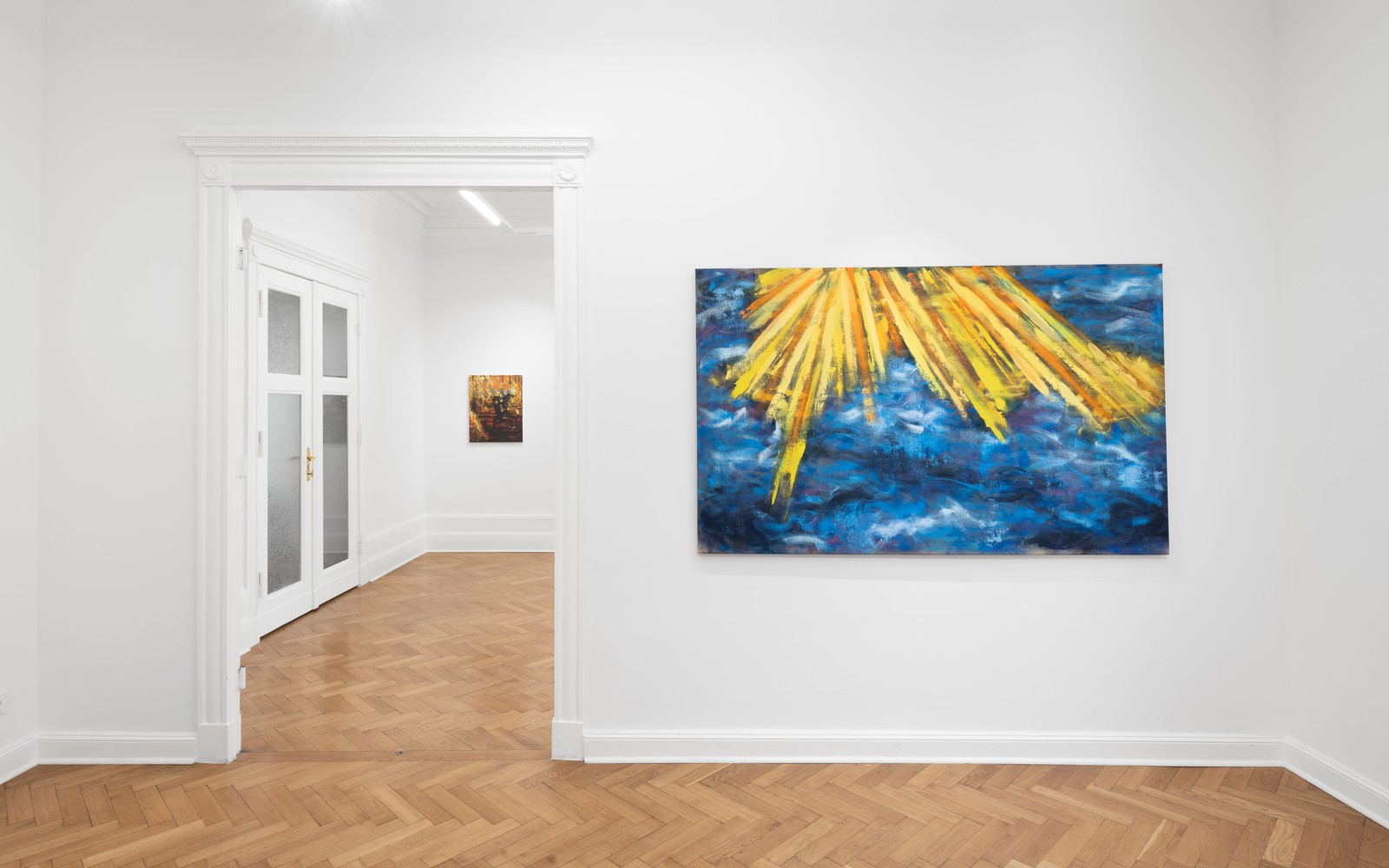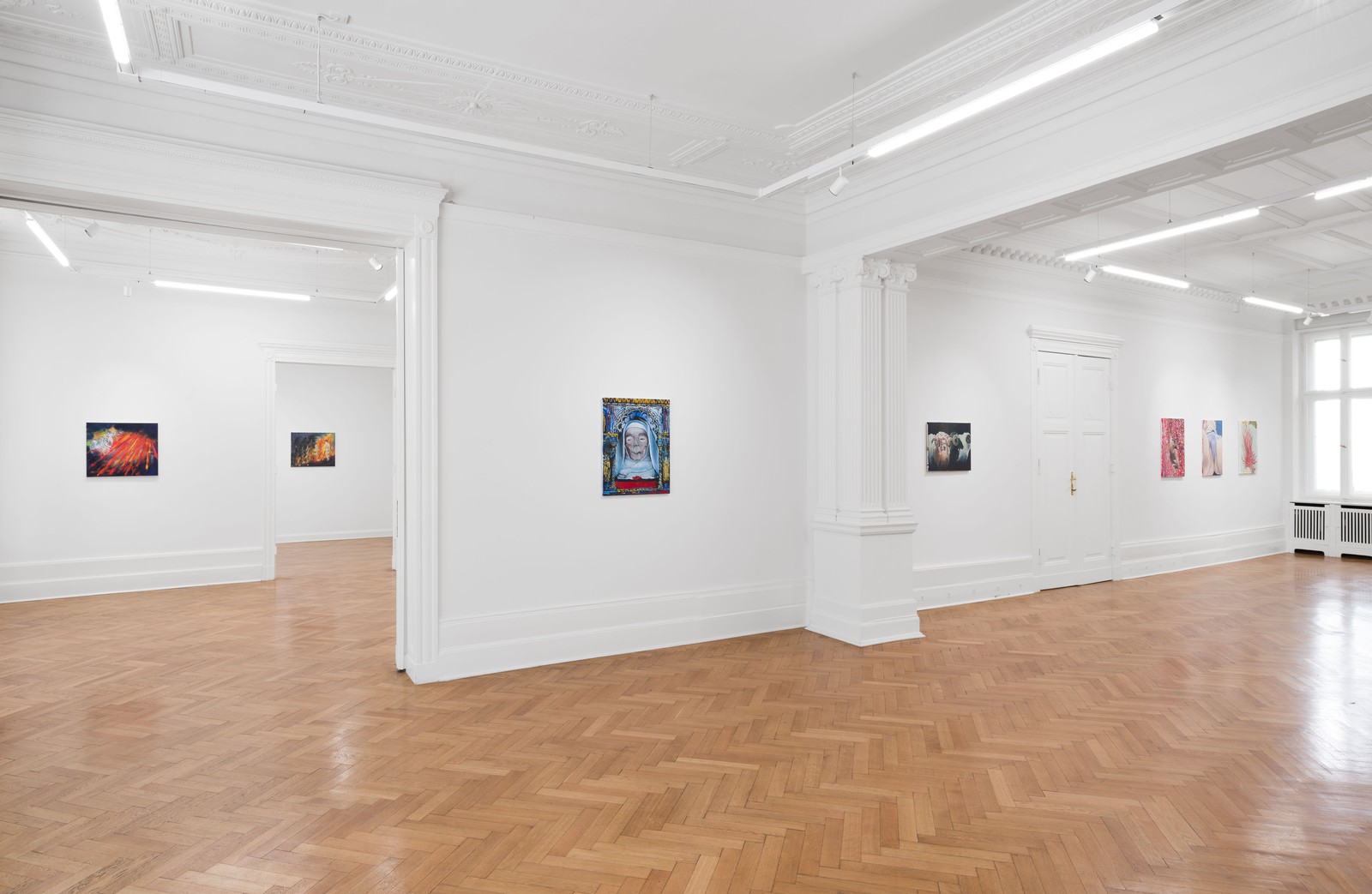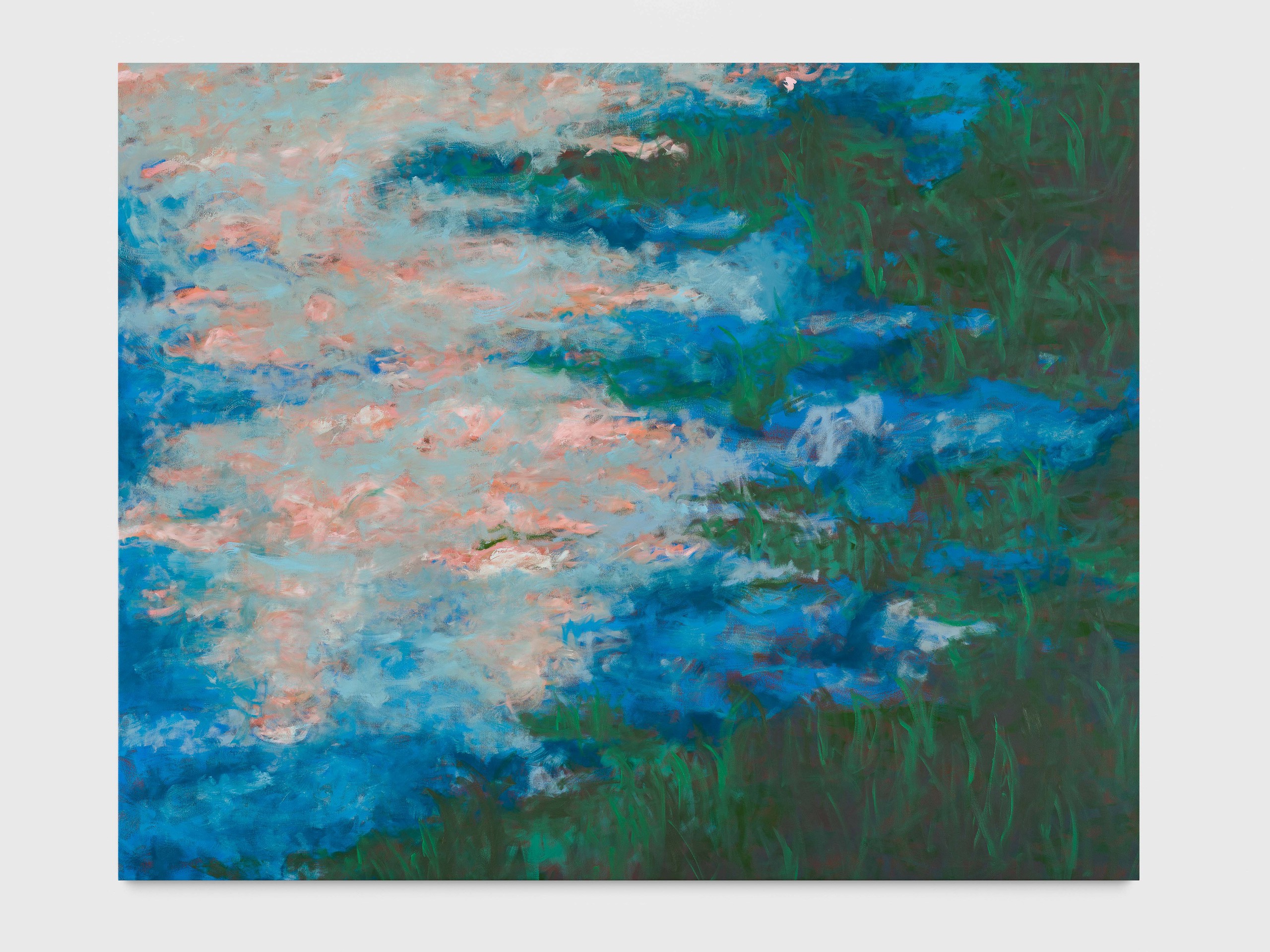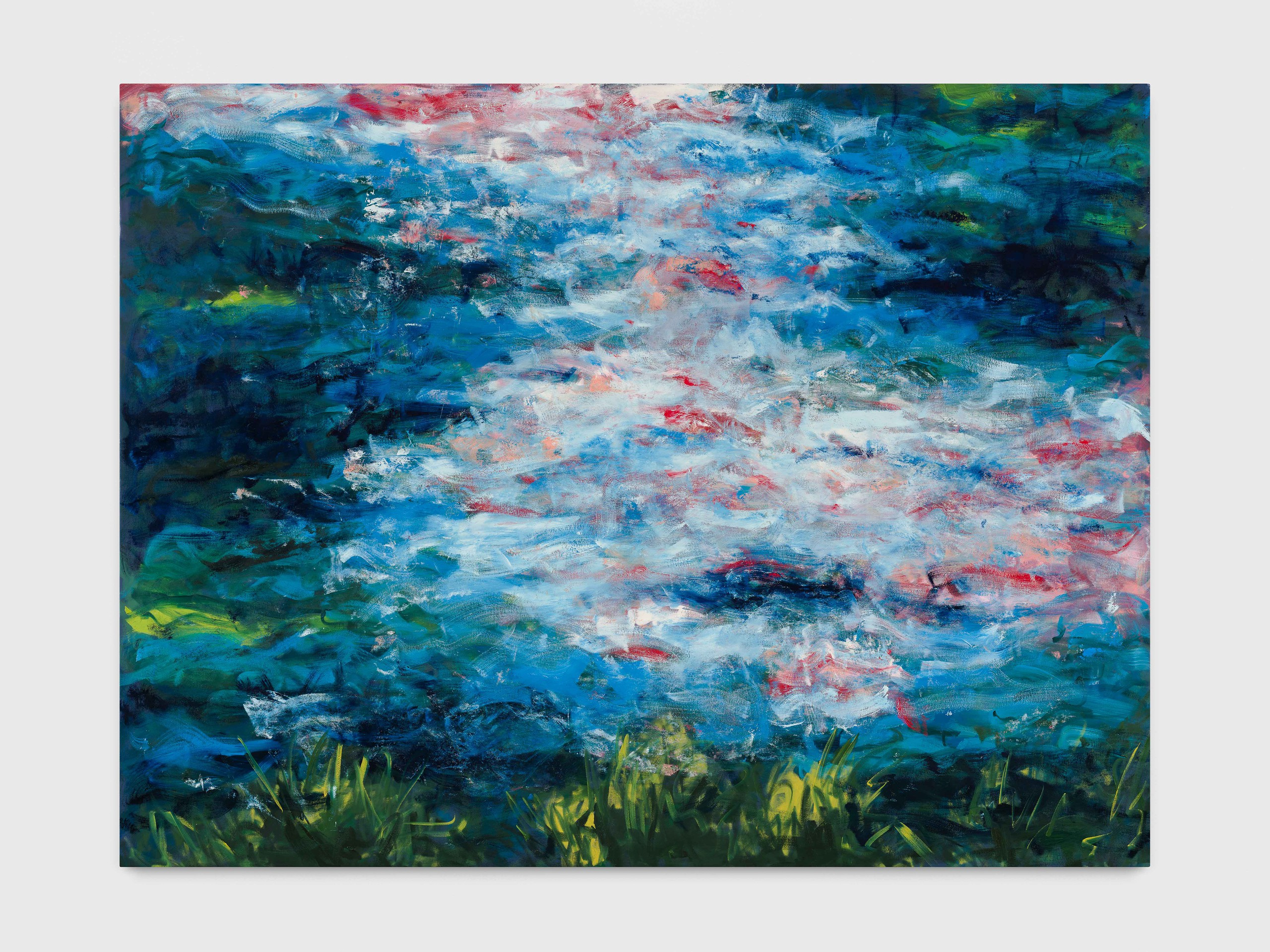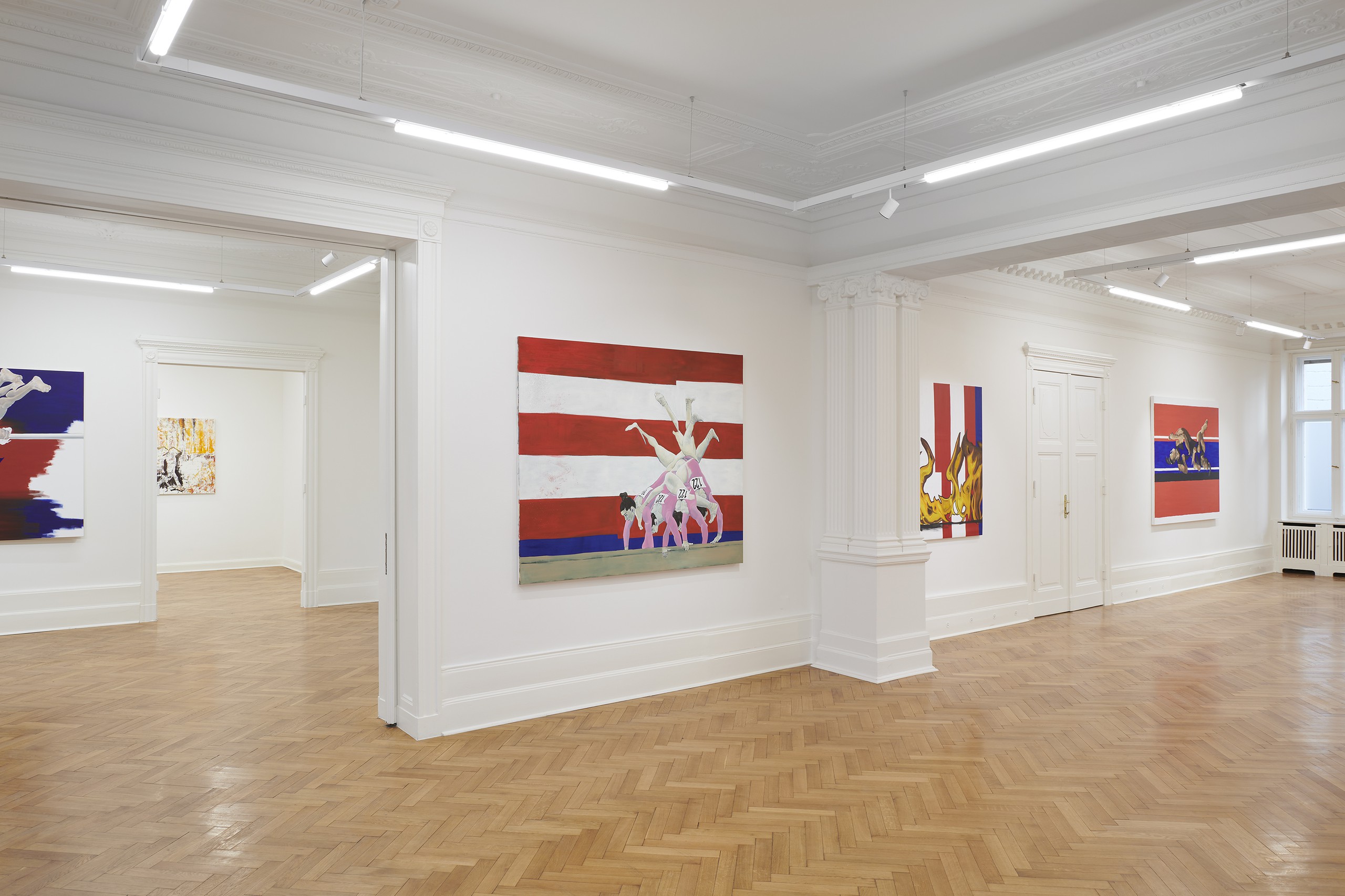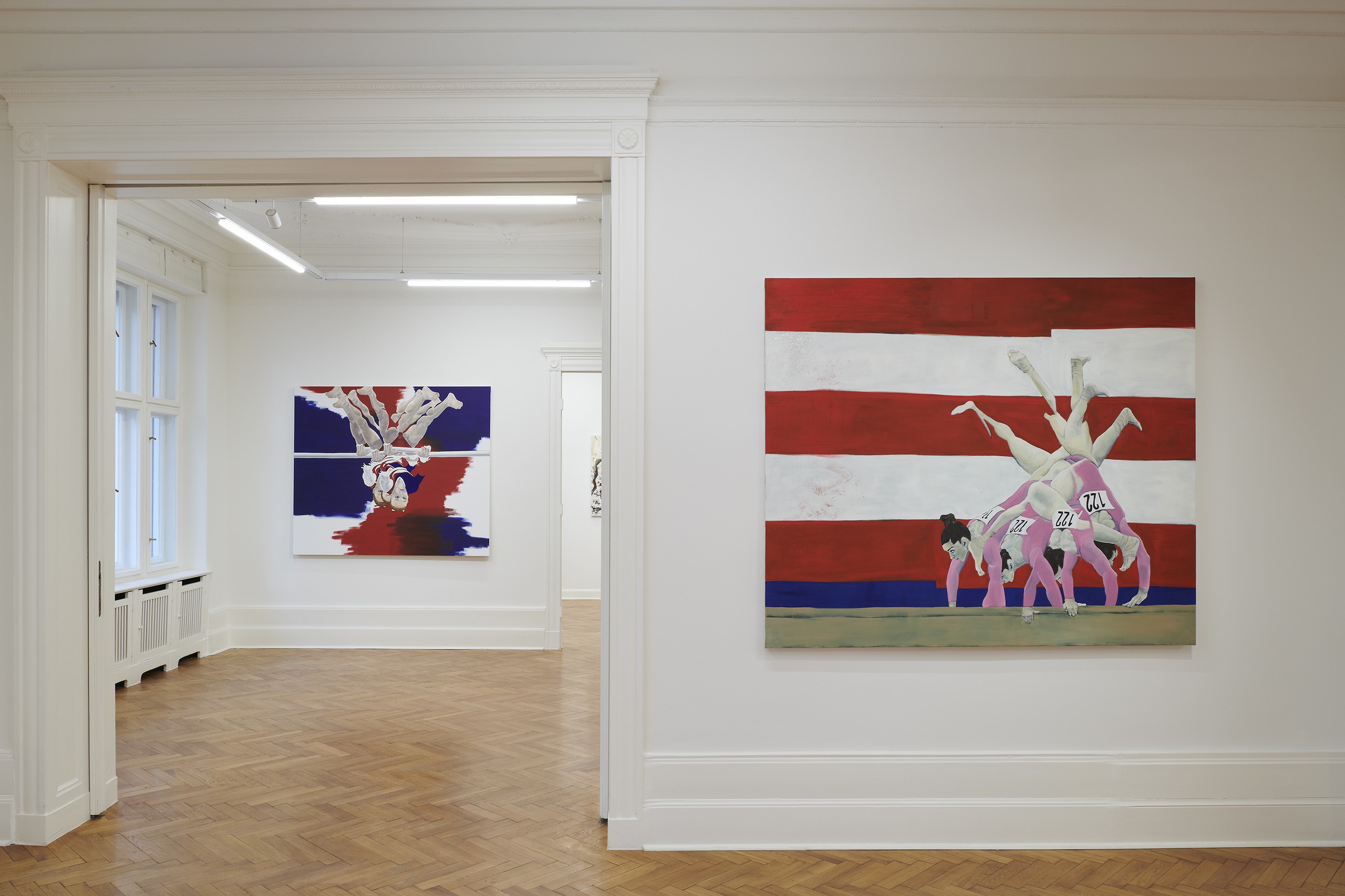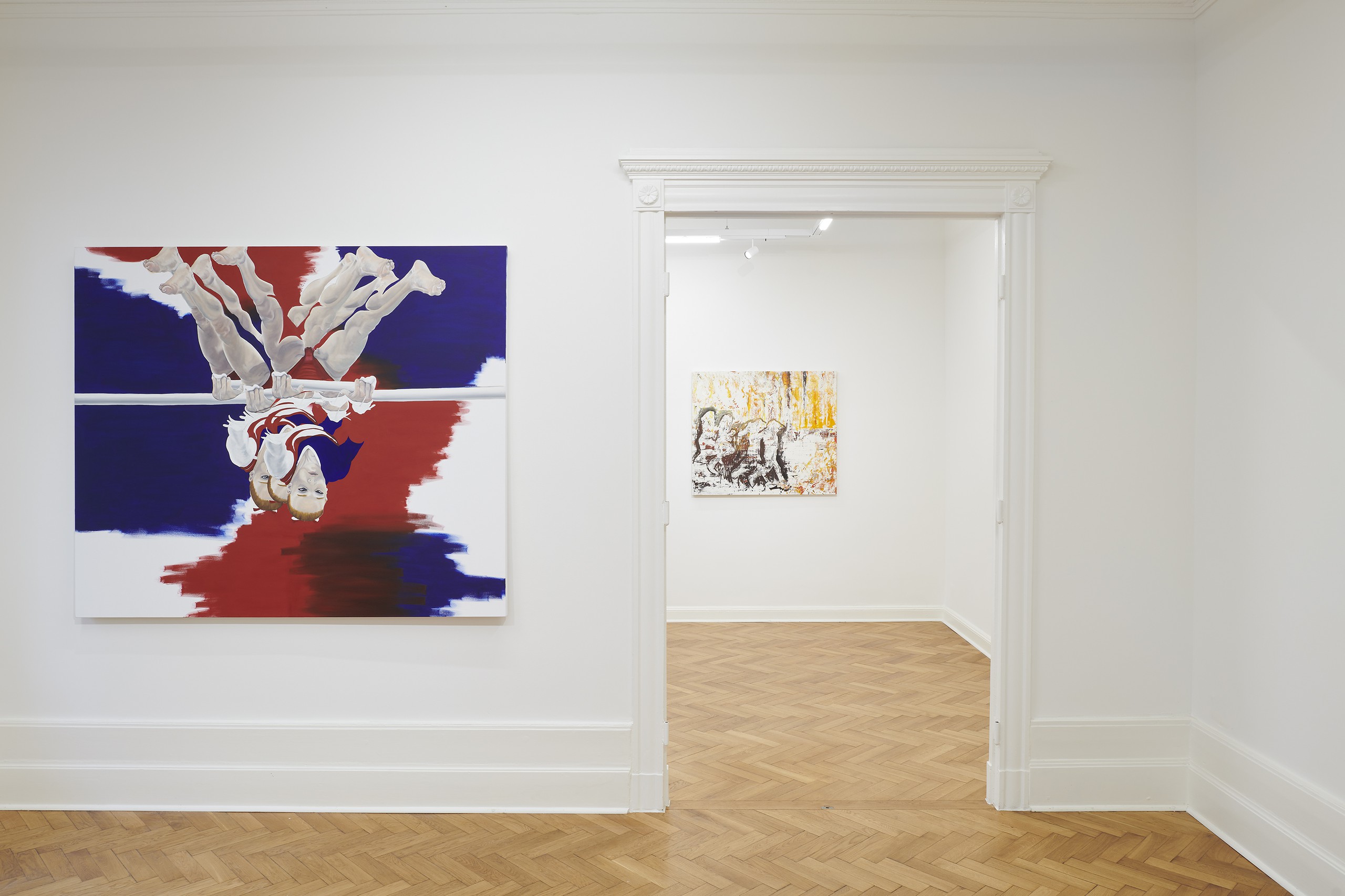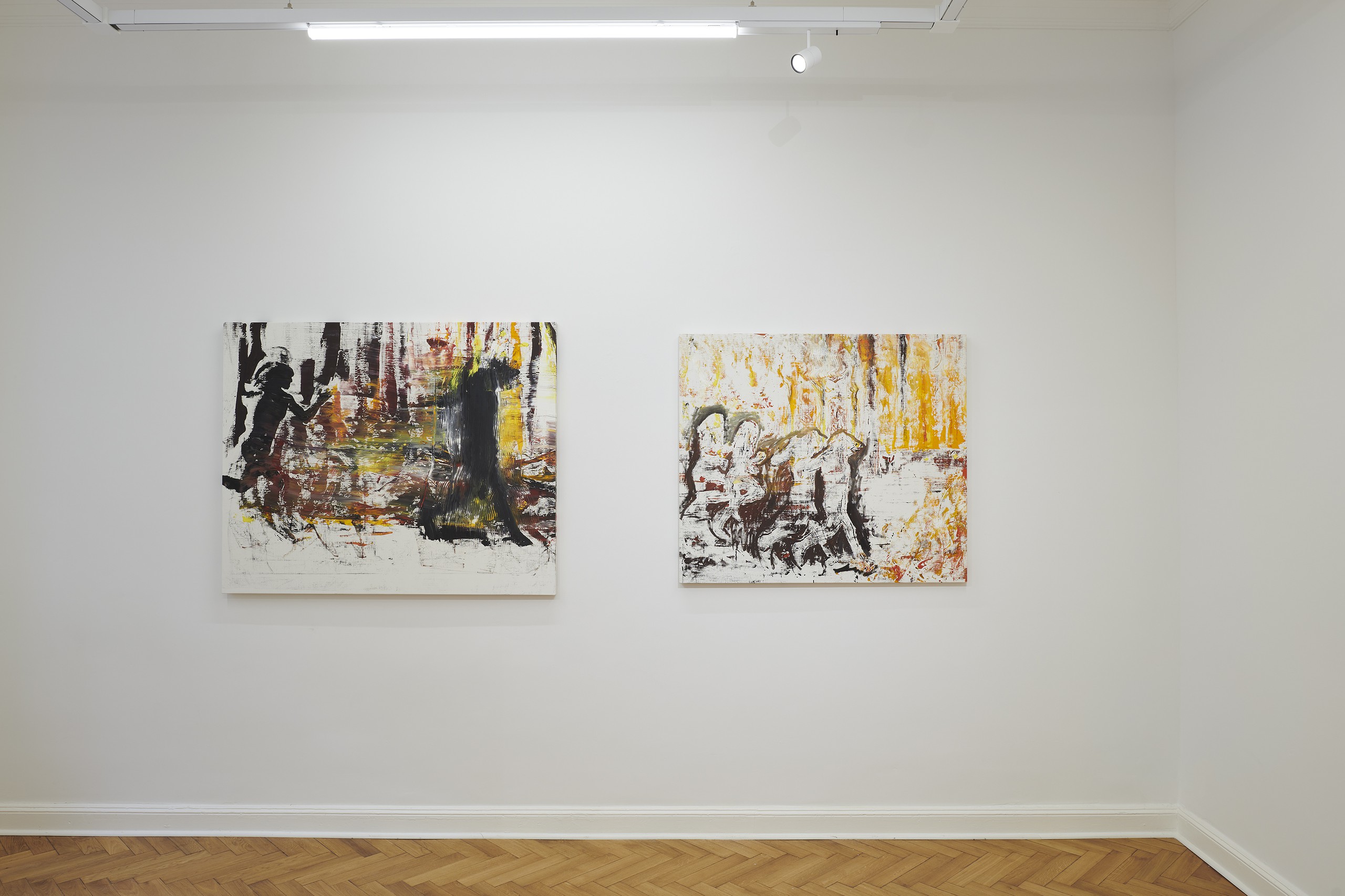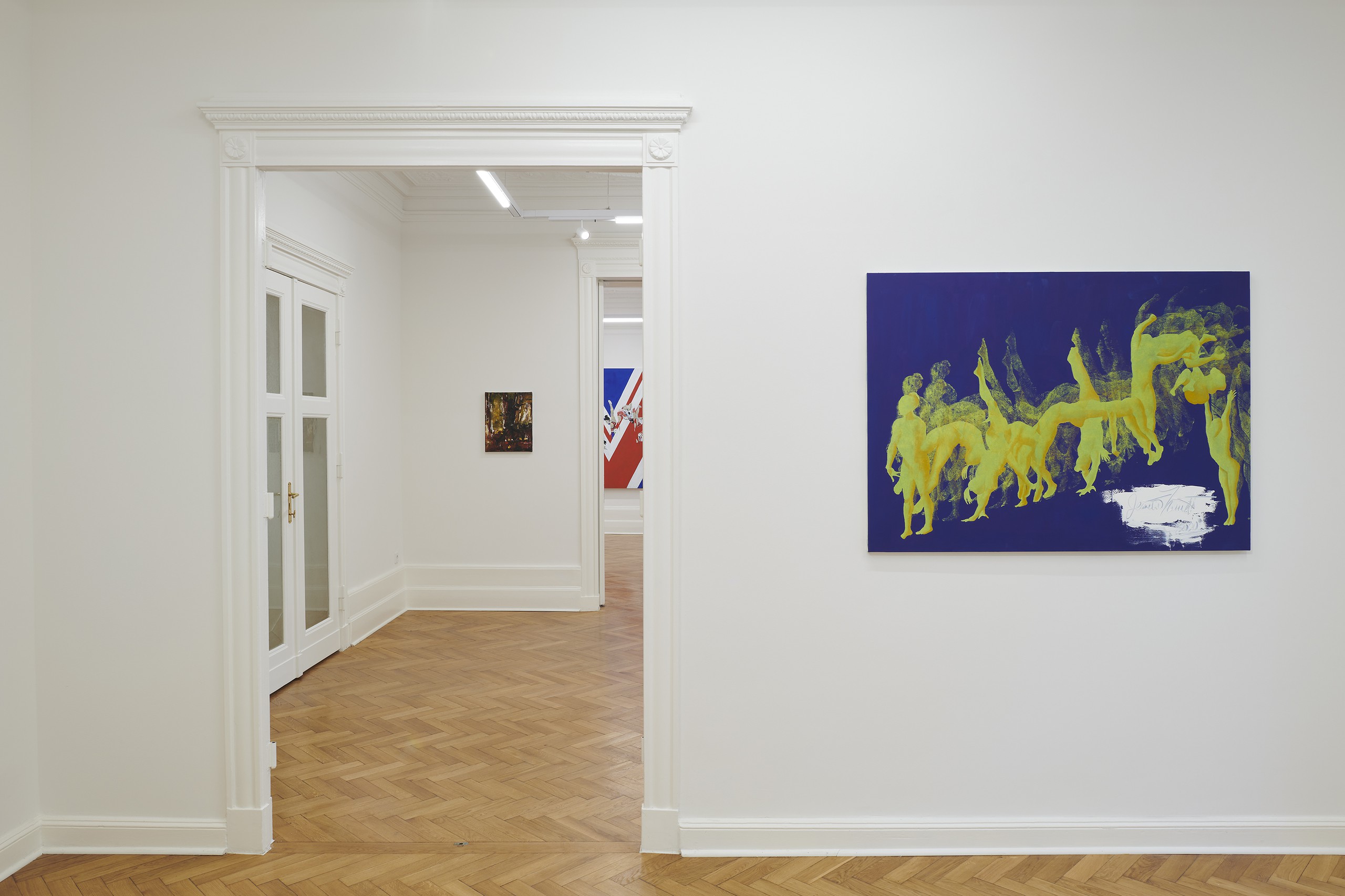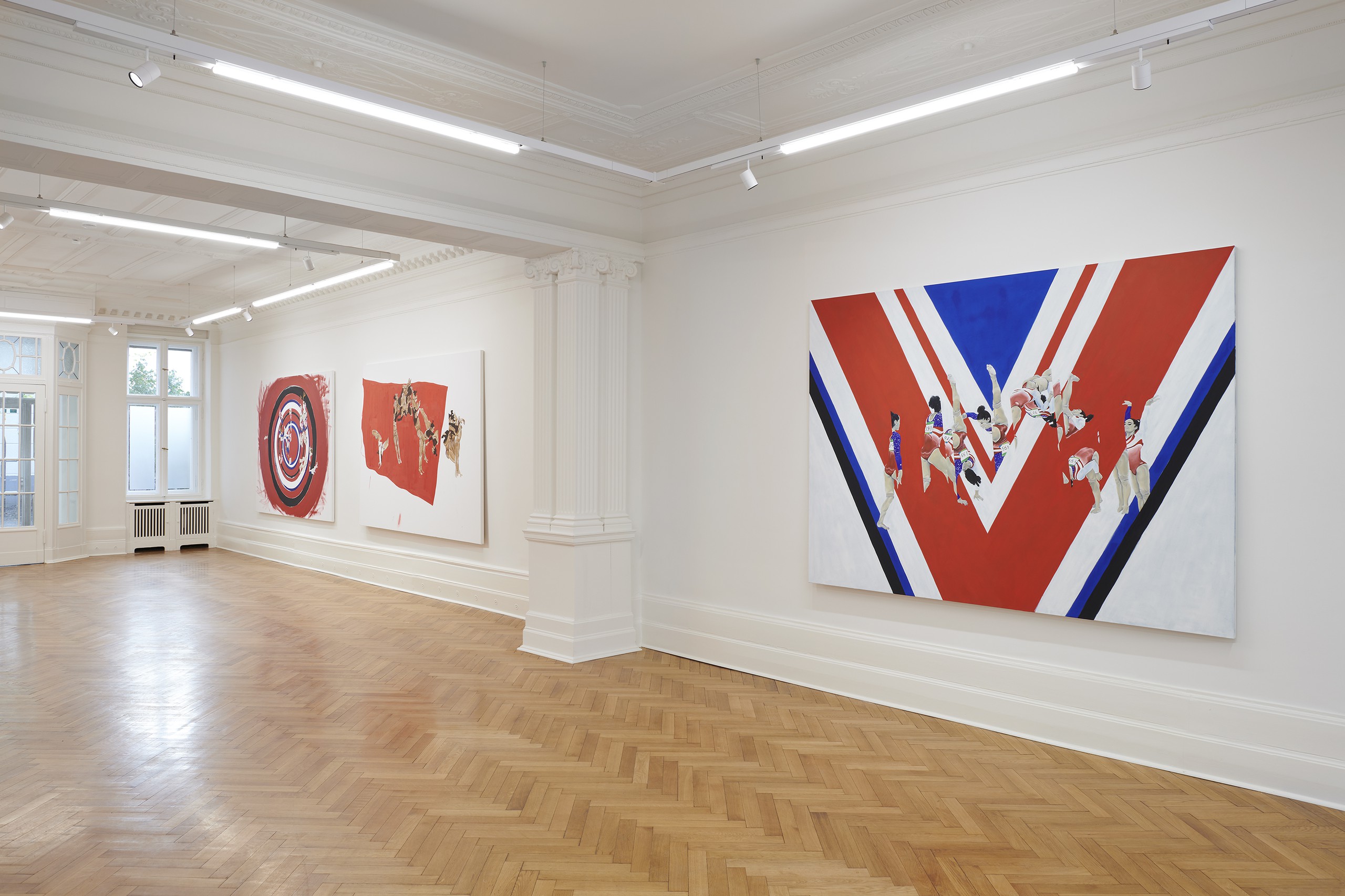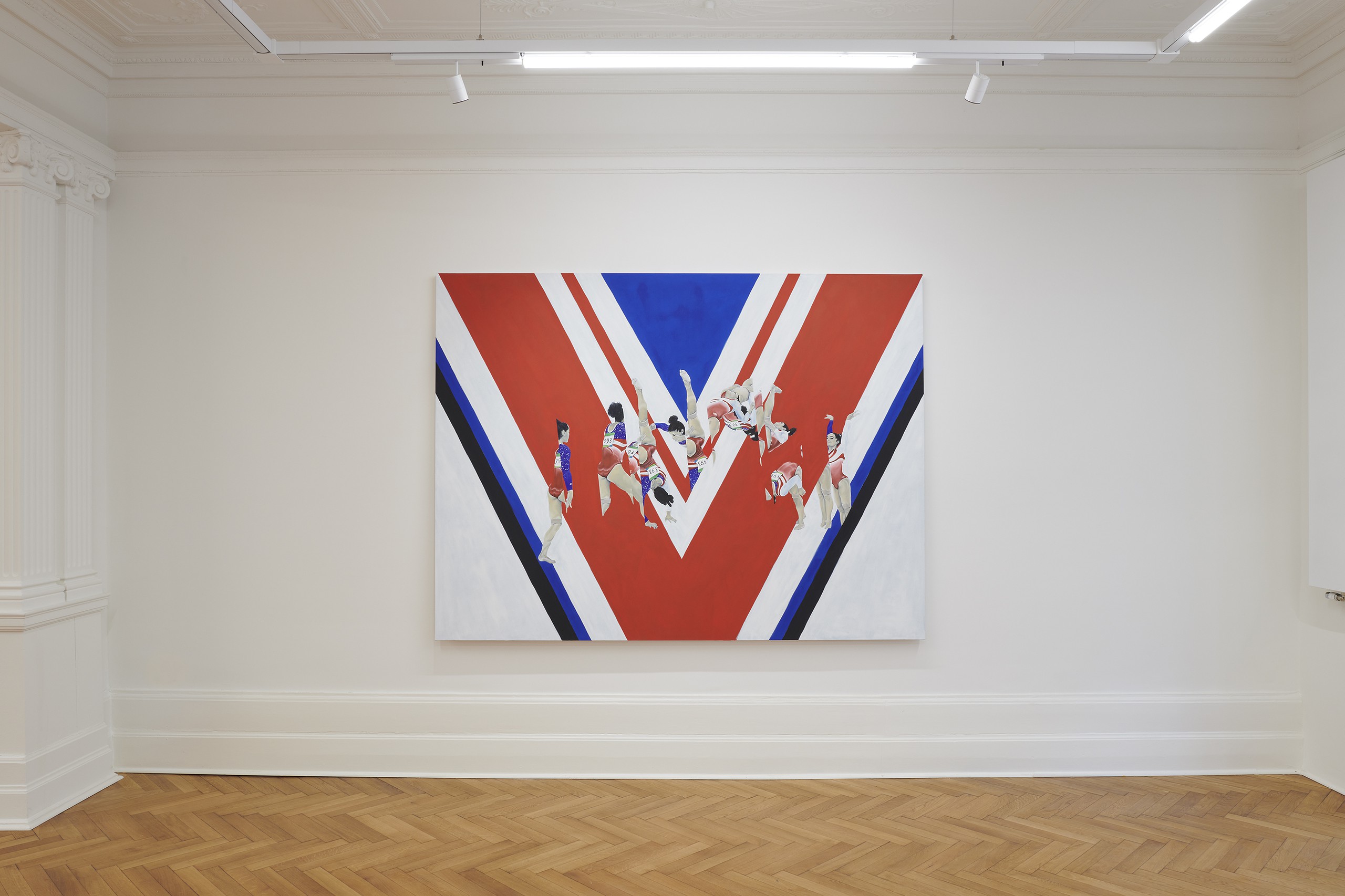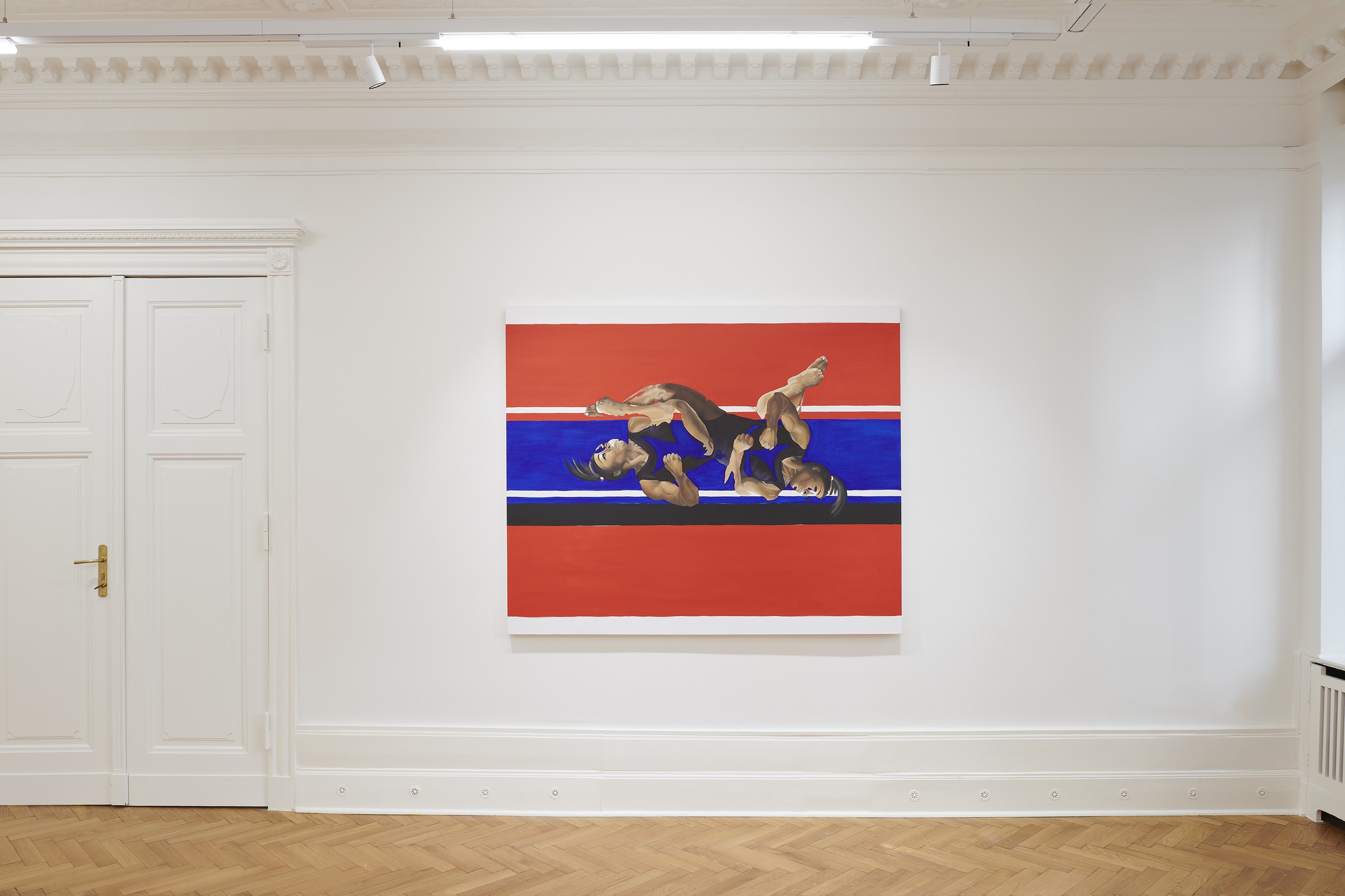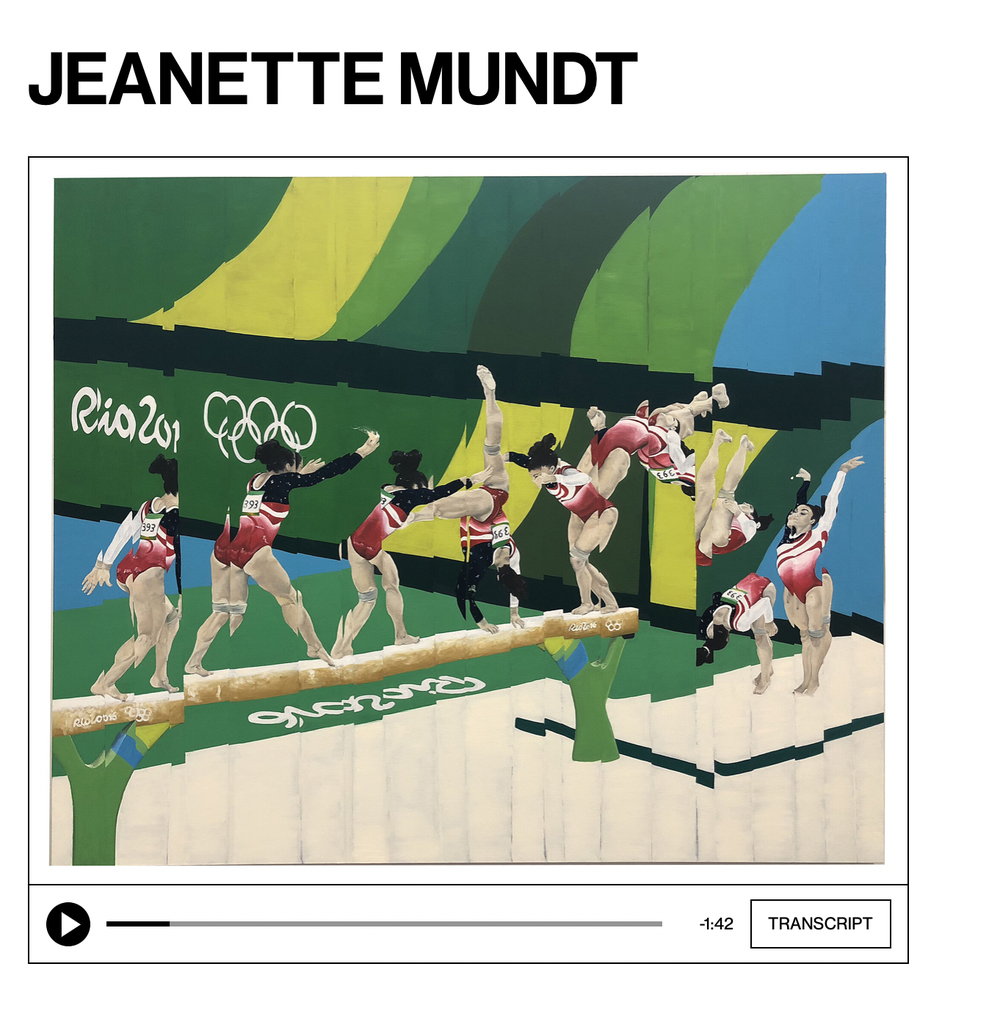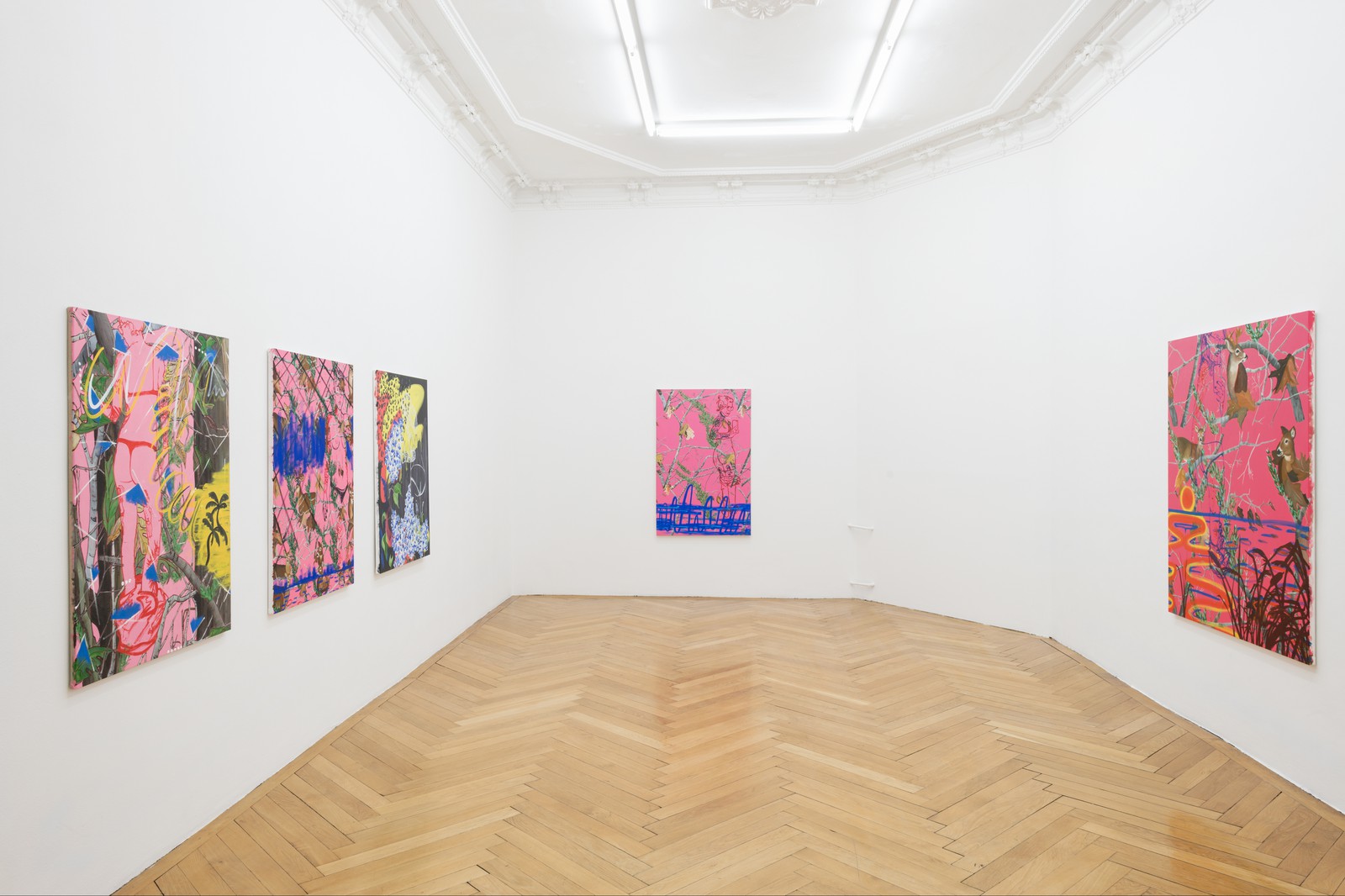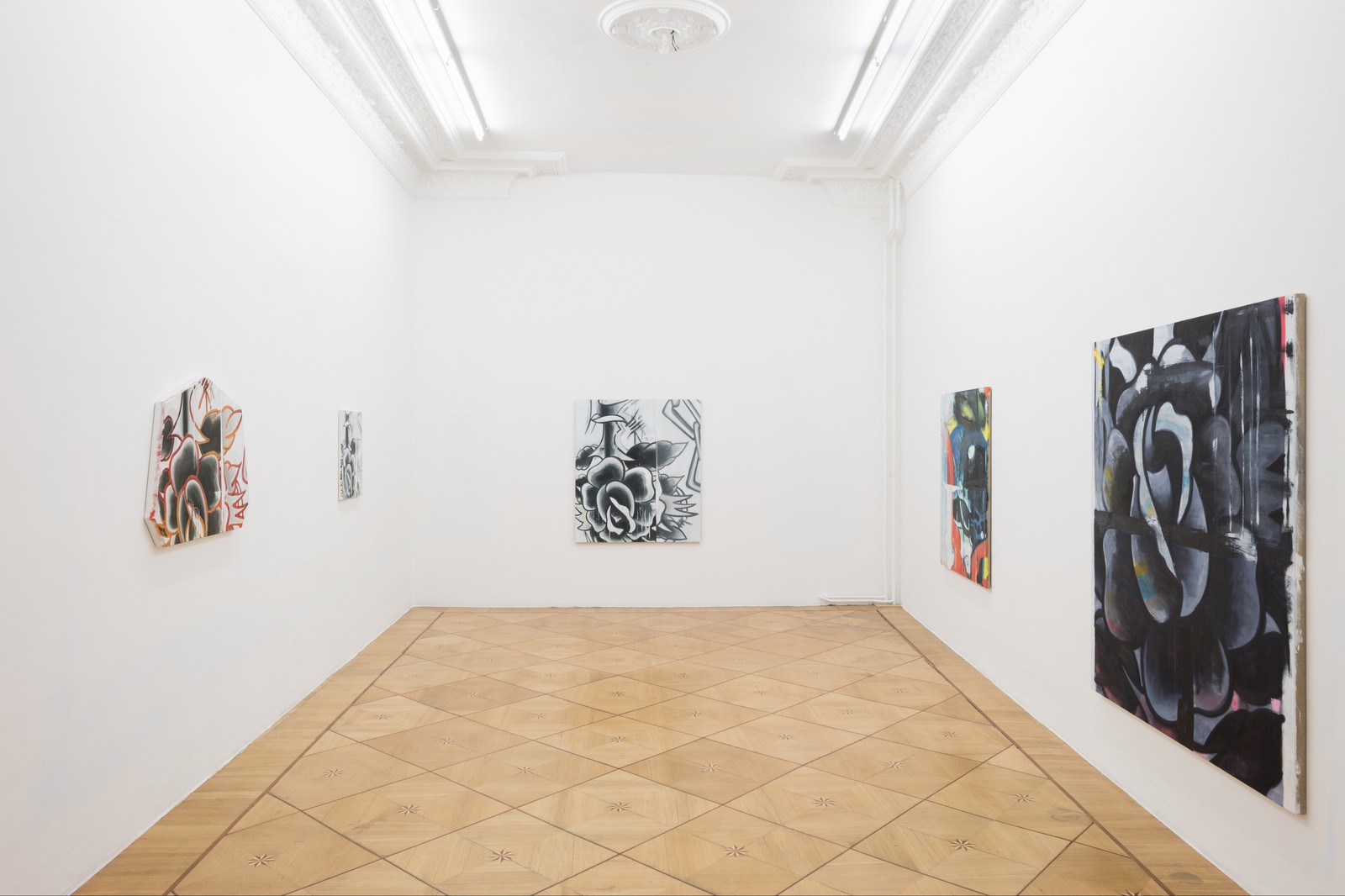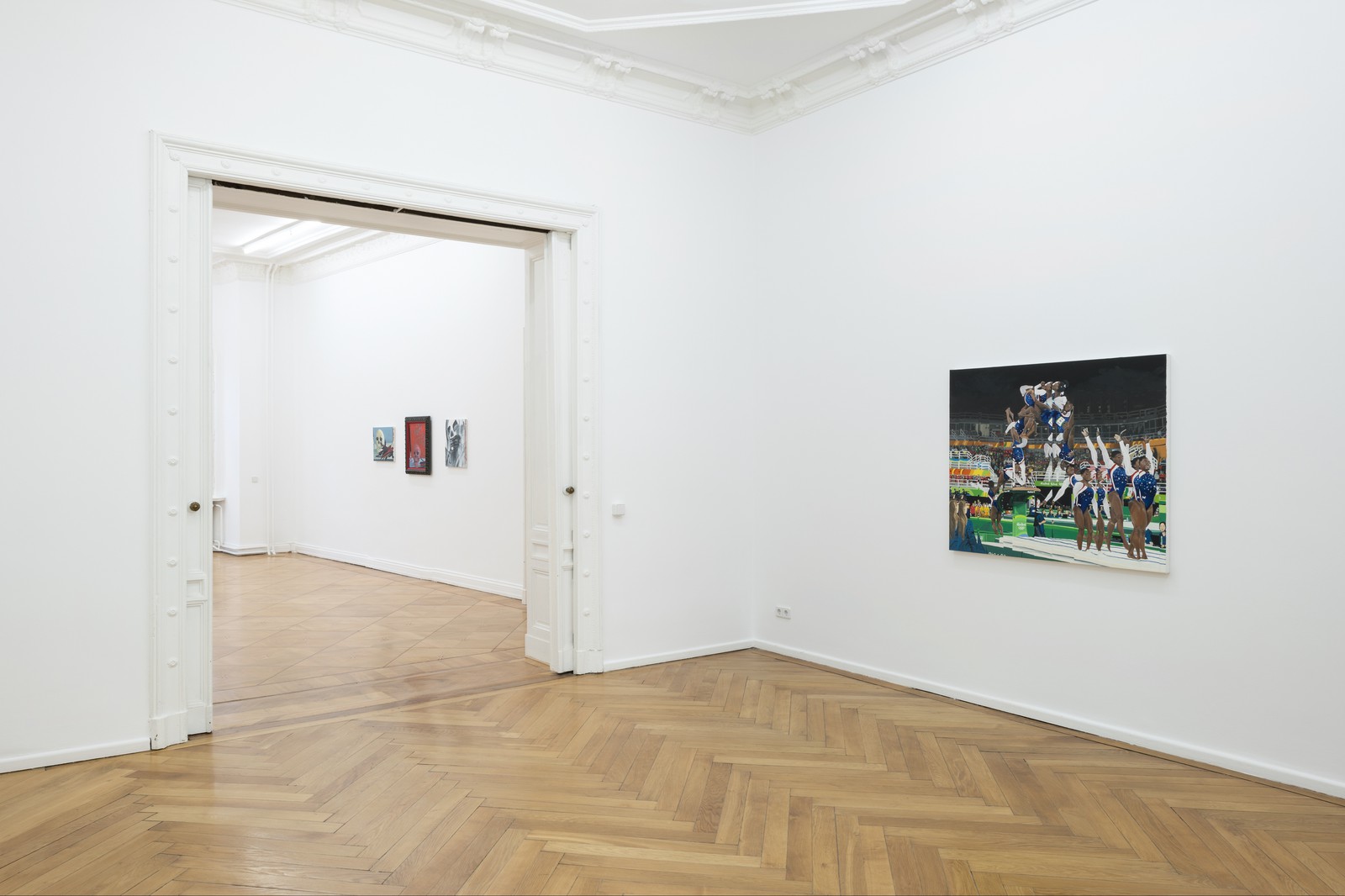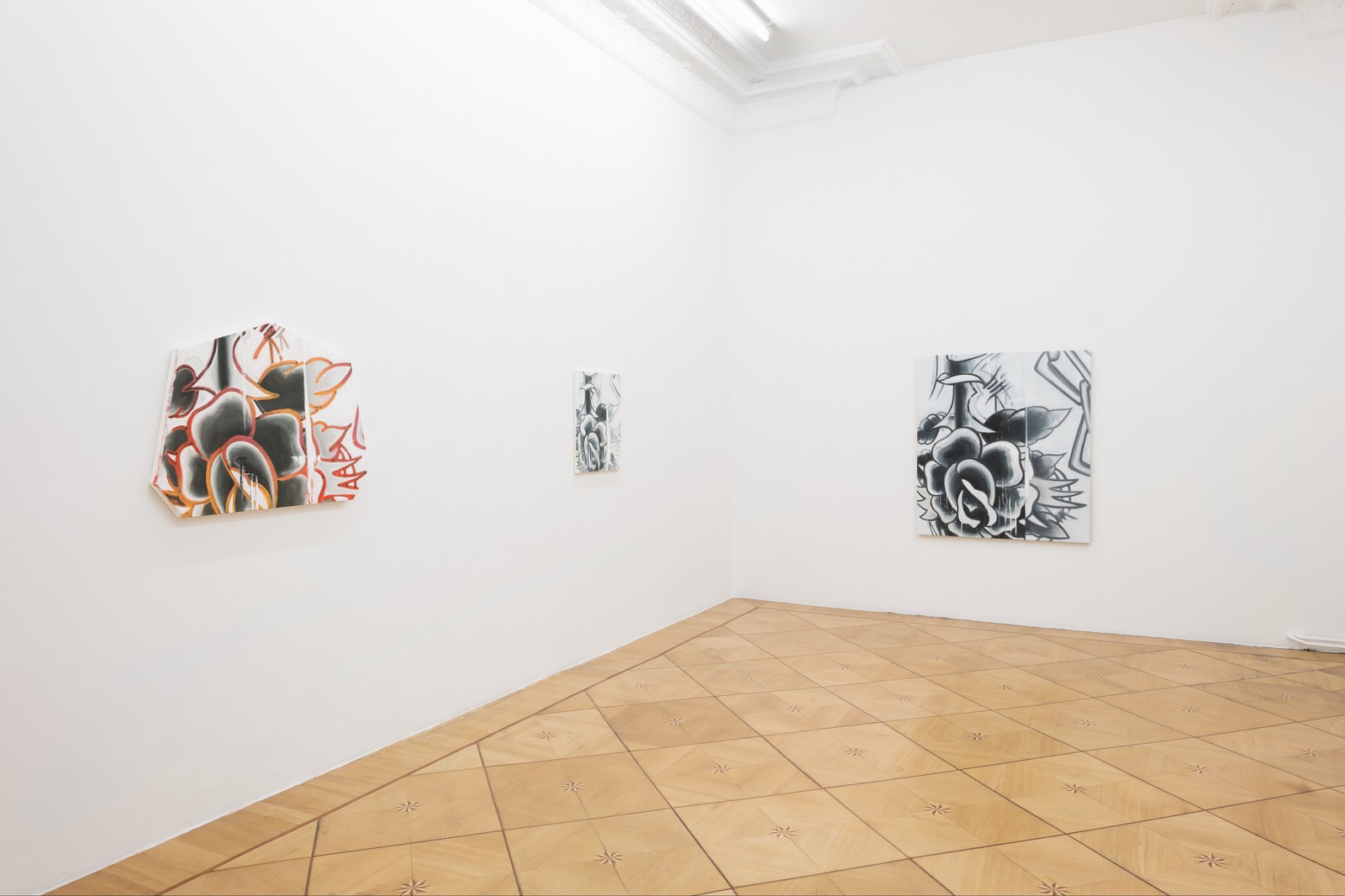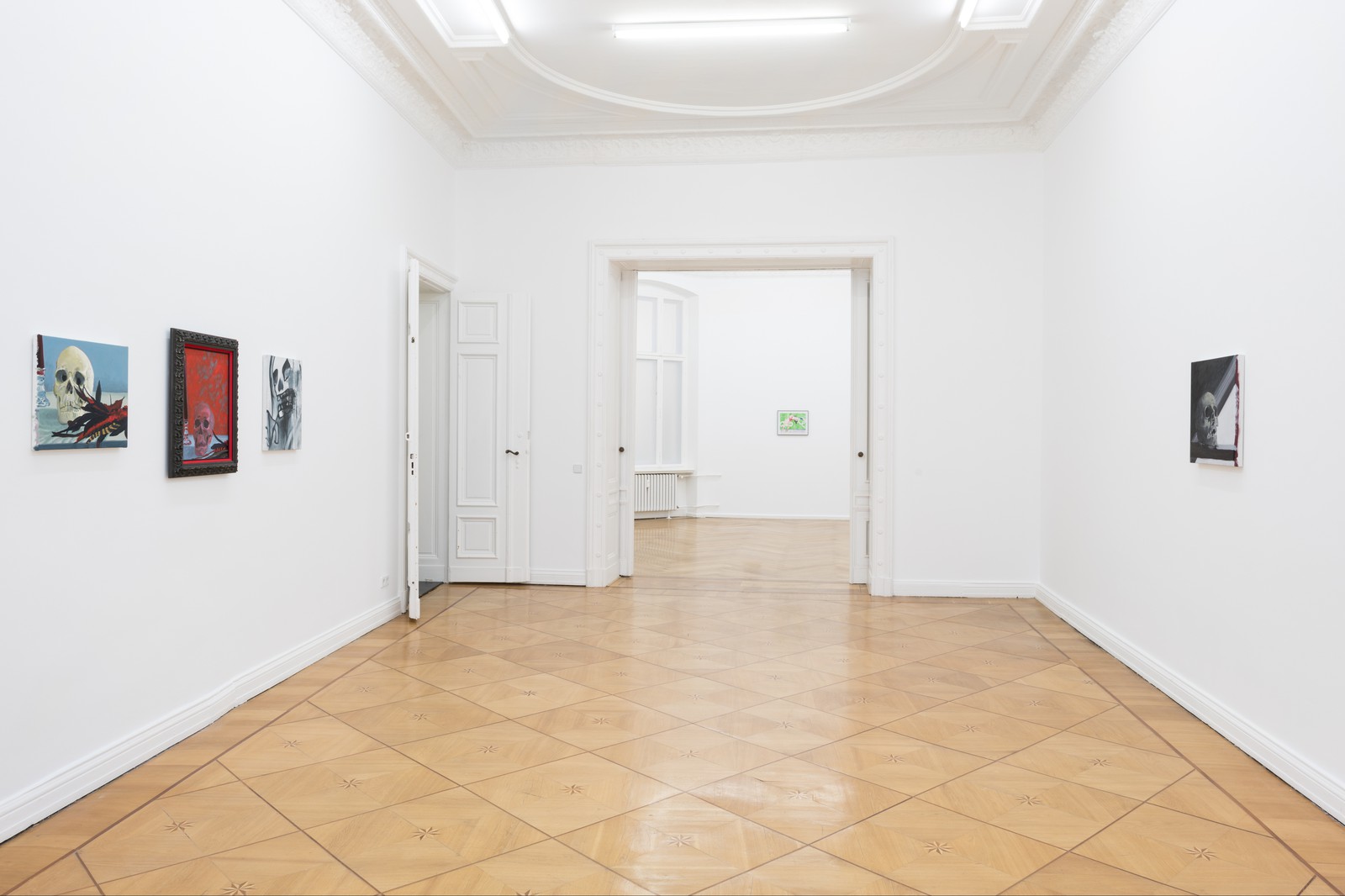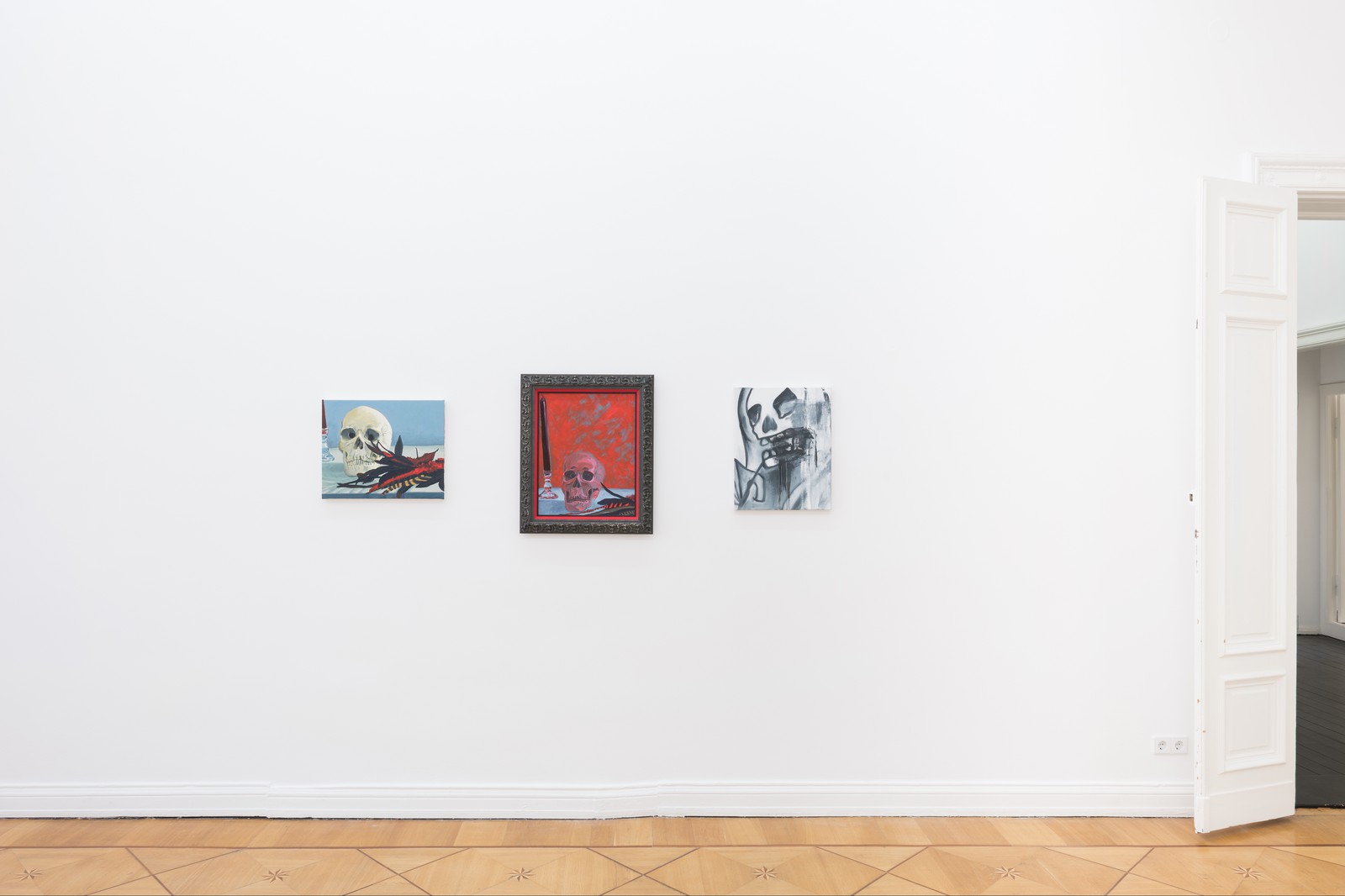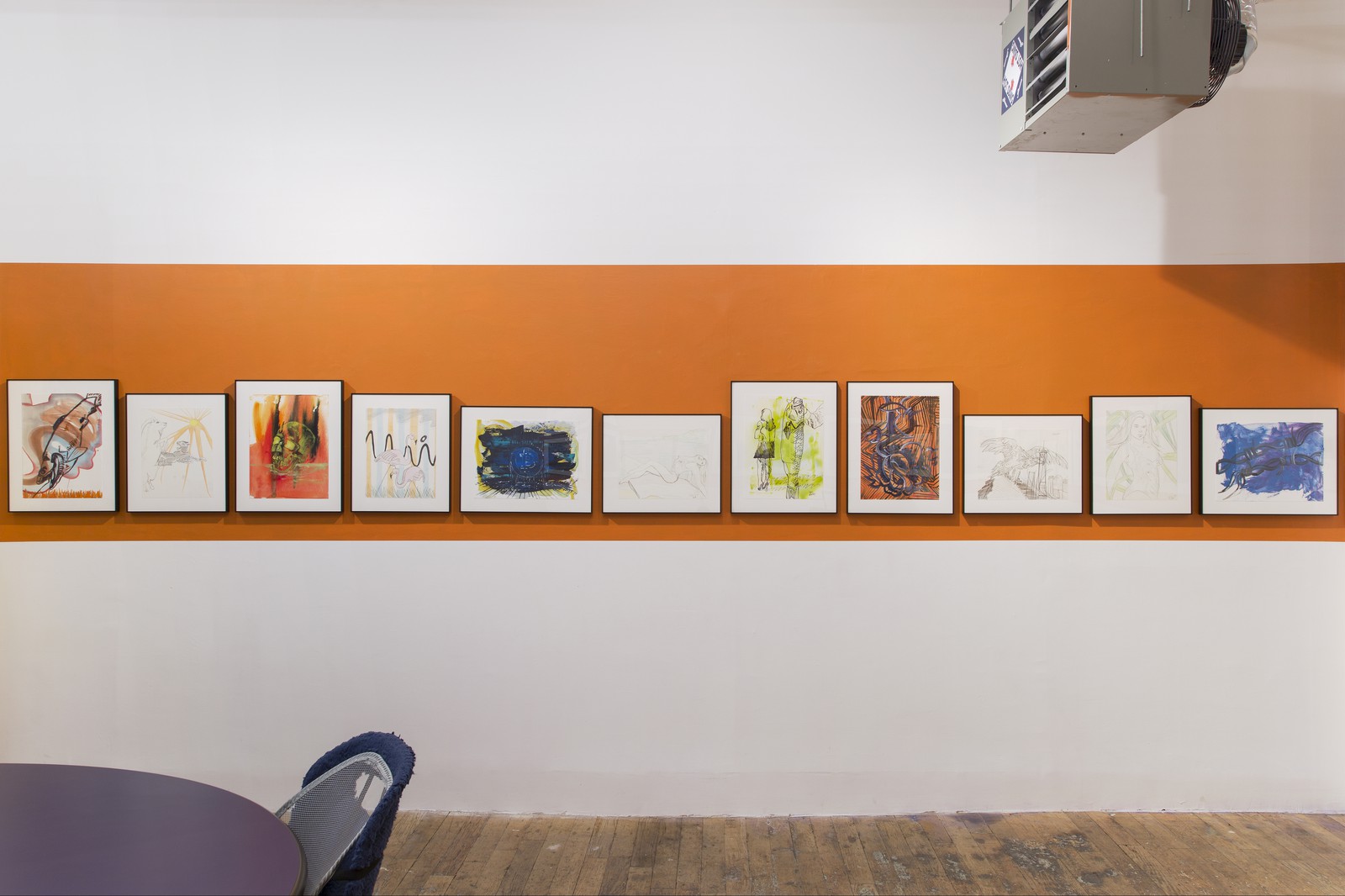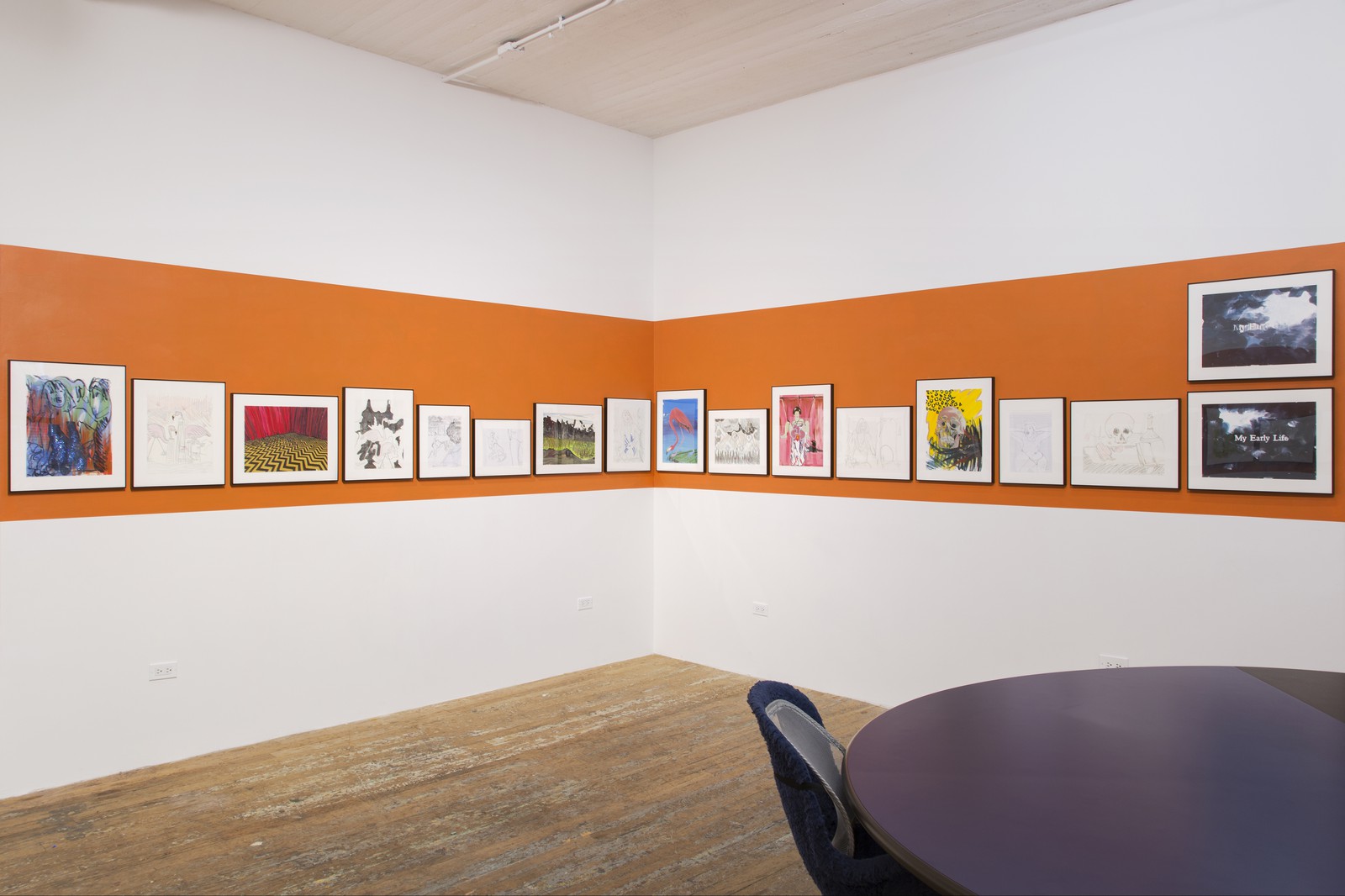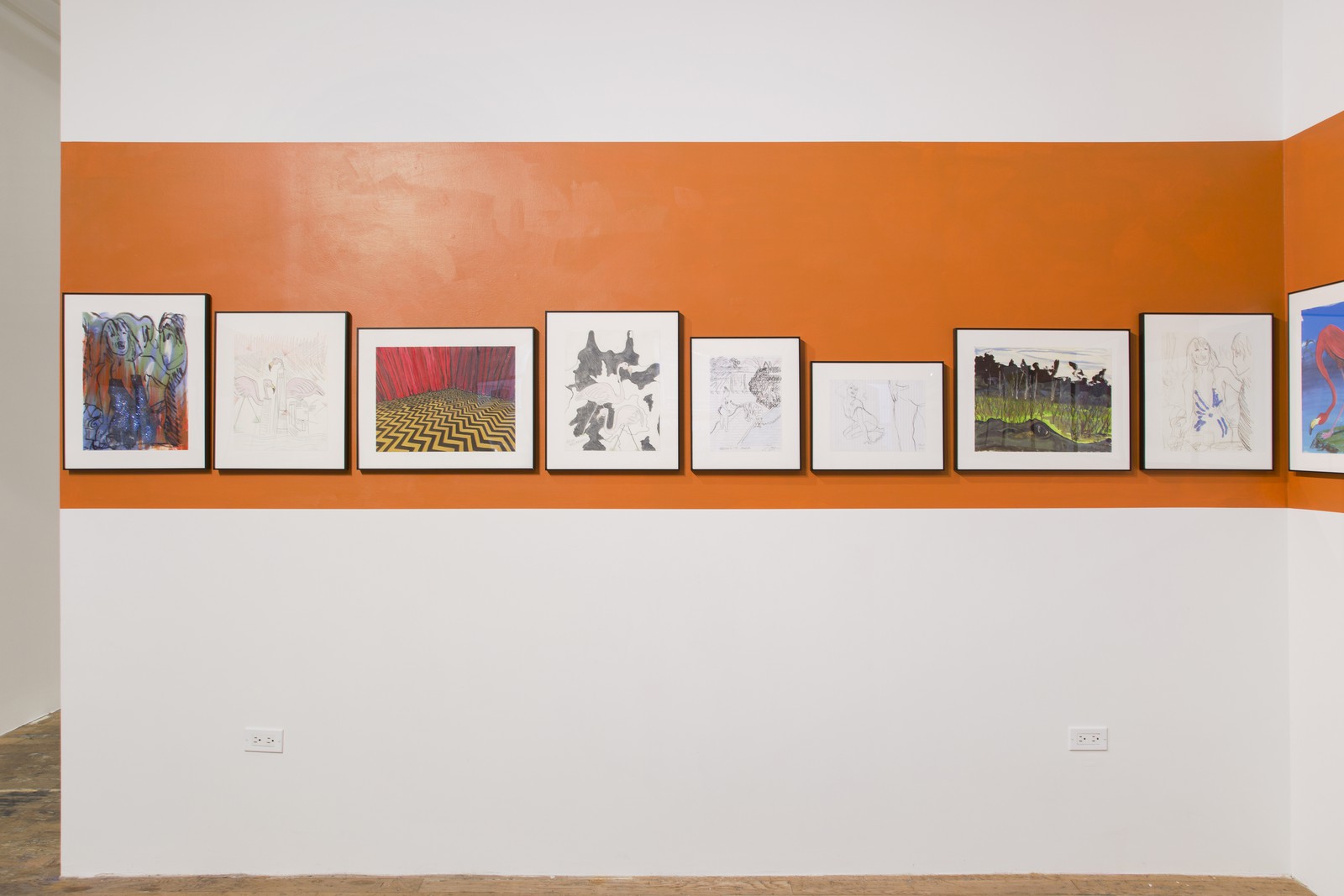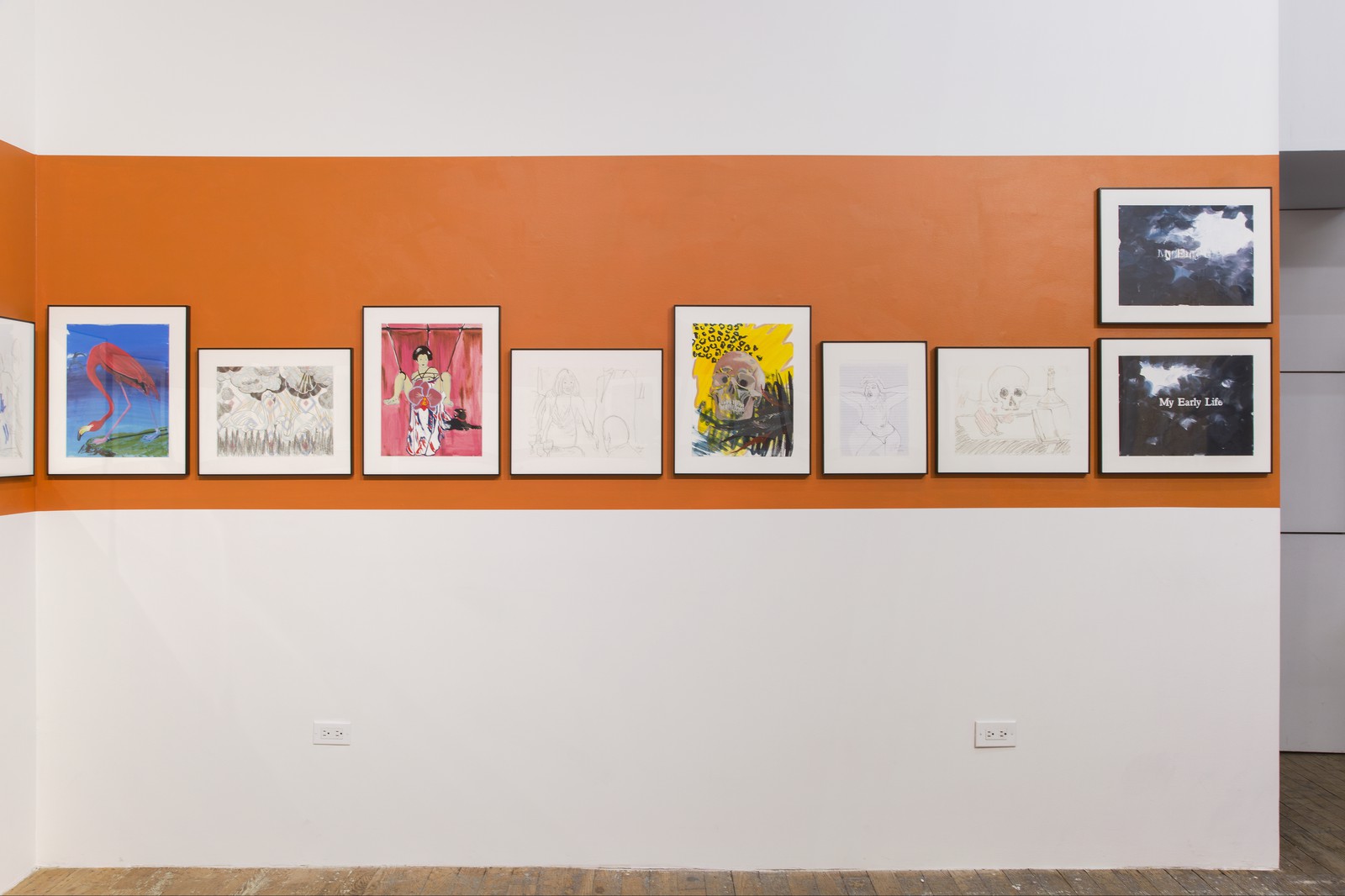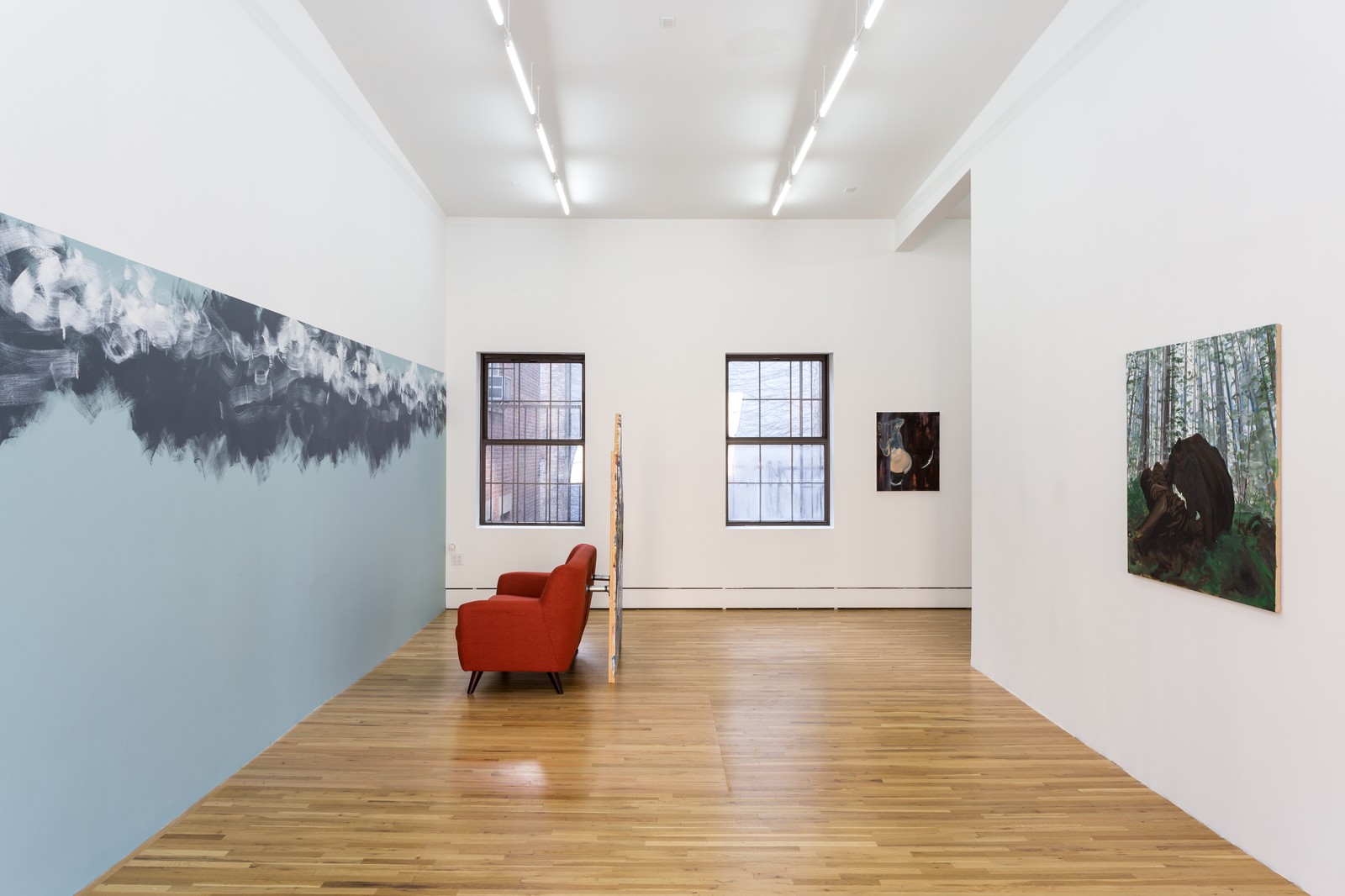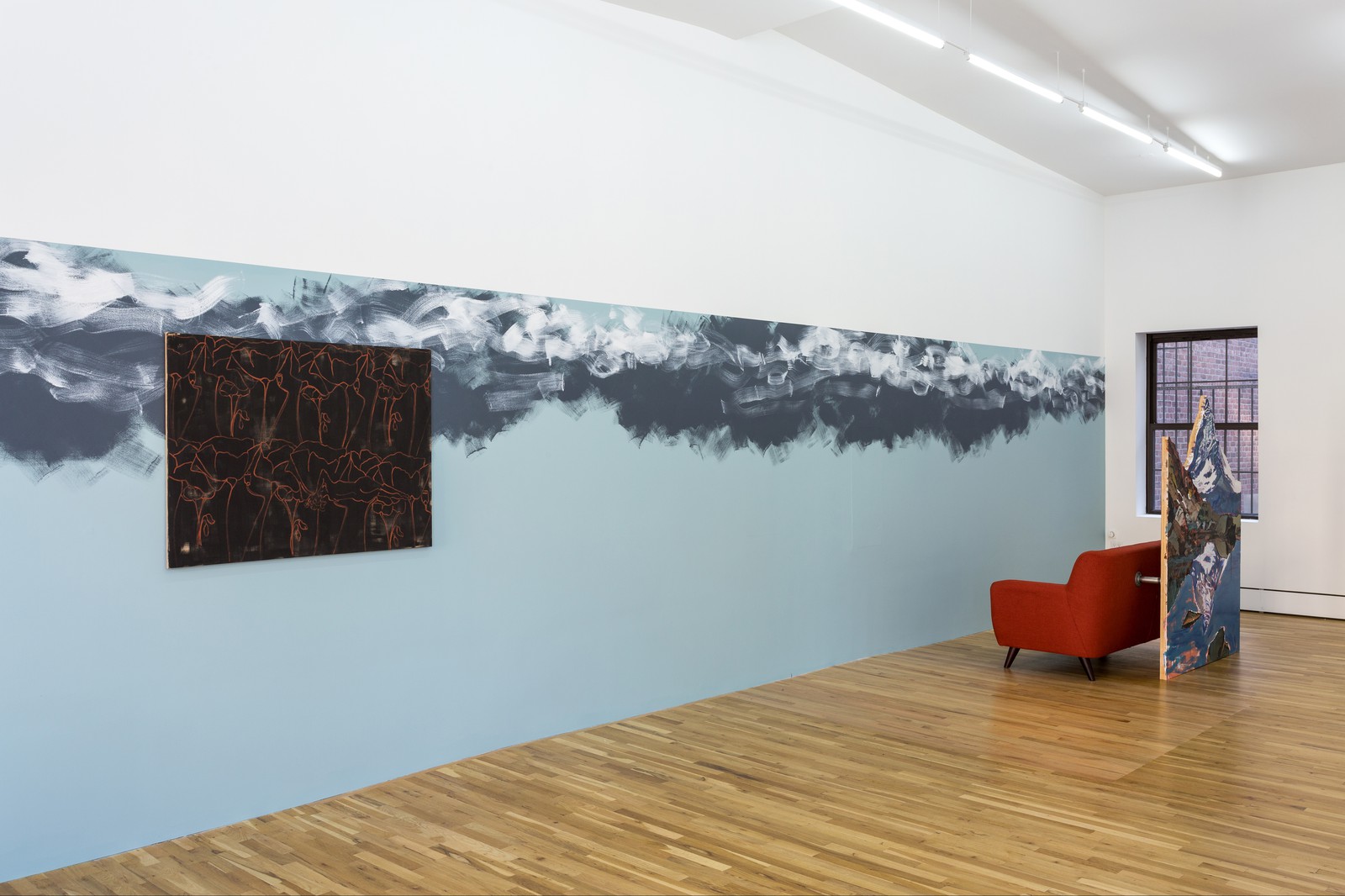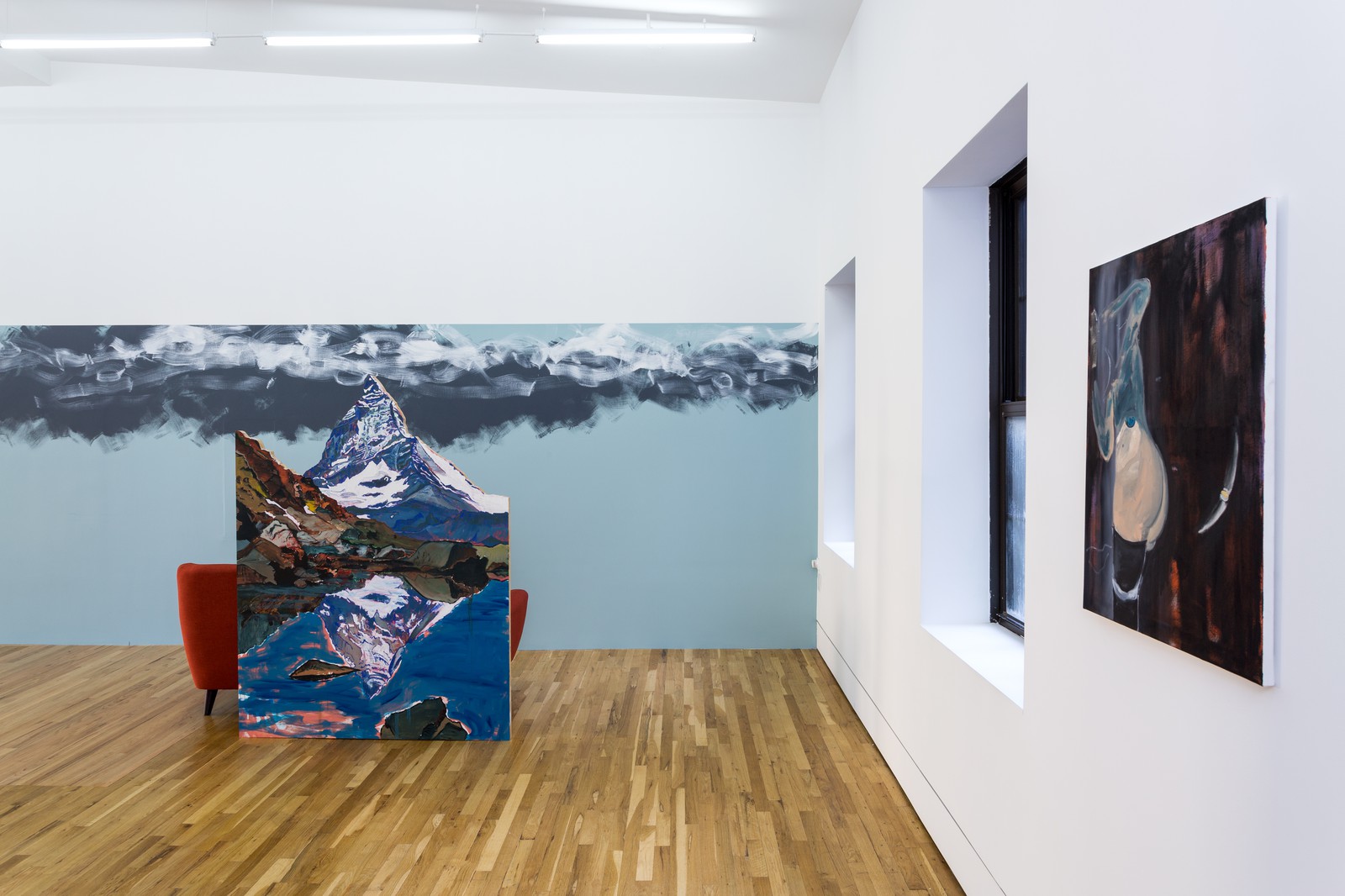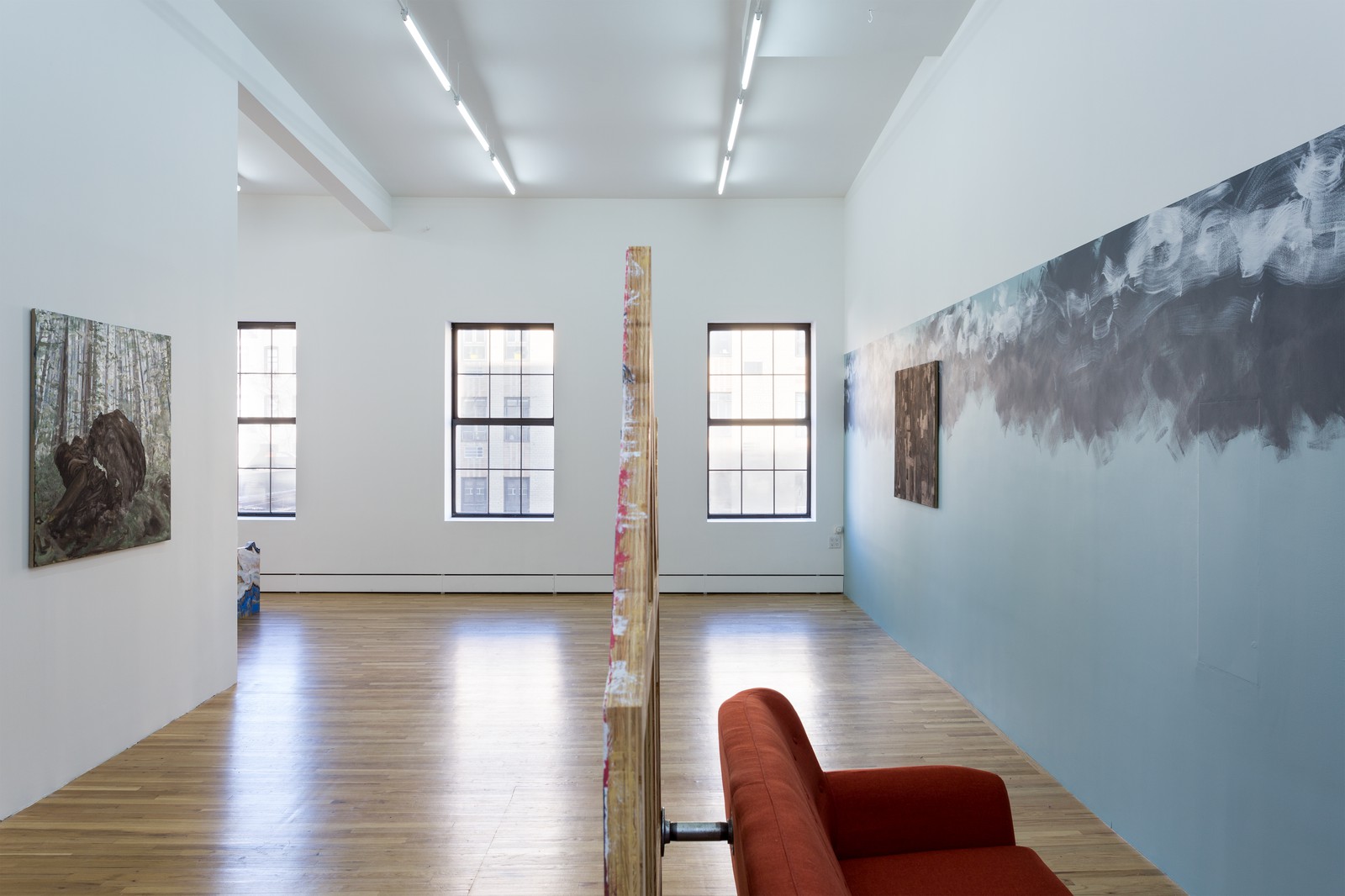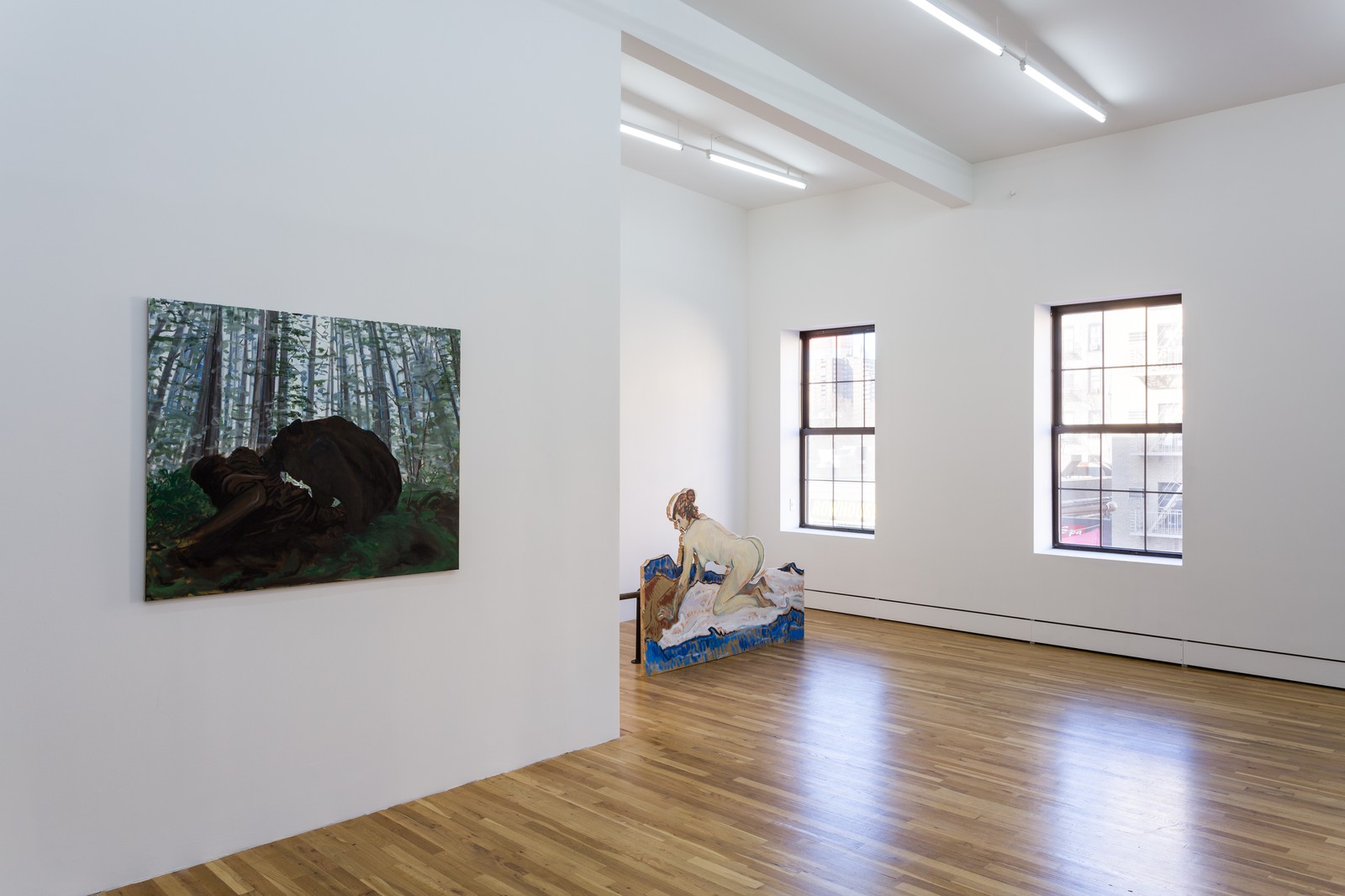Jeanette Mundt
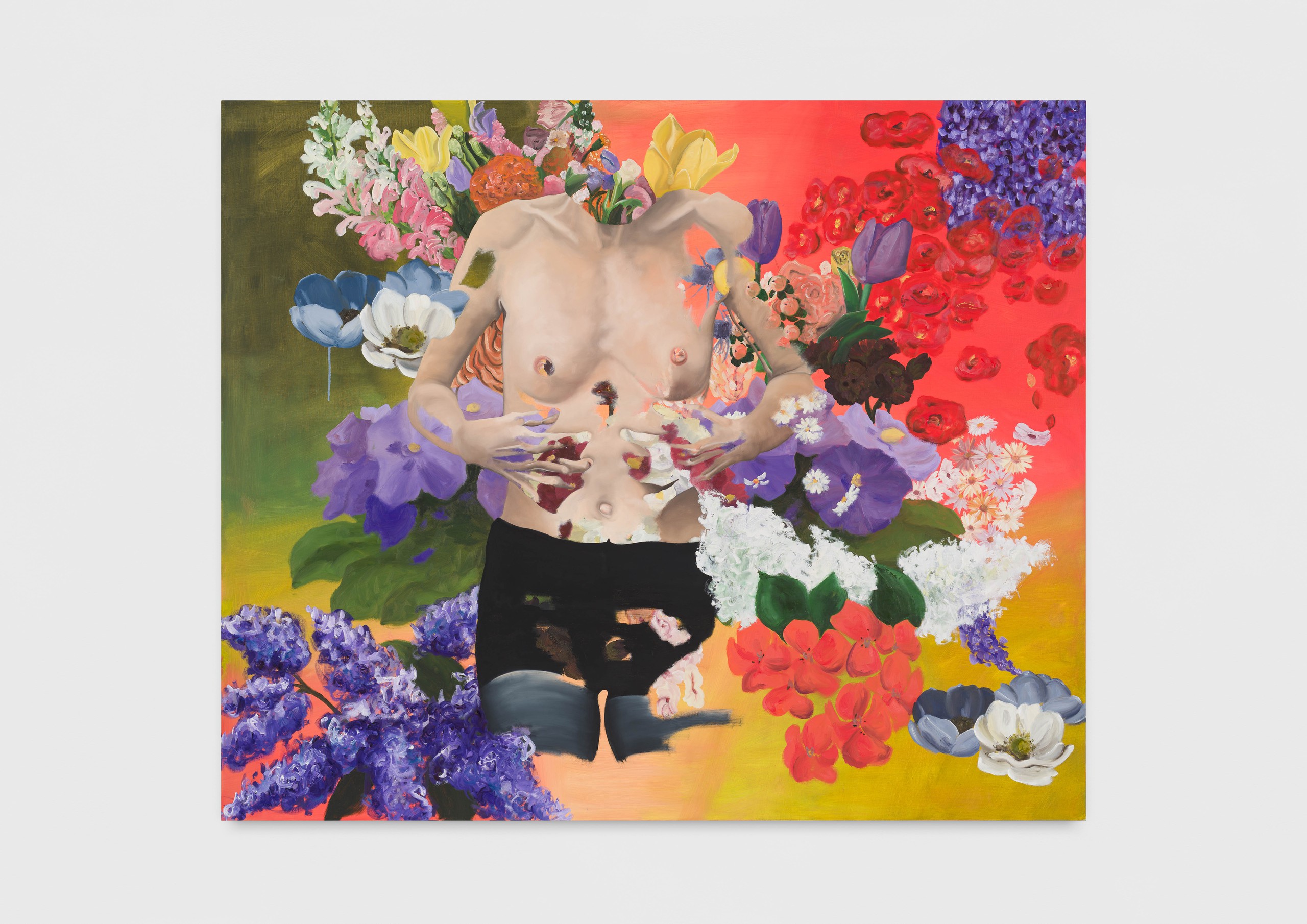
Jeanette Mundt
Another Punished, 2022
Oil on canvas
152.4 × 182.9 × 4 cm
60 × 72 × 1 1/2 in
Jeanette Mundt’s dynamic, formally omnivorous practice mirrors the ever-changing velocity of culture. Her lush paintings freely tap a variety of input, ranging from Google image searches, Flickr accounts, magazines, and personal photographs to her own exhibition documentation. Each series that she creates begins as an attempt to confront the general nature of images on the internet, particularly the seemingly endless mutability that results when an image enters the digital world. In her different bodies of work, Mundt combines iconic references with others that are more personal and intimate in her quest to perpetually reconfigure the image—gesturing towards how our understanding is always in flux and therefore we can’t possibly be consistent in our seeing, in our psychic space.
Jeanette Mundt (b. 1982, USA) lives and works in New York. She has exhibited in solo and group exhibitions internationally at venues including TANK, Shanghai; New Museum, New York; G2 Kunsthalle, Leipzig; Westfälischer Kunstverein, Münster; Muséed’art Contemporain, Bordeaux; David Zwirner, New York; Company, New York; Overduin and Co., Los Angeles; Gavin Brown's enterprise, New York; Bridget Donahue, New York. Her work has been included in the 2019 Whitney Biennial, as well as the group exhibitions The Rest, Lisson Gallery; The Vitalist Economy of Painting curated by Isabelle Graw at Galerie Neu, Berlin; Painting: Now and Forever, Part III, Matthew Marks and Green Naftali, New York; Sputterances, Metro Pictures, New York. Her new book, entitled Mundt Mundt Mundt, was published in February 2024.
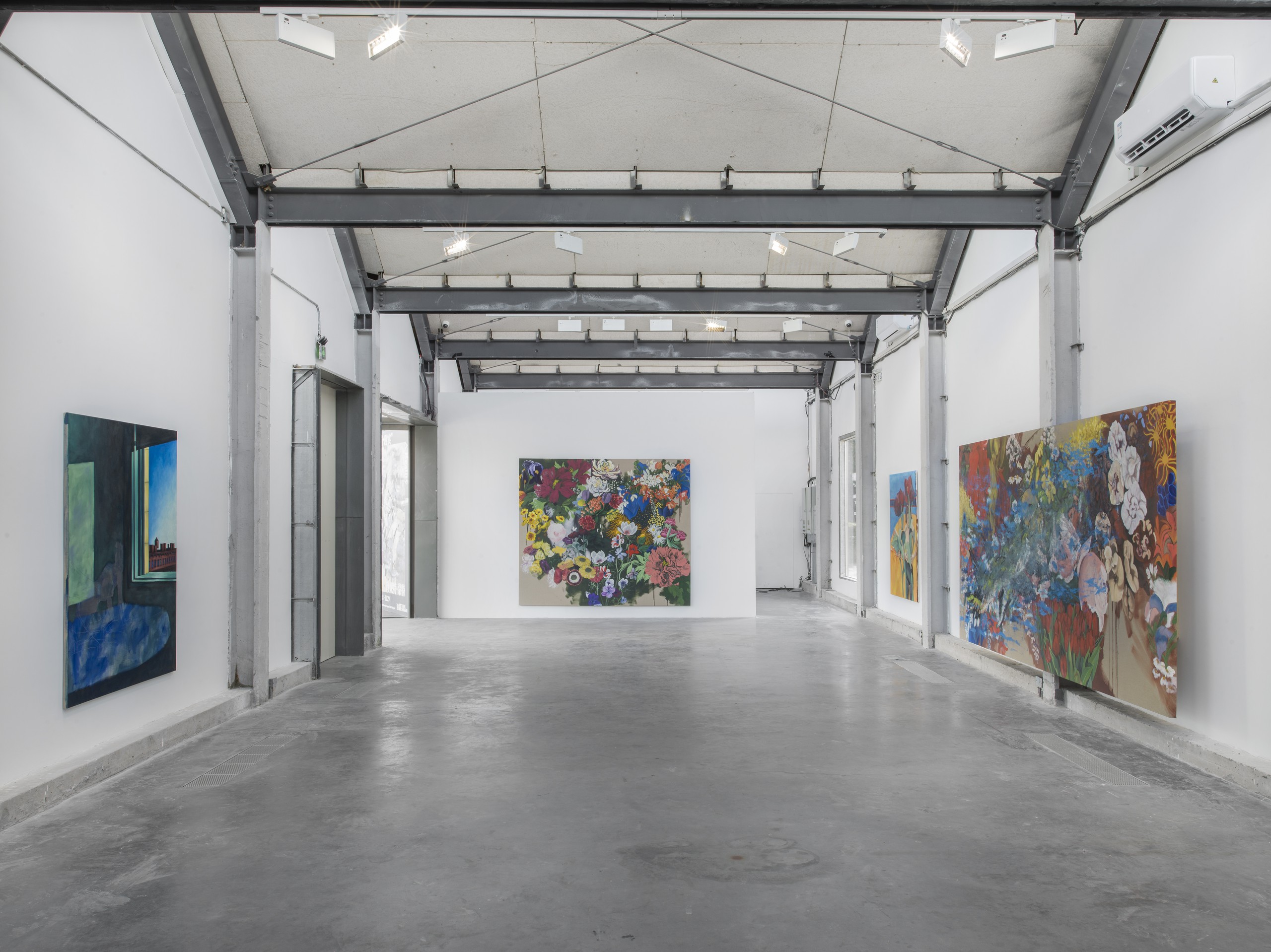
Installation view, A Reality, TANK Shanghai, 2023
TANK Shanghai is pleased to present “A Reality,” Jeanette Mundt’s first solo exhibition in China. Whether painting women, flowers, selfies, or birds, Jeanette Mundt’s forms seem to stutter, as if collapsing different temporalities and formal approaches into the space of one image. In Mundt’s exhibition at TANK Shanghai, she works in recursive loops, repeatedly returning to certain motifs across a number of different works to conceptually repurpose, reposition, and reorient them.
The history of painting, for Mundt, serves as a vast repository of both inspiration and irritation. Her works often replicate her own body, positioning it in relation to painterly citations from medieval illuminated manuscripts, Odilon Redon, Edward Hopper, Henri de Toulouse-Lautrec, Francis Bacon, and Hyman Bloom. These different references don’t coalesce in the manner of a frictionless pastiche, but rather with the tenacity and incisiveness of what scholar Sara Ahmed calls a sweaty concept—“one that comes out of a description of a body that is not at home in the world.” Mundt’s dogged emphasis on reworking and resituating the figure in her paintings speaks to Ahmed’s notion that a sweaty concept is a form of intellectual work that is “worldly, but it is also a reorientation to a world, a way of turning things around.”
In a series entitled “I Will Destroy You,” which depicts hummingbirds manically circling bouquets of flowers and fighting, Mundt literally turns things around. Earlier paintings in the series were painted in a horizontal format and presented vertically. At TANK Shanghai, Mundt switches the orientation once again, painting and exhibiting the works horizontally for the first time. This new perspective on the image amplifies and elongates the lush flowerscape and the birds’ frantic movement, which appear as green smudges with varying levels of discernibility.
The series “Right and Not Accurate” reworks two paintings by the American realist painter Edward Hopper: Morning Sun (1952) and Rooms by the Sea (1951). In one painting, a ghostly outline of Mundt assuming a posture borrowed from a Toulouse-Lautrec painting appears as a spectral presence atop a field of blue. This washy swathe of paint indicates the space where a bed was situated in Hopper’s original, atop of which sat his wife Jo Hopper, a painter who was tremendously influential on his work yet whose own career was often overshadowed by her husband. In another work, iterations of Mundt’s body poised on all fours occupy one of Hopper’s empty spaces. The multiplication of the figure indicates a kind of battle: between subject and object, between gendered codes of looking and being looked at, between Mundt’s body and Hopper’s room.
Another recurring figure in “A Reality” is a semi-nude woman who pulls at her own abdomen. Derived from a selfie, Mundt’s gesture in these paintings seems to evoke the sensation of turning inwards into a space of solitude and reflection. “Excessively Emotional and Lusty” depicts Mundt in this posture girded by the kinds of lines Francis Bacon used to create room-like spaces in his works. She uses the pictorial construction of space and flowers—which she has described in the past as taking her into a “trance like space” where she can “just let go”—as motifs to work through the disciplining of women’s bodies and social roles, which, as the feminist scholar Silvia Federici writes, were considered “emotionally excessive and lusty, unable to govern themselves.”
Notions of looking and voyeurism are addressed spatially and architecturally in “Good For Me.” In this series, swooping lines create a kind of peephole effect that reveals Mundt in two different poses: adopting the posture of Toulouse-Lautrec’s model and tugging at her belly. This gesture, which appears in other paintings in the exhibition, is derived from medieval depictions of Jesus, in which a slit-like wound functions as a stand-in for Christ. Fascinated by this graphic simulation of the body in illuminated manuscripts, Mundt began to take photographs of herself posing as if she was pulling open a similar wound on her own abdomen. Her painterly depictions of this enigmatic gesture elicit numerous questions. Is the woman in pain? Has she lost touch with herself? Does she feel strange in her own skin?
By conflating art-historical images with selfies, Mundt poses questions about power and the gendered gaze that unfold in the ambiguous space between how we consume images in everyday life and art. One could certainly consider Mundt’s painterly practice solipsistic, as consumed as it is with the replication and manipulation of her own body. Yet in fact, Mundt is touching everything: diverse time periods, different media, art historical references, religious iconography, popular culture, digital images. And she also touches things that don’t want to be touched, filling them up with her own body.
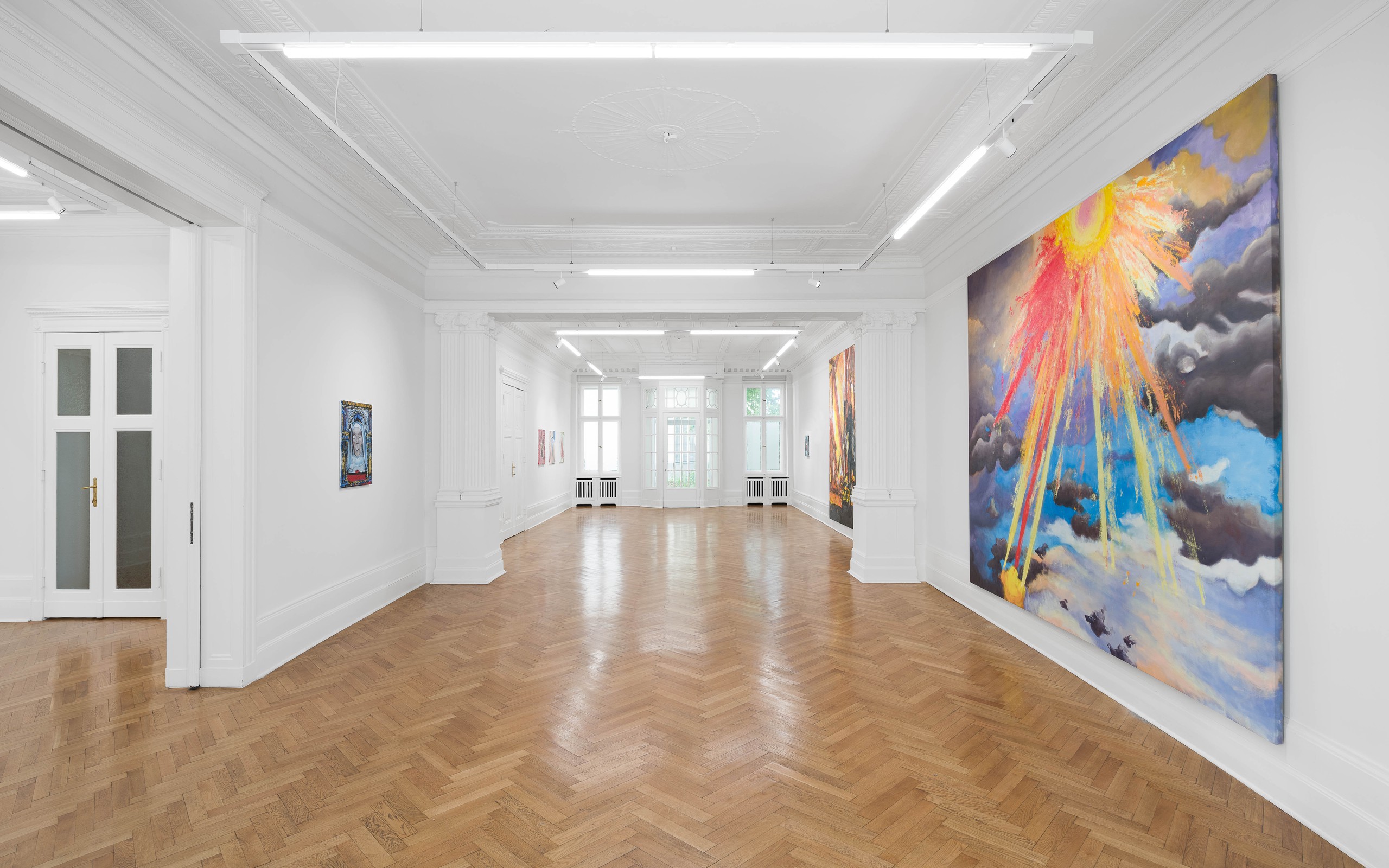
Installation view, God Told Him to Wait, Société, Berlin, 2023
Société is pleased to present God Told Him to Wait, Jeanette Mundt’s fifth solo exhibition with the gallery.
Mundt’s dynamic, formally omnivorous practice freely taps a variety of input, ranging from art historical references to personal photographs. Reworking and repurposing motifs from sources as diverse as Odilon Redon, illuminated manuscripts, medieval tapestries, Wade Guyton, and Matthias Grünewald, Mundt’s recent paintings eschew adhering to an individual style in favor of a poly-aesthetic approach. Two ongoing currents in Mundt’s practice come to the fore in this exhibition: an interest in painting elements in motion, such as fire and light, and bringing art historical imagery into new configurations that explore the ambiguous space between how we consume images in everyday life and art. Her richly seductive works, which construct images from multiple sources, speak to questions of painting, depiction, correction, and construction. The mood of these works—which are in turns contemplative, sensual, foreboding, and celestial—respond to the rage and rapture that pervade a cultural moment marked by climate change, the rise of religious extremism, and the curtailment of women’s rights.
Art historian Bettina Funcke describes the first two decades of the twenty-first century as being shaped by what she calls a “culture of inflammation”—an era marked by the rapid development of technology, the lost utopia of global connection, and the polarization of autocracy and resistance. A chronic sense of social inflammation, she contends, leads to a kind of systemic overdrive that comes from being connected at all times. Yet inflammation, as Funcke writes, is also part of the body’s immune function, “a way to protect ourselves, to stave off infections or damage to tissue.”1 Jeanette Mundt’s individual paintings avoid offering direct commentary on social and political issues but read in relation to one another they nonetheless absorb and reconfigure the conflicting currents that shape their time. In God Told Him to Wait, Mundt oscillates between figuration and abstraction, between the bodies of women and those of animals, between religious iconography and the language of the glitch—a tendency that Funcke describes in Mundt’s work as defocalizing: letting things in, trying out different perspectives, aesthetics, and approaches, which allows her works to “flicker with flexibility and vulnerability.”2 Painting, or more precisely looking at painting has the capacity to create new worlds. It can induce an urge to identify in the viewer, which is undercut by the medium’s own hermeticism. Difficult painting refuses, it resists easy assimilation and pat answers.
Jeanette Mundt (b. 1982, United States) lives and works in New York. She has exhibited in solo and group exhibitions internationally at venues including the New Museum, New York; G2 Kunsthalle, Leipzig; Westfälischer Kunstverein, Münster; Musée d’art Contemporain, Bordeaux; David Zwirner, New York; Company, New York; Overduin and Co., Los Angeles; Gavin Brown’s enterprise, New York; Bridget Donahue, New York. Her work has been included in the 2019 Whitney Biennial, as well as the group exhibitions The Rest, Lisson Gallery; The Vitalist Economy of Painting curated by Isabelle Graw at Galerie Neu, Berlin; Painting: Now and Forever, Part III, Matthew Marks and Green Naftali, New York; Sputterances, Metro Pictures, New York.
- Bettina Funcke, “Defocalizing: Don’t just give me figuration, please!”
- Ibid.

Jeanette Mundt
Foul Lust, 2023
Oil on canvas
71 × 56 × 2 cm
28 × 22 × 1 in

Jeanette Mundt
The World Turned Upside Down, 2023
Oil on canvas
71 × 56 × 2 cm
28 × 22 × 1 in
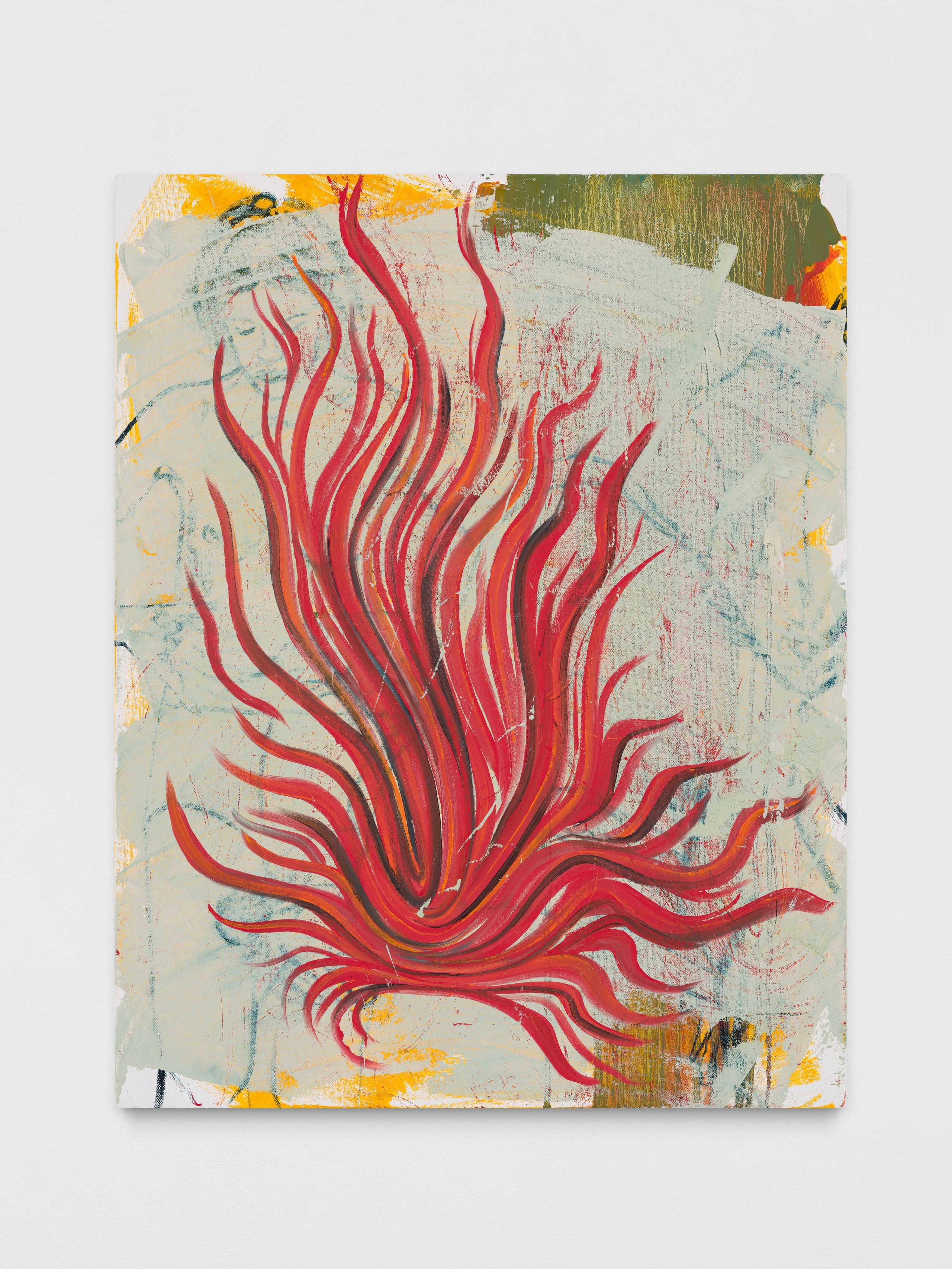
Jeanette Mundt
The Crucified, 2023
Oil on canvas
71 × 56 × 2 cm
28 × 22 × 1 in
Jeanette Mundt
I’d rather take a more, conceptual approach because I am not, interested in giving too much out. A different, approach is fine with me.
Kerstin Brätsch
Does it matter that it’s a self-portrait?
JM
In the end it does. When I first started painting this body—I call it “Climbing”, this body on all fours—it is taken from a Henri Toulouse-Lautrec painting of a prostitute on a bed (Red-headed Nude Crouching, 1897). I made a painting of that, in 2016, and then I thought, I might as well just make this a painting of myself, in the same position as the woman in the Toulouse-Lautrec painting because there is all the tension between the female painter, the female gaze, the female body, lifting it from the male gaze, blah, blah blah... So, I thought I’ll just start using myself. Then I wanted to increase the number of figures but I didn’t know how to use somebody else’s body. Why would I do that? Why would I use a model? Who would I choose? etc. I don’t want to play any games, in that weird decision-making hierarchy. I wanted to avoid all of that. So, I just began painting myself. So, I think when I made the initial decision it did matter that it was me on all fours. Then, when I wanted to paint more bodies it didn’t matter. But when I continued painting myself, I thought, oh no it actually does matter because of the denial of decision making. Do you know what I mean? It is a self-portrait in the end.
KB
Because it’s like this multiplication of the self. It’s not about the individual, it becomes a template. I think with the multiplication or this crosshatching you are doing, suddenly it becomes less and less about exposure or vulnerability. The position of the prostitute in the original, where again it becomes about the gaze, whereas here there’s a strange twist happening. I find it interesting that the human figure could be an animal, that for me is the tension in the picture. We might know the reference of Edward Hopper or Toulouse-Lautrec, but then what you’re doing with it, there’s some awkward inability to place this space and the figure. The tension you are talking about, you’re denying the figure because the figure is cut up by the landscape. The landscape obviously doesn’t follow any logic either.
JM
Yes.
KB
Suddenly on the right, the female bodies are actually crawling under the landscape in an impossible way. And on the left, the landscape is pressing onto the bodies like a burden. I think the way you painted it, this dry application and the sketchiness of it, you’re taking the authority back, or the vulnerable position of the female body, you’re taking that back. So, there’s all this potential power emerging.
JM
Absolutely.
KB
It’s strange what happens for the viewer. Because I am somewhat displaced myself...
JM
But that’s where I want you to be.
KB
Yes, and it’s unusual that the painting has the power to do that with the viewer.
JM
Is it? Do you think so?
KB
Yes, because we are looking at this reference and my intellect tells me that I know what I am looking at. I know the image, I know the reference. But then the way you actually translated it, combined it, and repeated the movement, which makes them slightly different from each other, suddenly I question my own gaze.
JM
That’s good...I mean I think that’s good.
KB
The image comes from Hopper but the brushstroke looks more like this very dry encaustic Jasper Johns crosshatch.
JM
I definitely understand. When I first made the marks I understood a viewer would see a reference to Jasper Johns, but that was not the point. The point was just to get colour onto the linen. Because it’s reverse stretched, so the gesso is on the back. So, the surface is raw linen and it’s really hard to actually get paint on there.
KB
From up close it looks like you’re using the (painted) body like a palette.
JM
Yes, totally. I feel like it’s a constant for me. I mean you know this: you make a mark and you think, ‘fuck this is the worst mark I’ve ever seen, I have to figure out how to hide it’. And then you keep doing this over and over and over again. Then you end up with whatever zone this is—the body-as-palette zone.
Art Basel Unlimited 2022
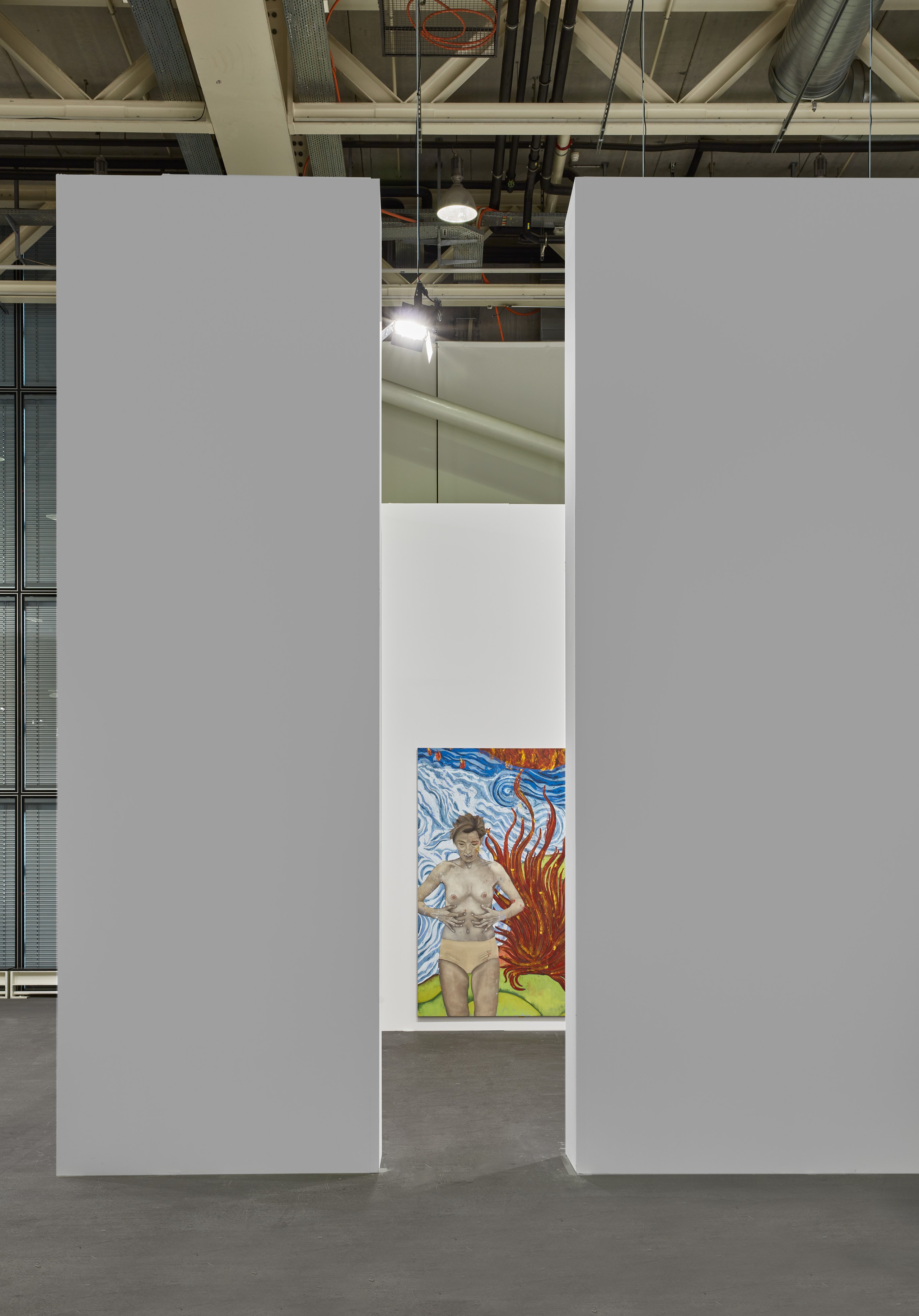
Installation view, Art Basel Unlimited 2022
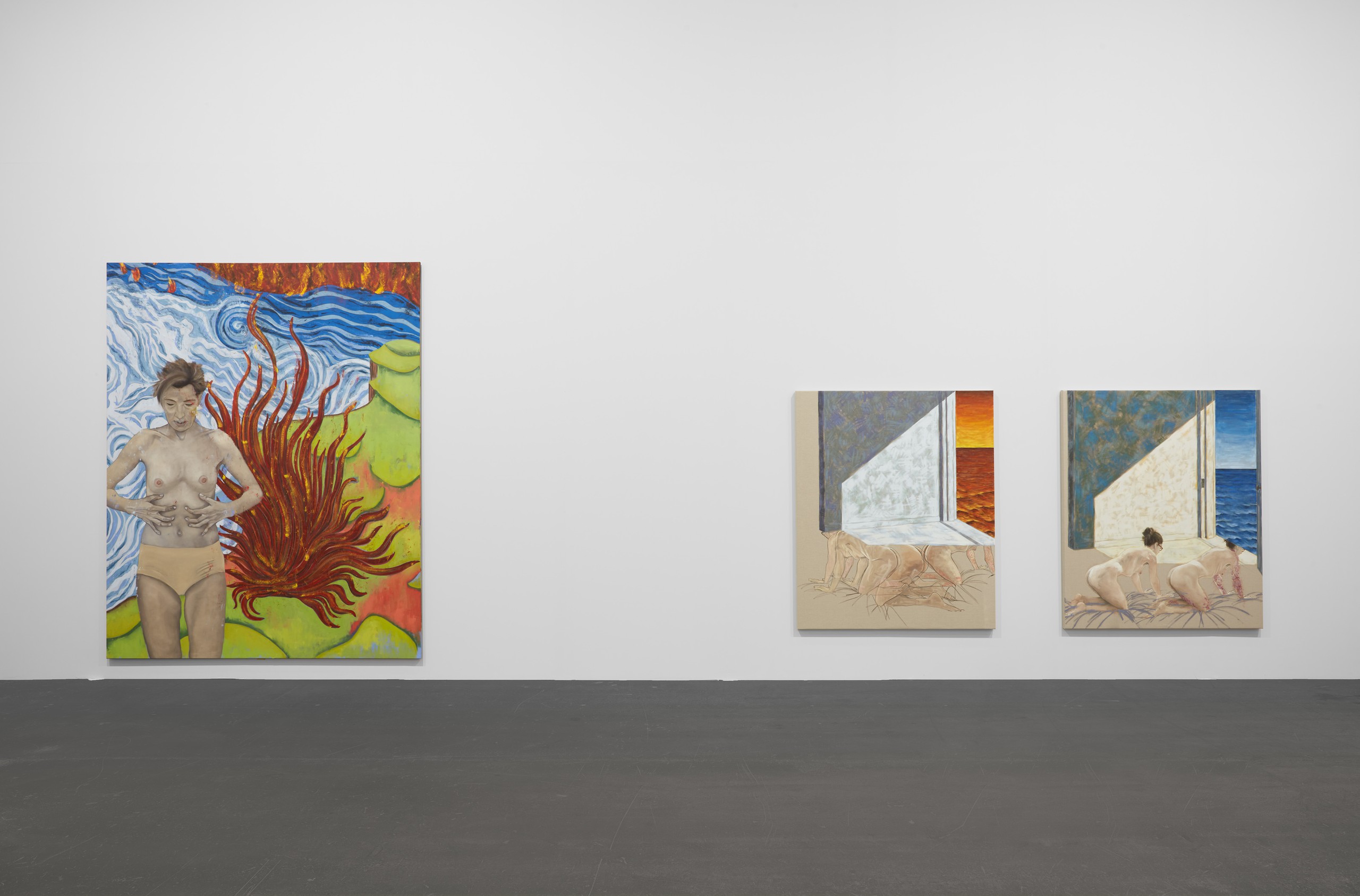
Installation view, Art Basel Unlimited 2022
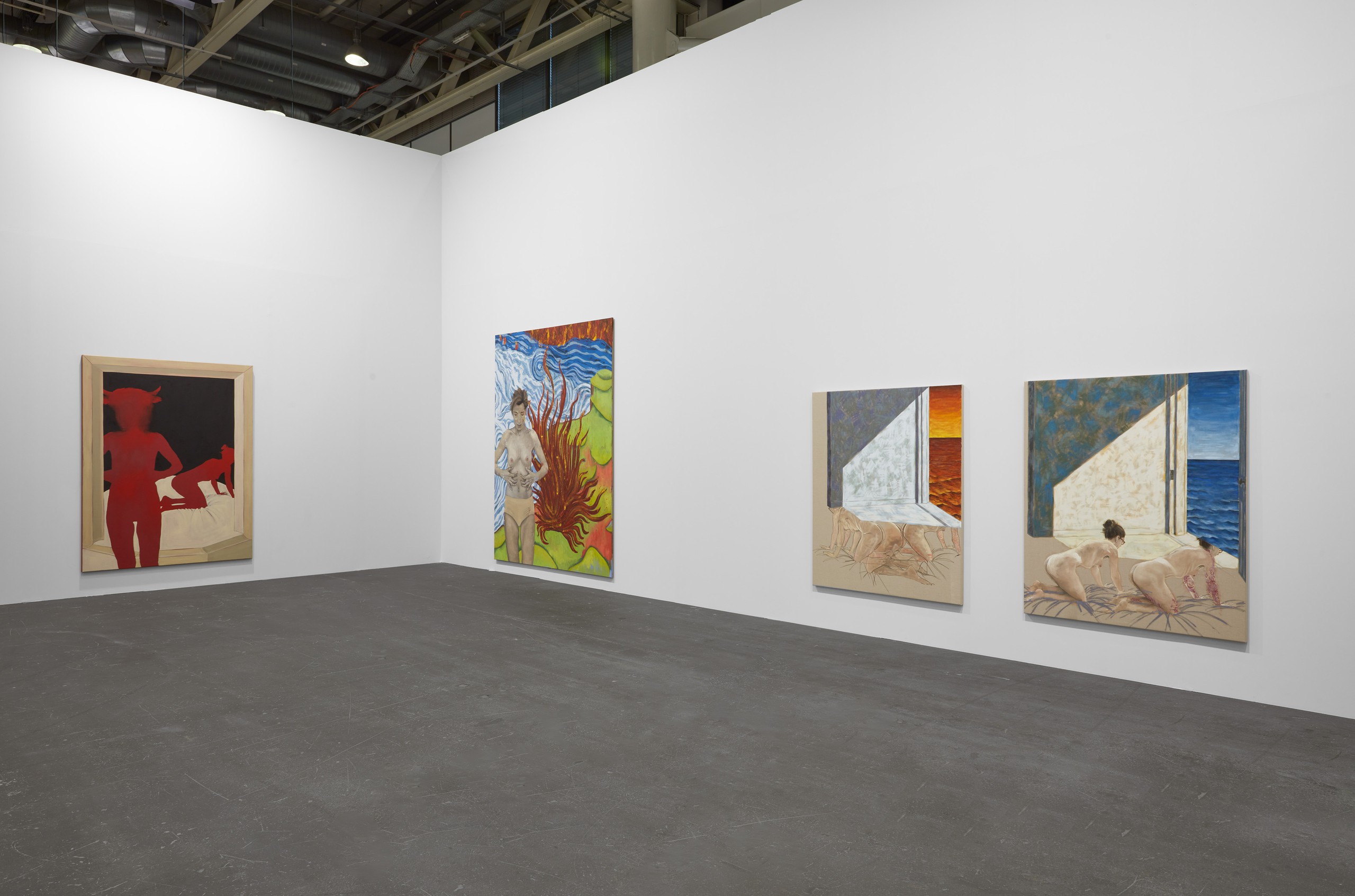
Installation view, Art Basel Unlimited 2022
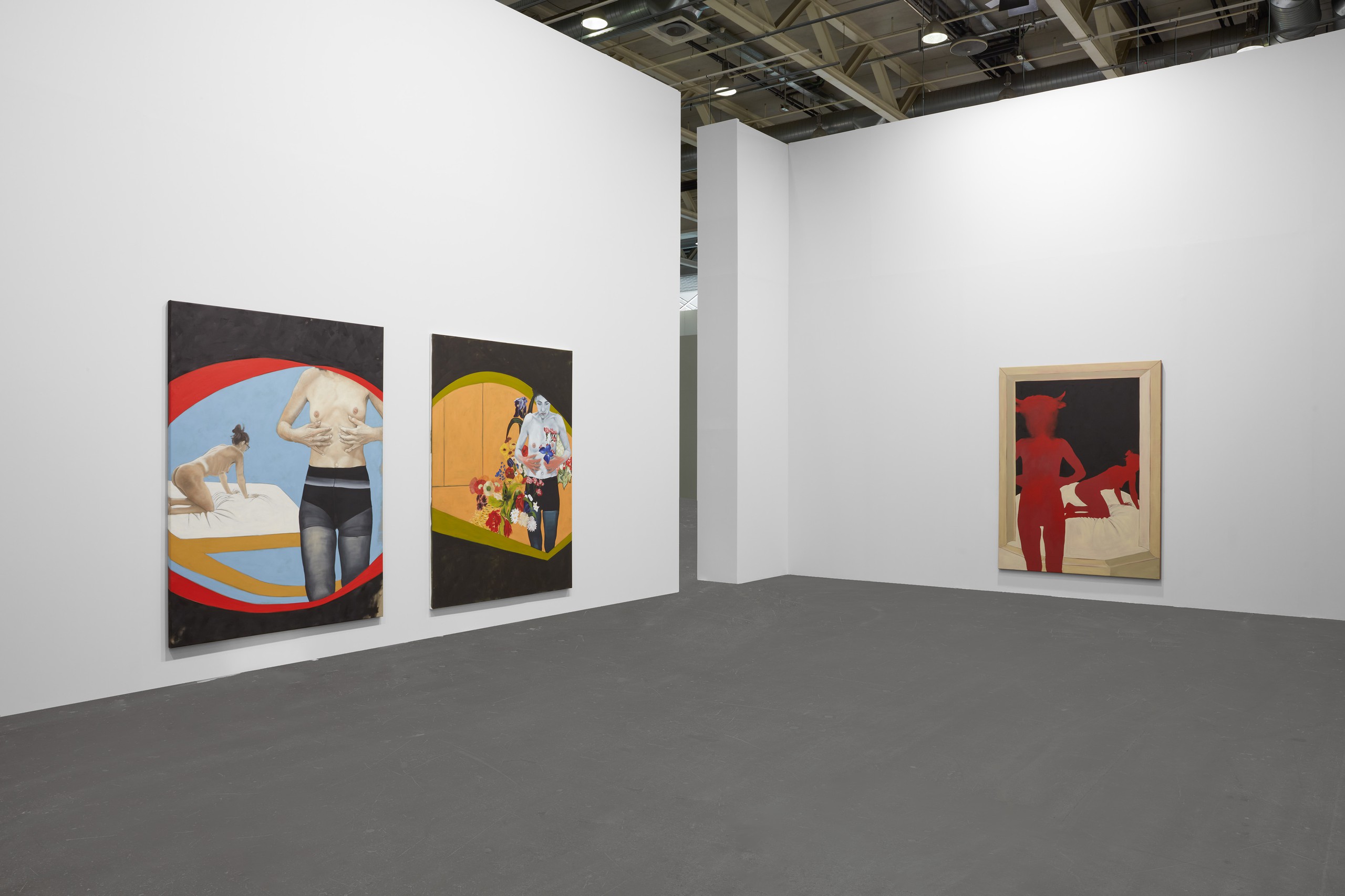
Installation view, Art Basel Unlimited 2022
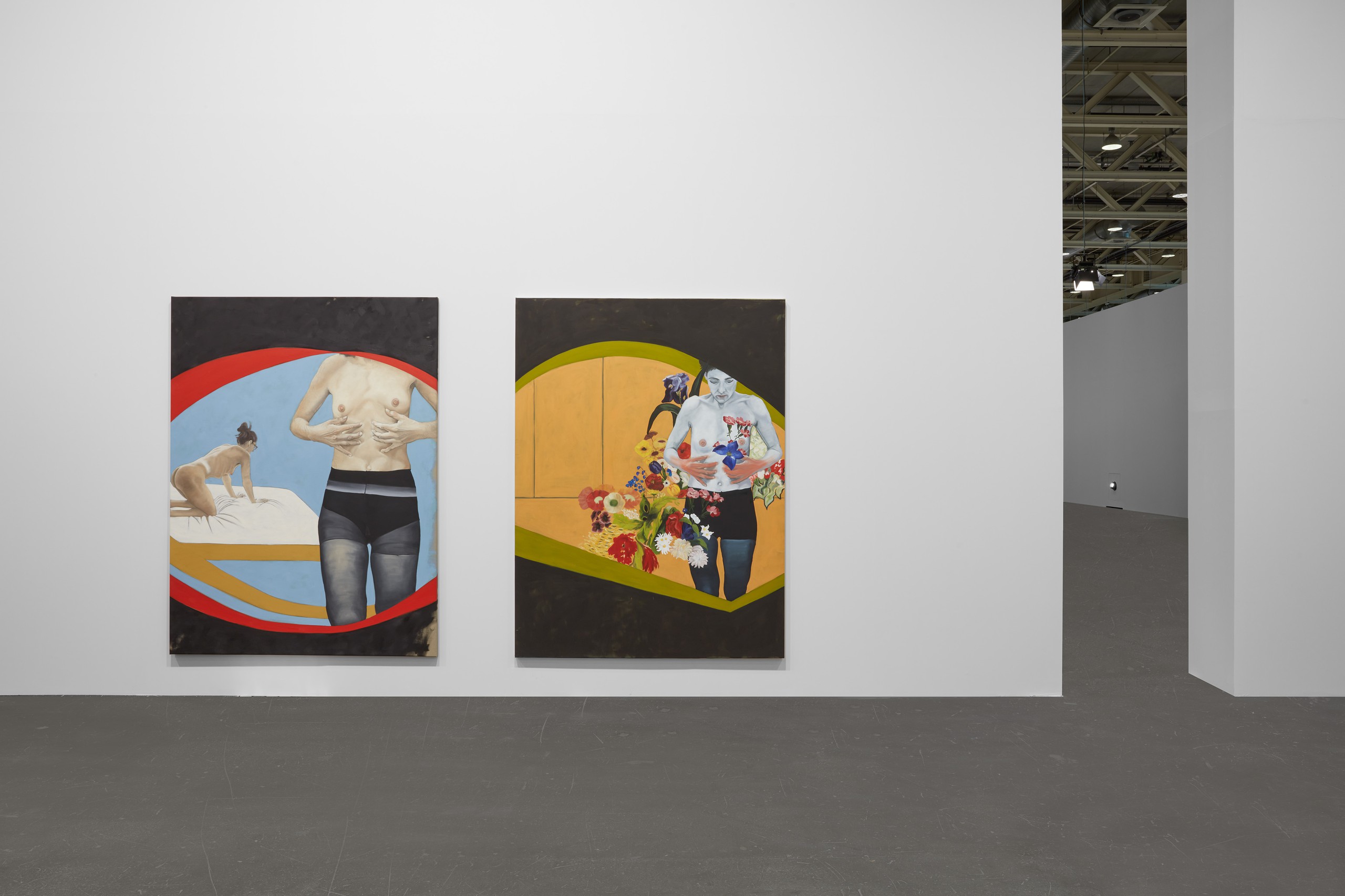
Installation view, Art Basel Unlimited 2022
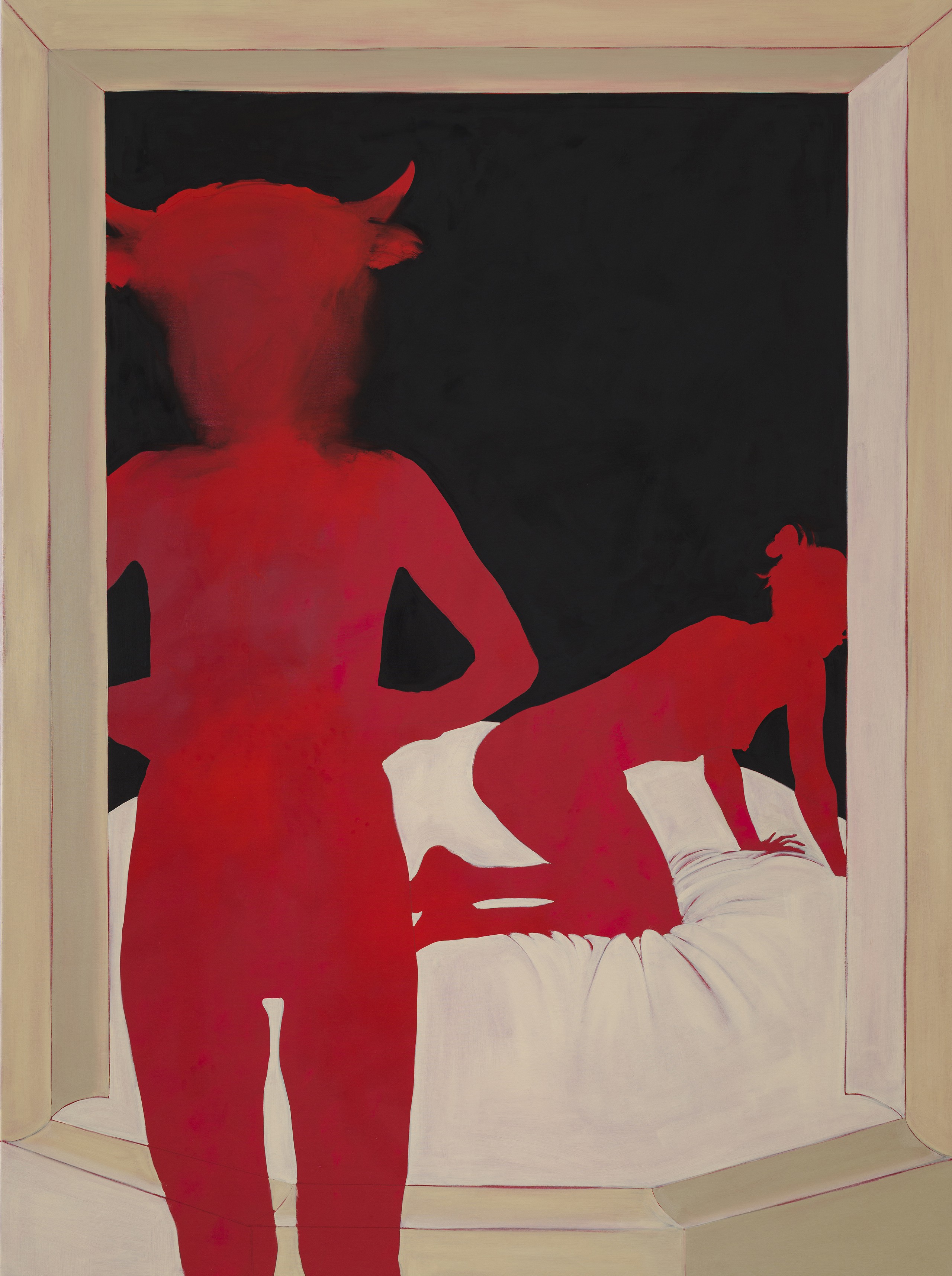
Jeanette Mundt, Smart and Bold, 2022, 245 × 183 × 4 cm, 96 1/2 × 72 1/2 × 1 1/2 in, oil on canvas
Human Remains
Overduin & co, Los Angeles
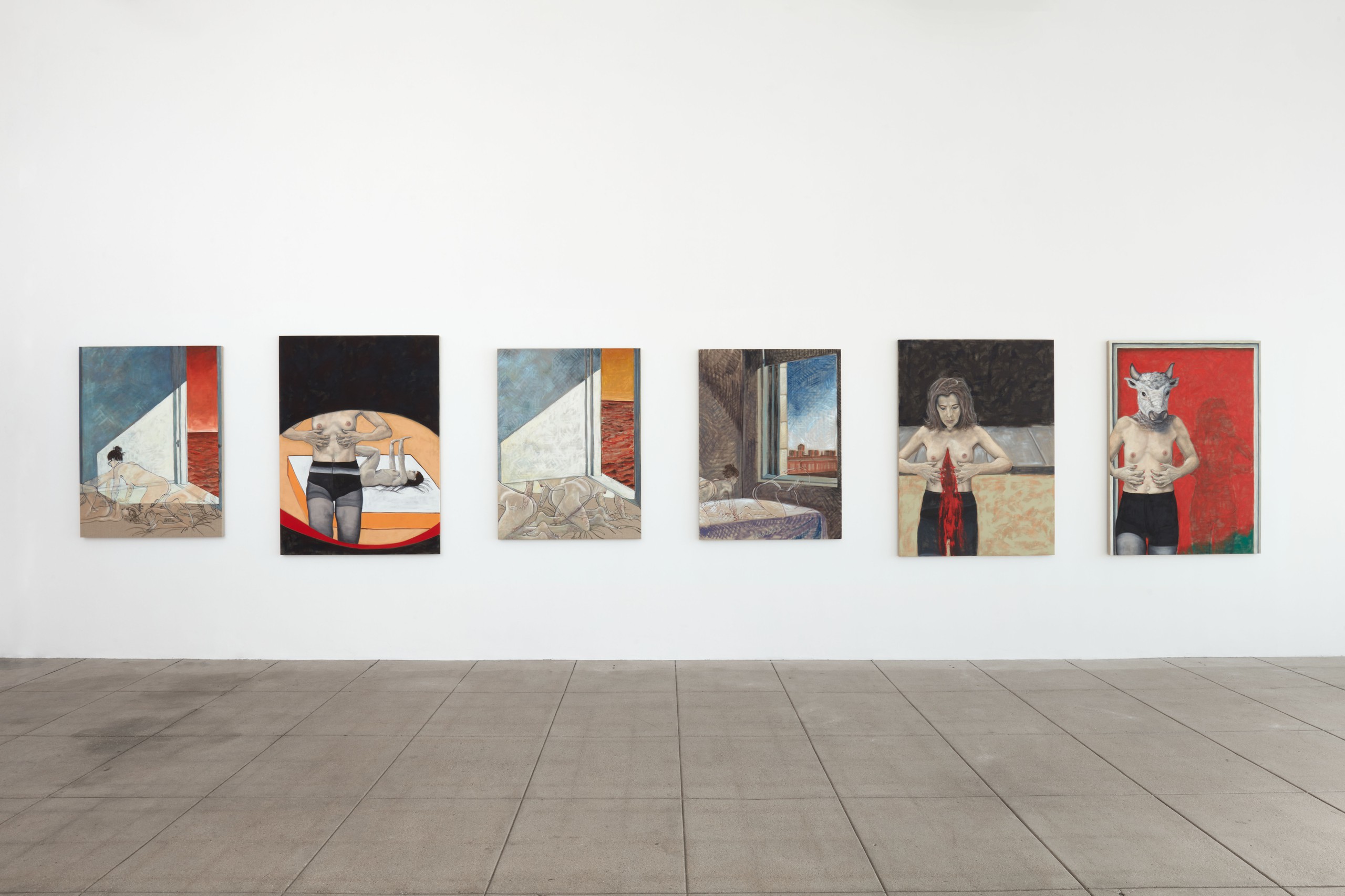
Installation view, Human Remains, Overduin & co, Los Angeles, 2022
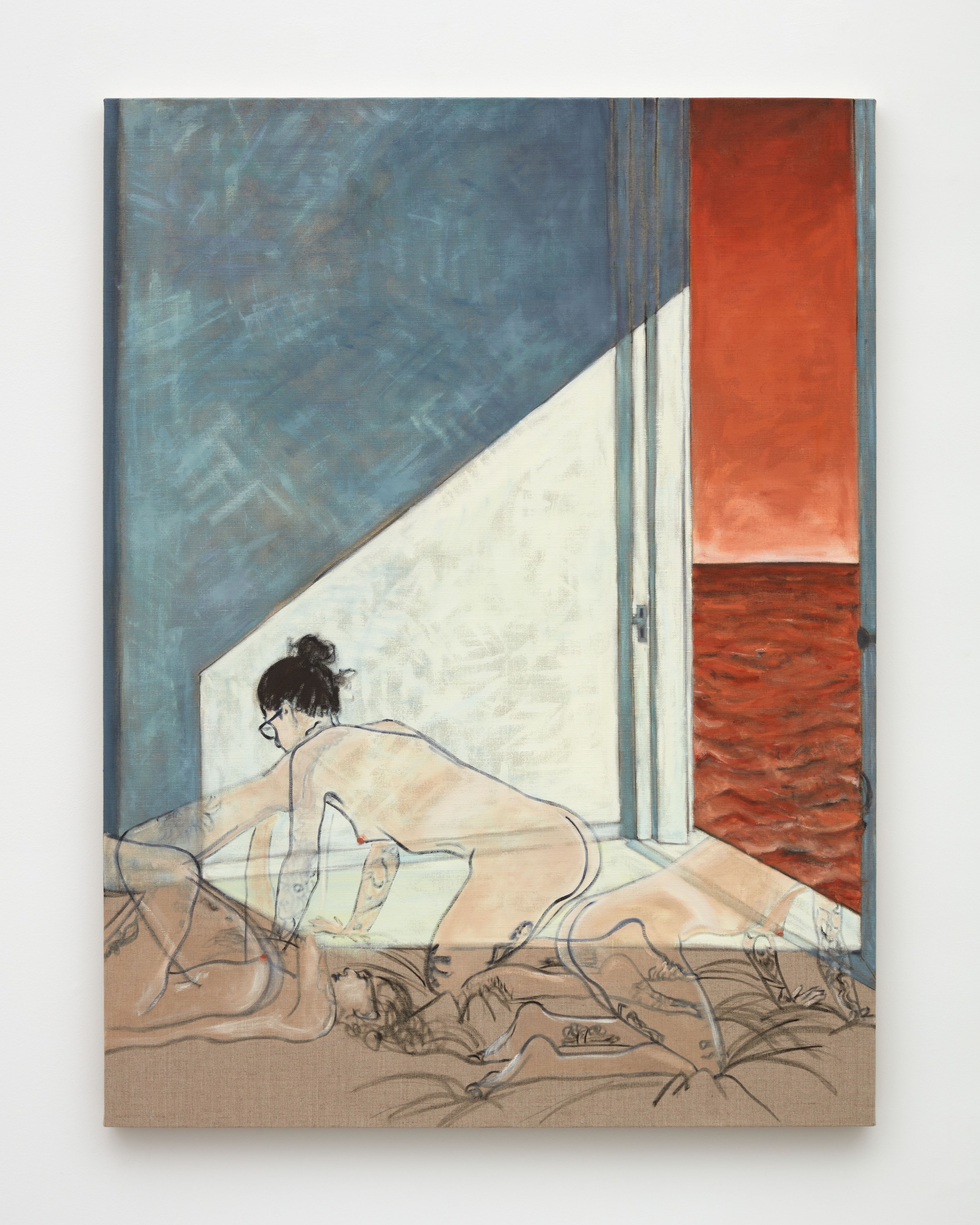
Installation view, Human Remains, Overduin & co, Los Angeles, 2022
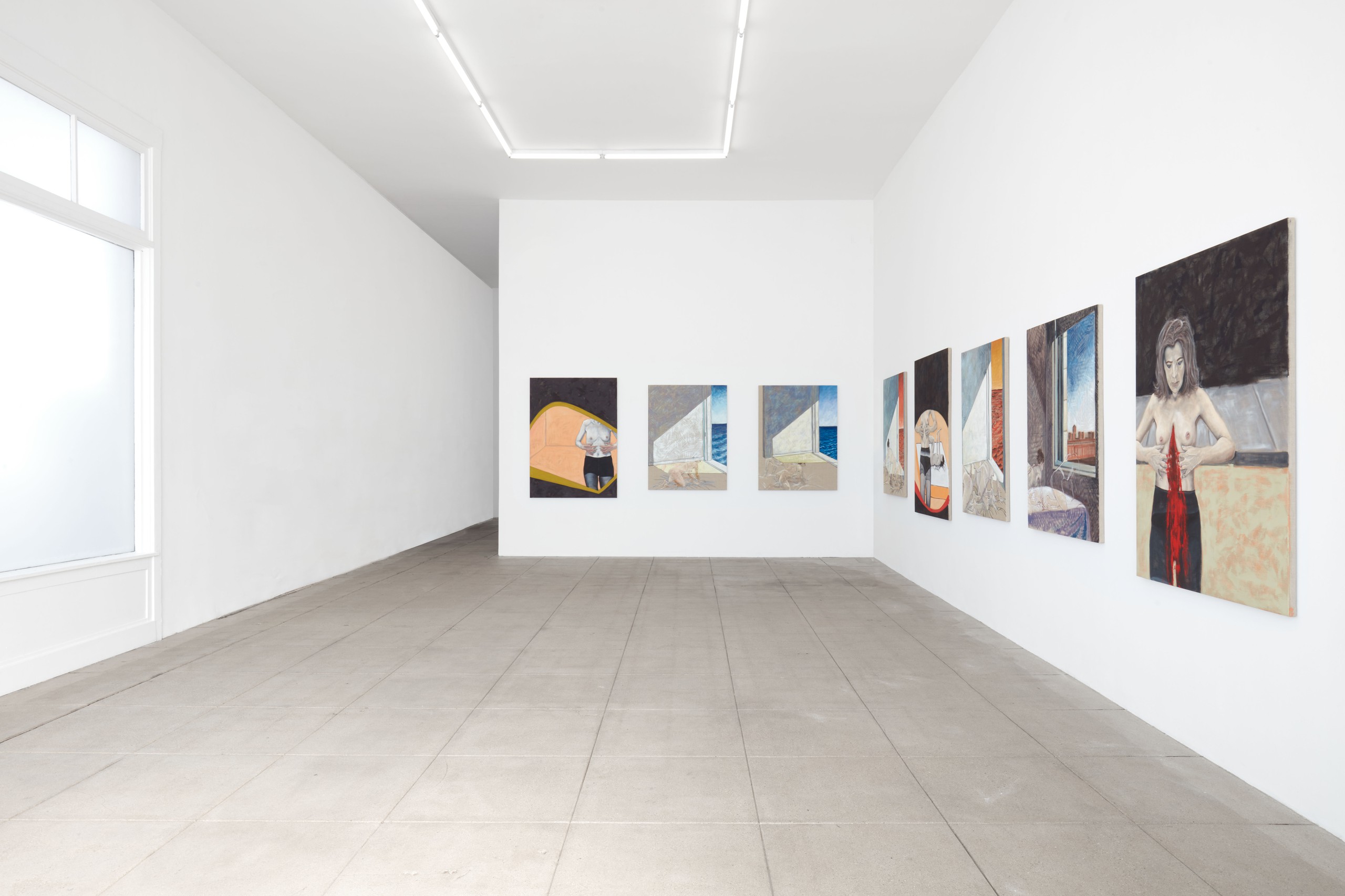
Installation view, Human Remains, Overduin & co, Los Angeles, 2022
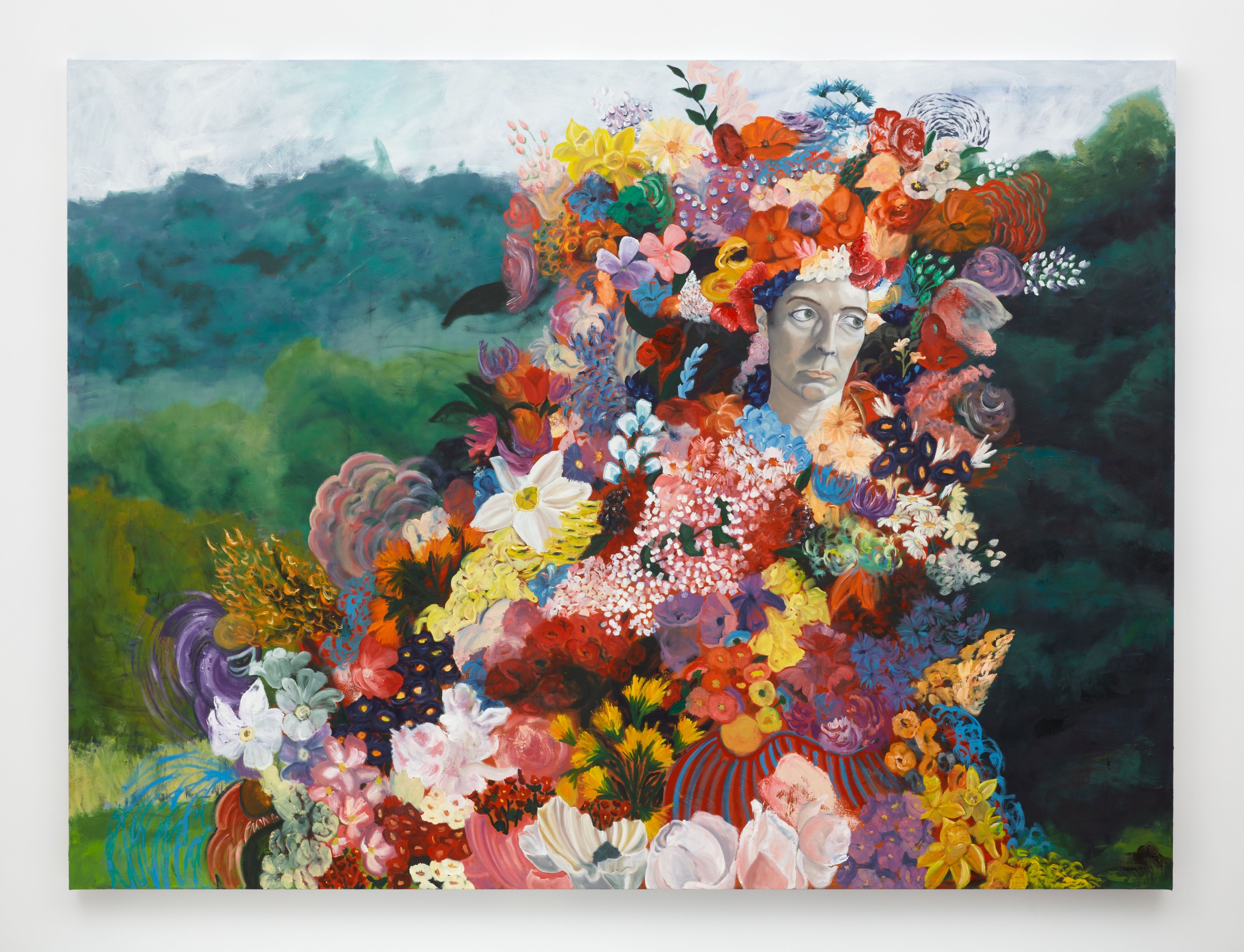
Installation view, Human Remains, Overduin & co, Los Angeles, 2022
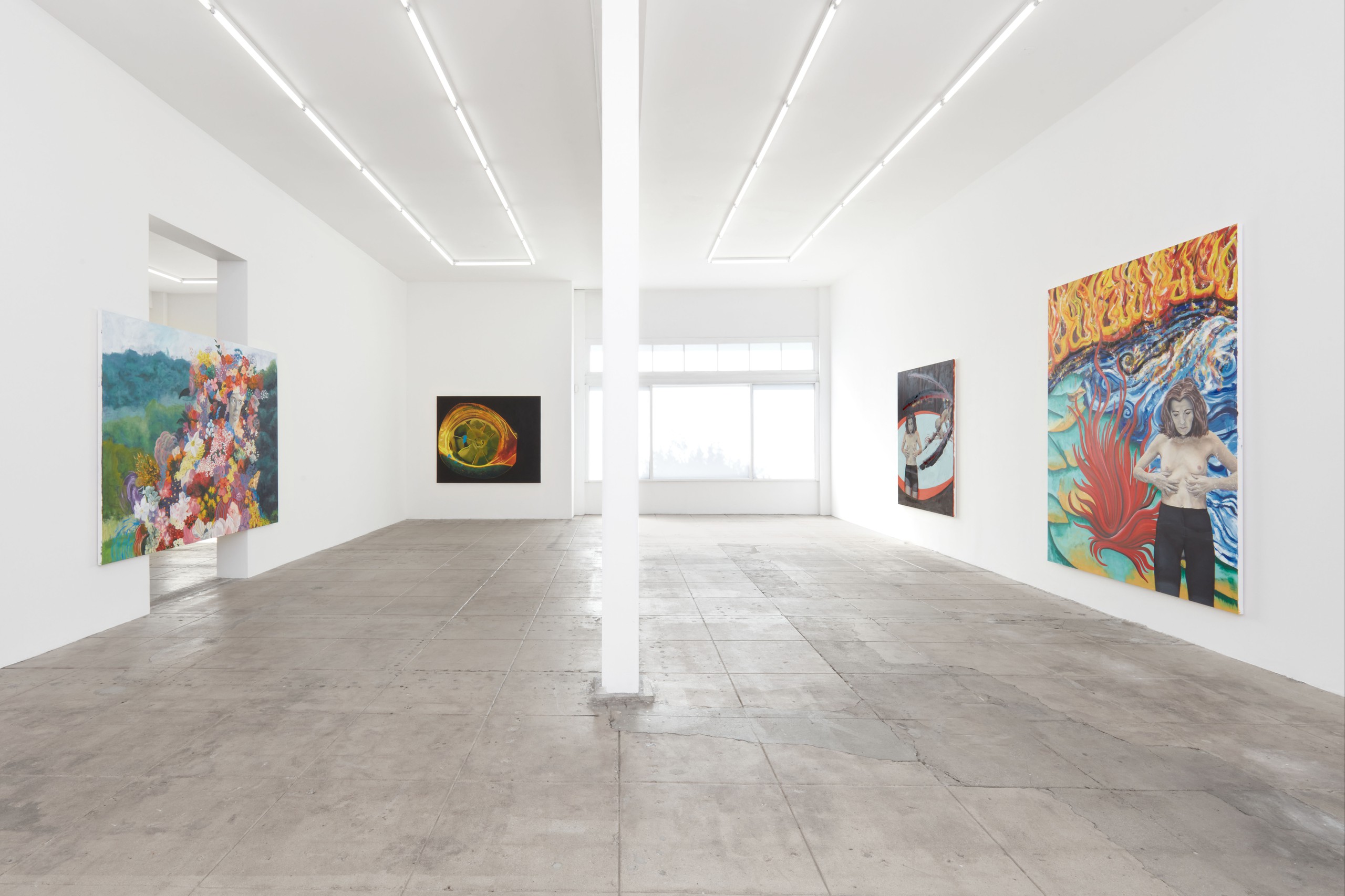
Installation view, Human Remains, Overduin & co, Los Angeles, 2022
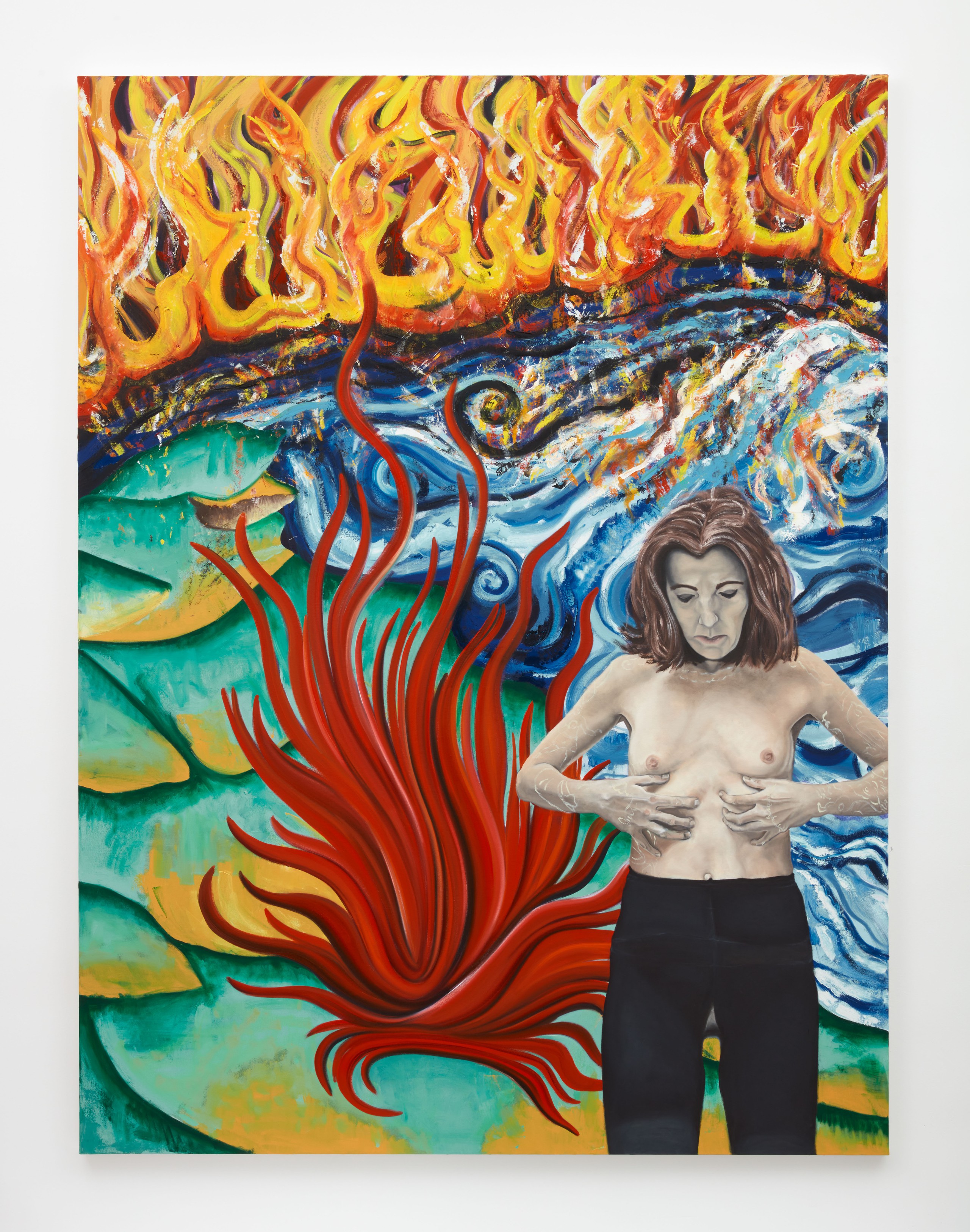
Installation view, Human Remains, Overduin & co, Los Angeles, 2022
Wash Us With Fire
Société, Berlin 2021
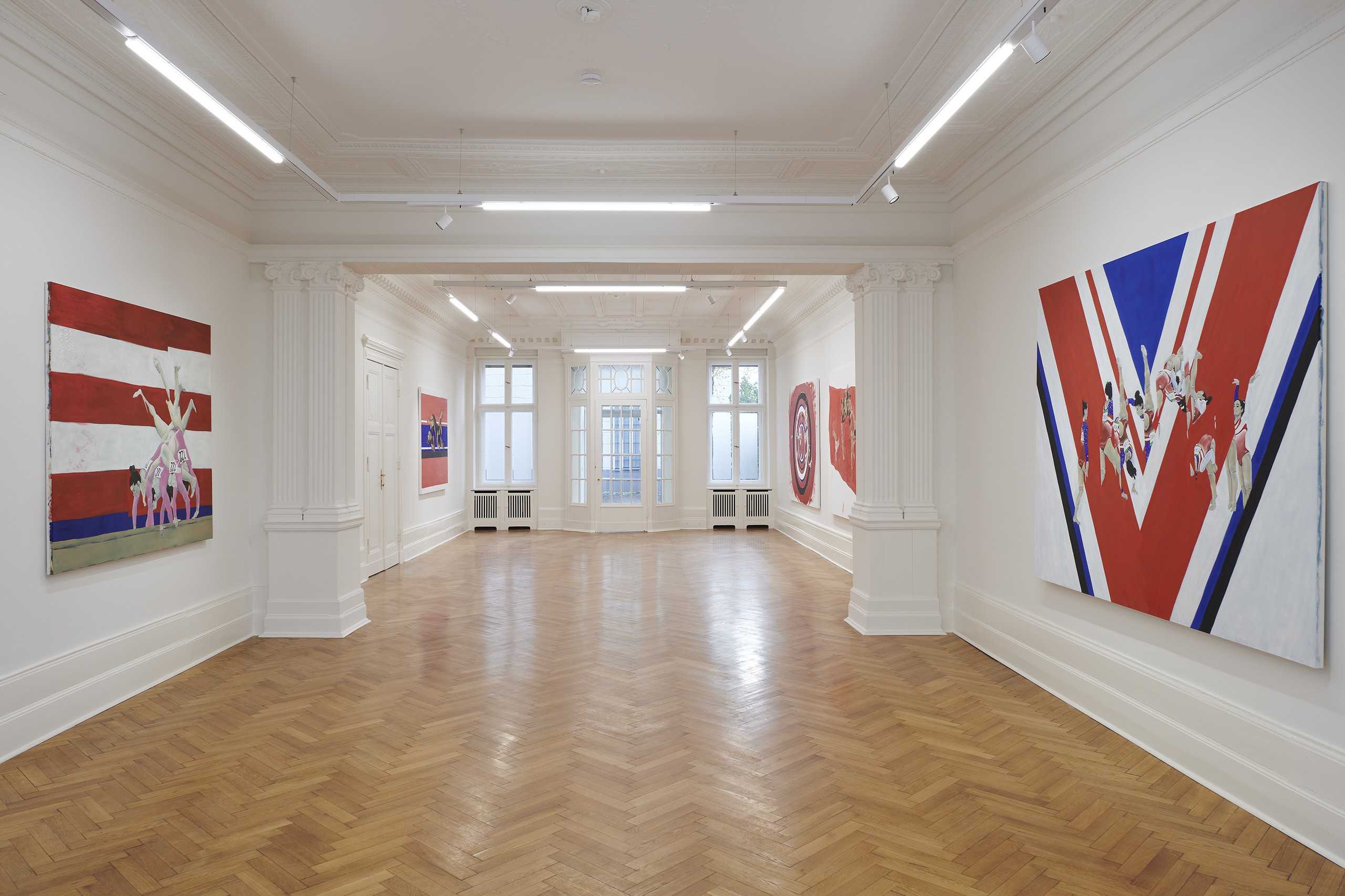
Installation view, Wash Us With Fire, Société, Berlin, 2021
Société is pleased to present Wash Us With Fire, Jeanette Mundt’s fourth solo exhibition with the gallery. The exhibition includes recent works from a series of paintings begun in 2018 based on photo composites of the 2016 United States Women’s Olympics gymnastics team originally published in the New York Times. Compressing a dynamic, durational event into a single, painted, static image, Mundt’s deft brushstrokes bring together divergent movements and temporalities. Yet while earlier works in the series seemed like they were stuttering, collapsing different temporalities into the single space of the picture plane, a number of Mundt’s most recent works, such as Best American (Aly Raisman I) seem to collapse time within the figure, producing hybrid bodies with manifold conglomerations of limbs. Mundt’s replications and reconfigurations of the body emphasize her source material’s techno-fetishistic mode of communicating, while also gesturing towards the violence inherent both in the sport and the nationalism of the Olympic games. The paintings’ red, white, and blue backgrounds mirror this interplay between nationalism and gender with their allusions to Color Field Painting. Unlike the earlier works in the series, which had some sort of anchor, albeit fragmented, in the space of the sports arena in Rio, the gymnasts depicted in Mundt’s most recent paintings inhabit a space of pure abstraction: riffs on Kenneth Noland’s Target Paintings, Barnett Newman’s zips, Helen Frankenthaler’s color fields, or Jasper John’s stripes. These Canonical references to modernist abstraction alternately threaten to subsume and are penetrated by slivers of the gymnasts’ bodies as they catapult themselves across the canvas.
In Wash Us With Fire, Mundt pairs such iconic references with others that are more personal or hermetic in her quest to perpetually reconfigure the image—gesturing towards how our understanding is always in flux and therefore we can’t possibly be consistent in our seeing, in our psychic space. Alongside her gymnast paintings, Mundt presents another recent series that, in contrast to the crisp, bold compositions of Born Athlete American and Best American, depict a darker, more ominous realm. An undefined blaze engulfs the shadowy figures that populate these works, unclear whether they are running towards or away from the flames.
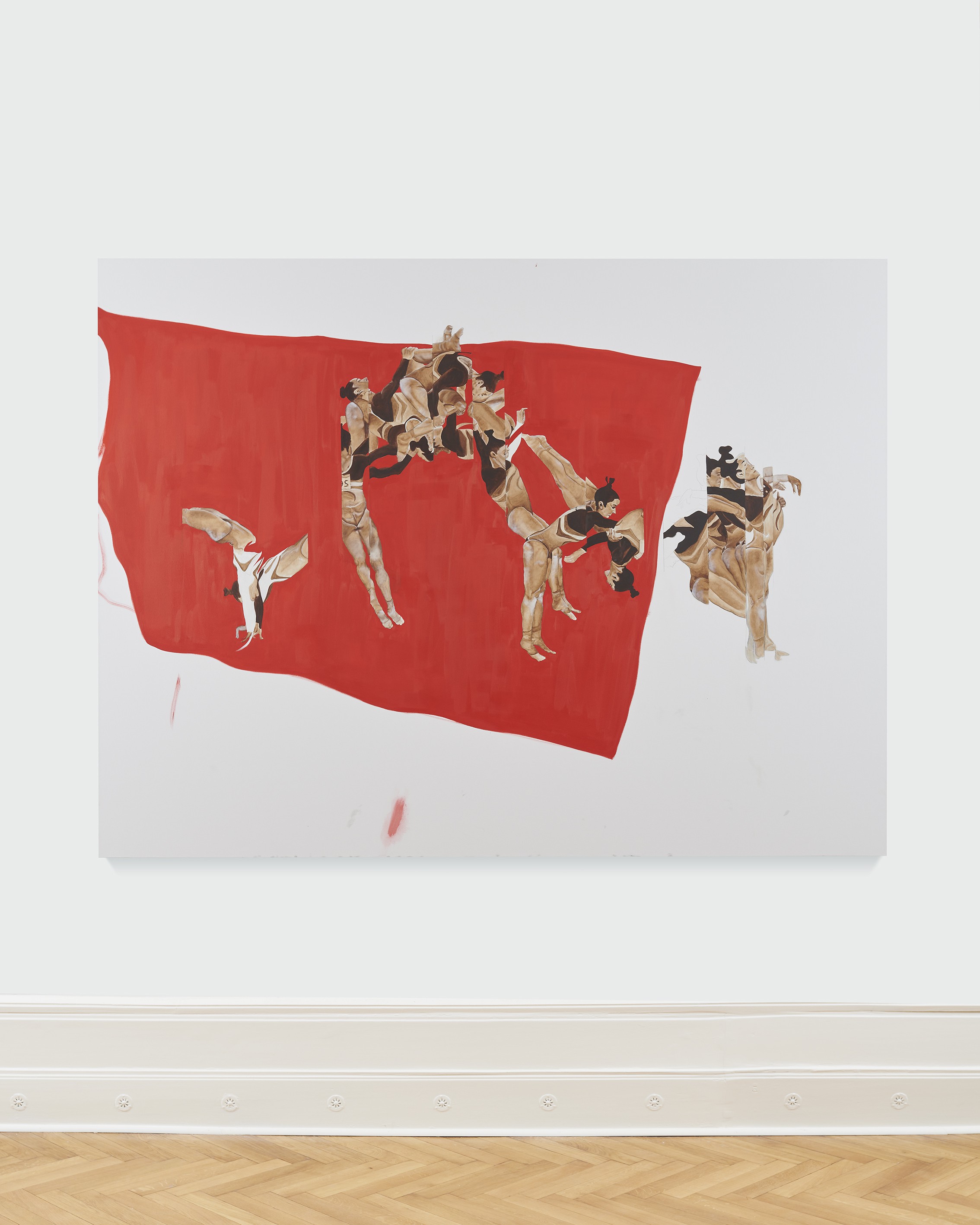
Jeanette Mundt, Born Athlete American: Aly Raisman III, 2020, oil on canvas, 182.88 × 243.84 cm, 72 × 96 in
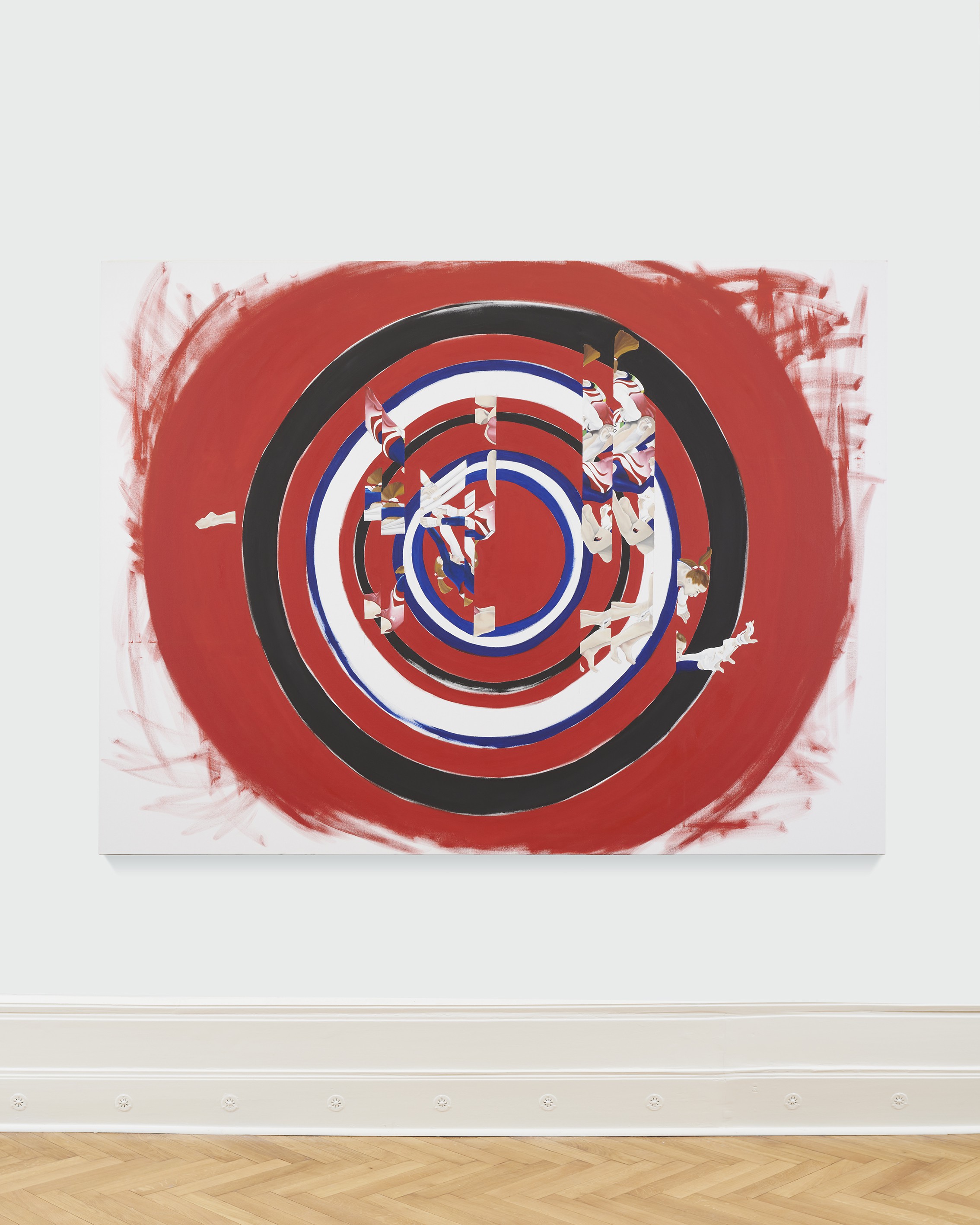
Jeanette Mundt, Born Athlete American: Madison Kocian III, 2020, oil on canvas, 182.9 × 243.8 × 3.5 cm, 72 × 96 × 1 1/2 in
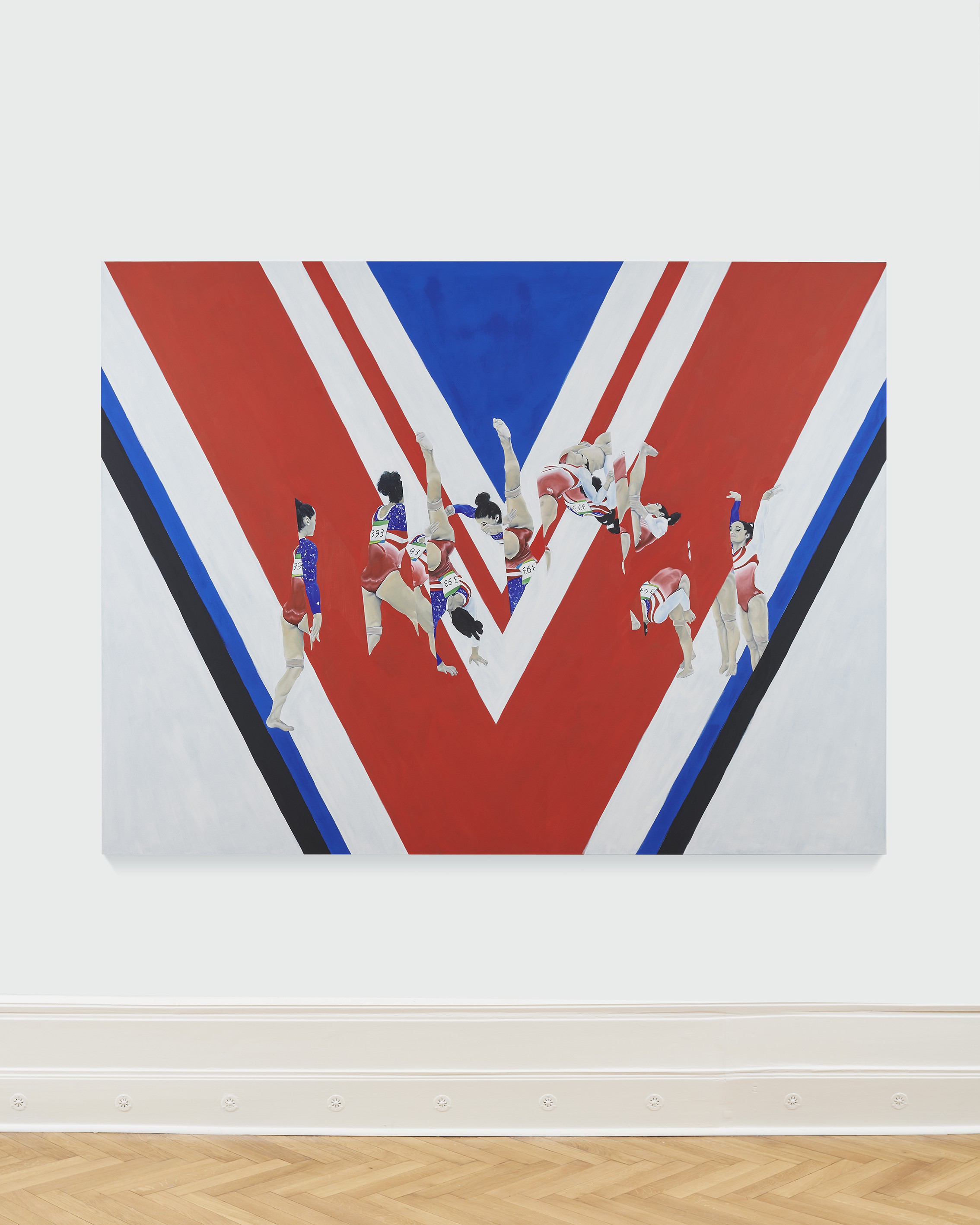
Jeanette Mundt, Born Athlete American: Laurie Hernandez II, 2020, oil on canvas, 182.88 × 243.84 cm, 72 × 96 in
Still American
Company Gallery, New York, 2020
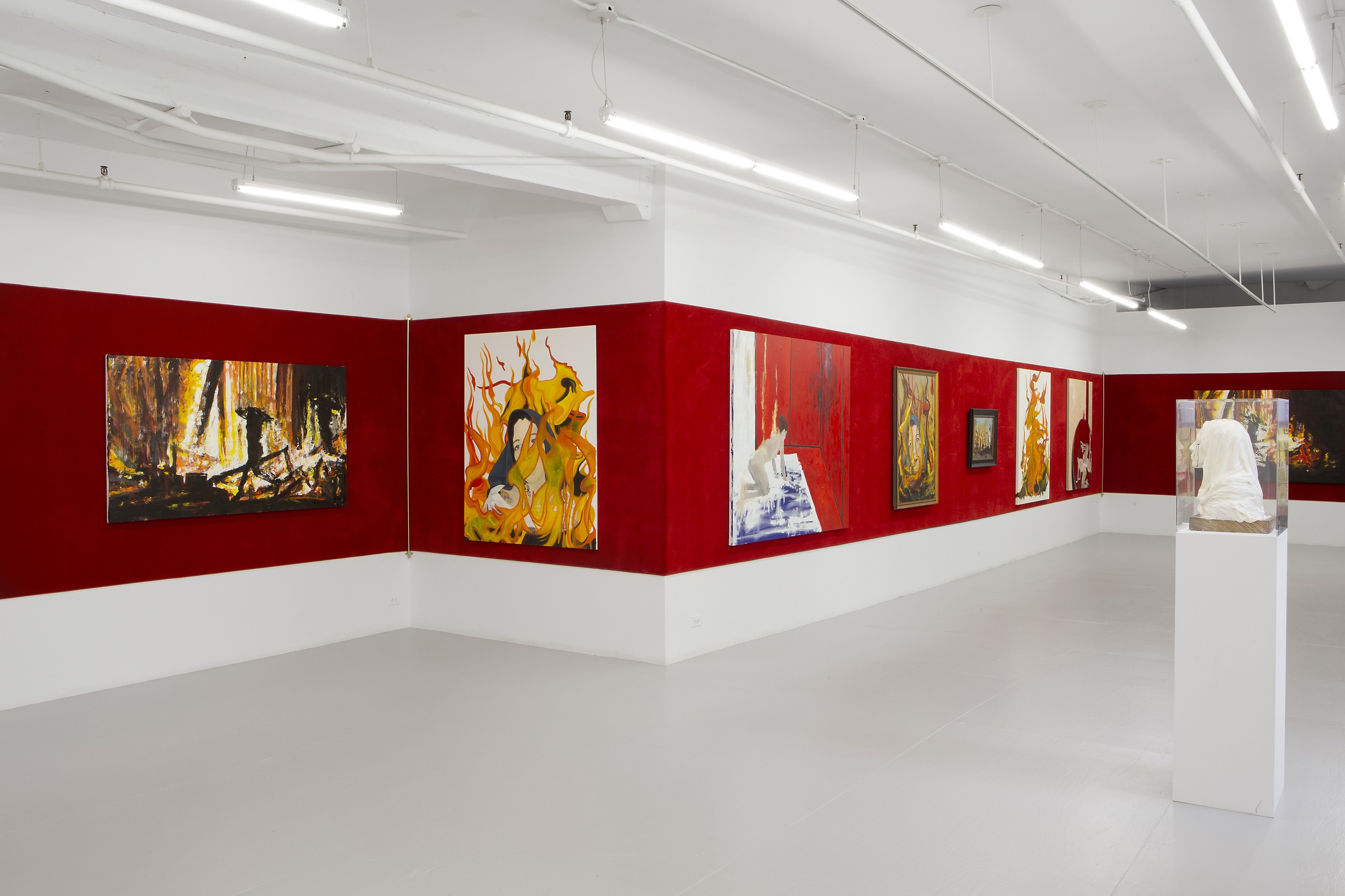
Installation view, Still American, Company Gallery, New York, 2020
Still American’s serialized reproductions exist, semi-altered, in a synergy of transference, from abstraction to figuration and back again. A re-ordering of collective recollection through a composite of styles and techniques, Mundt takes ownership and mastery of heavily utilized motifs in the history of painting: Landscape, Nude, Self-Portrait, then sets them ablaze. Fire itself, Mundt notes, is an elusive element to perfect, and a flicker of painter’s bravado. And within this unsettling production and reproduction of fire, Mundt establishes her narrative control.
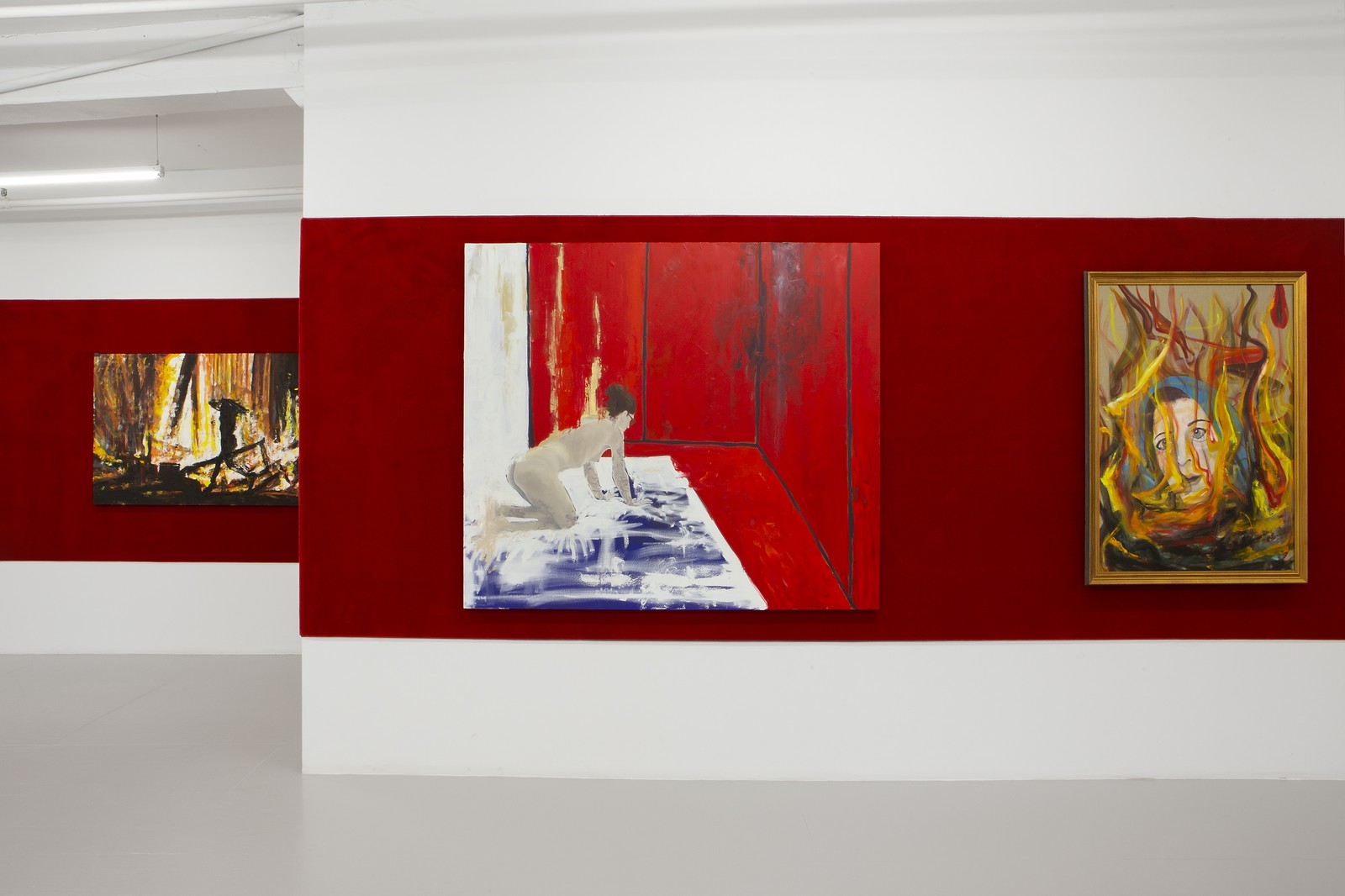
Installation view, Still American, Company Gallery, New York, 2020
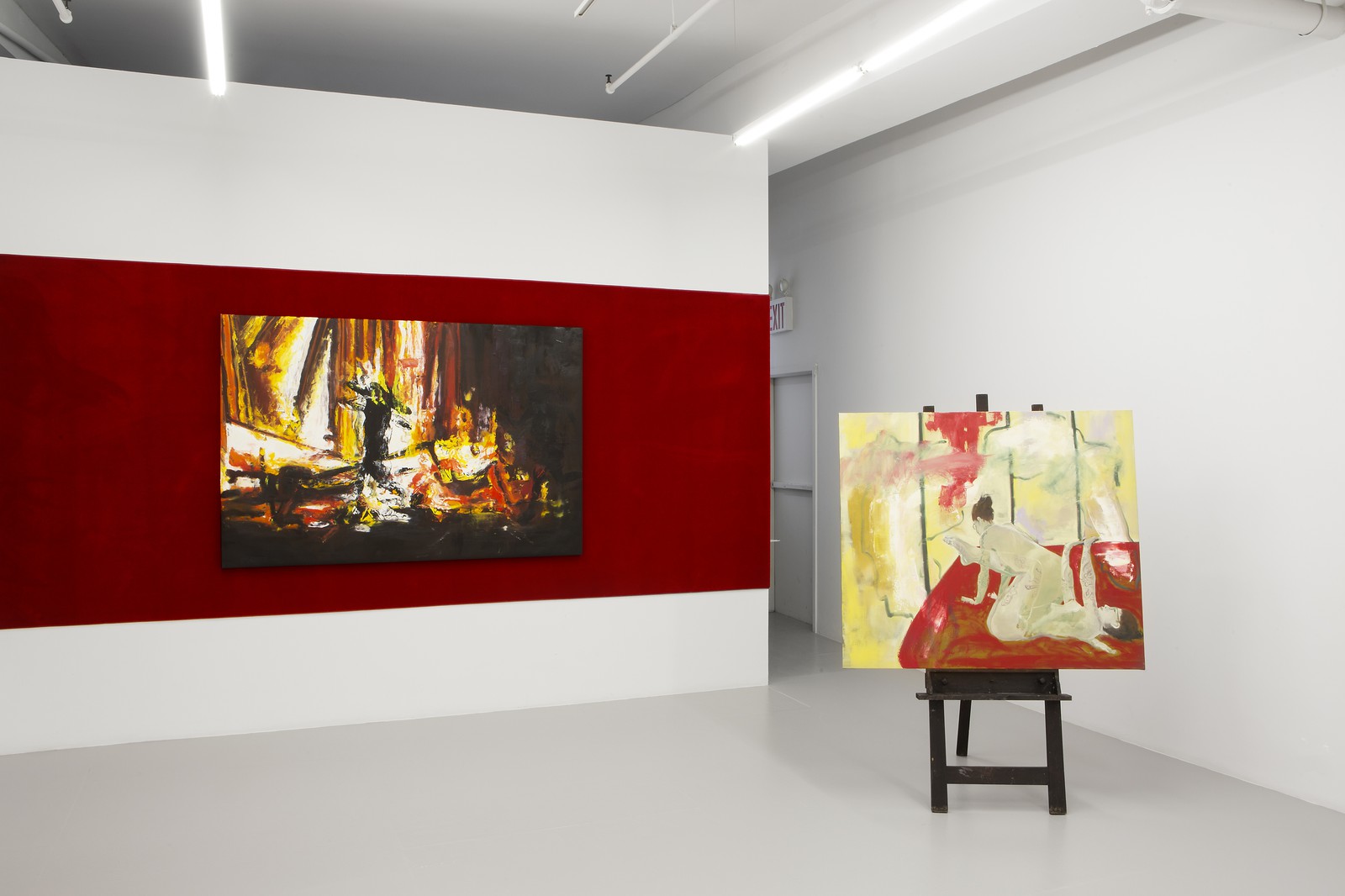
Installation view, Still American, Company Gallery, New York, 2020
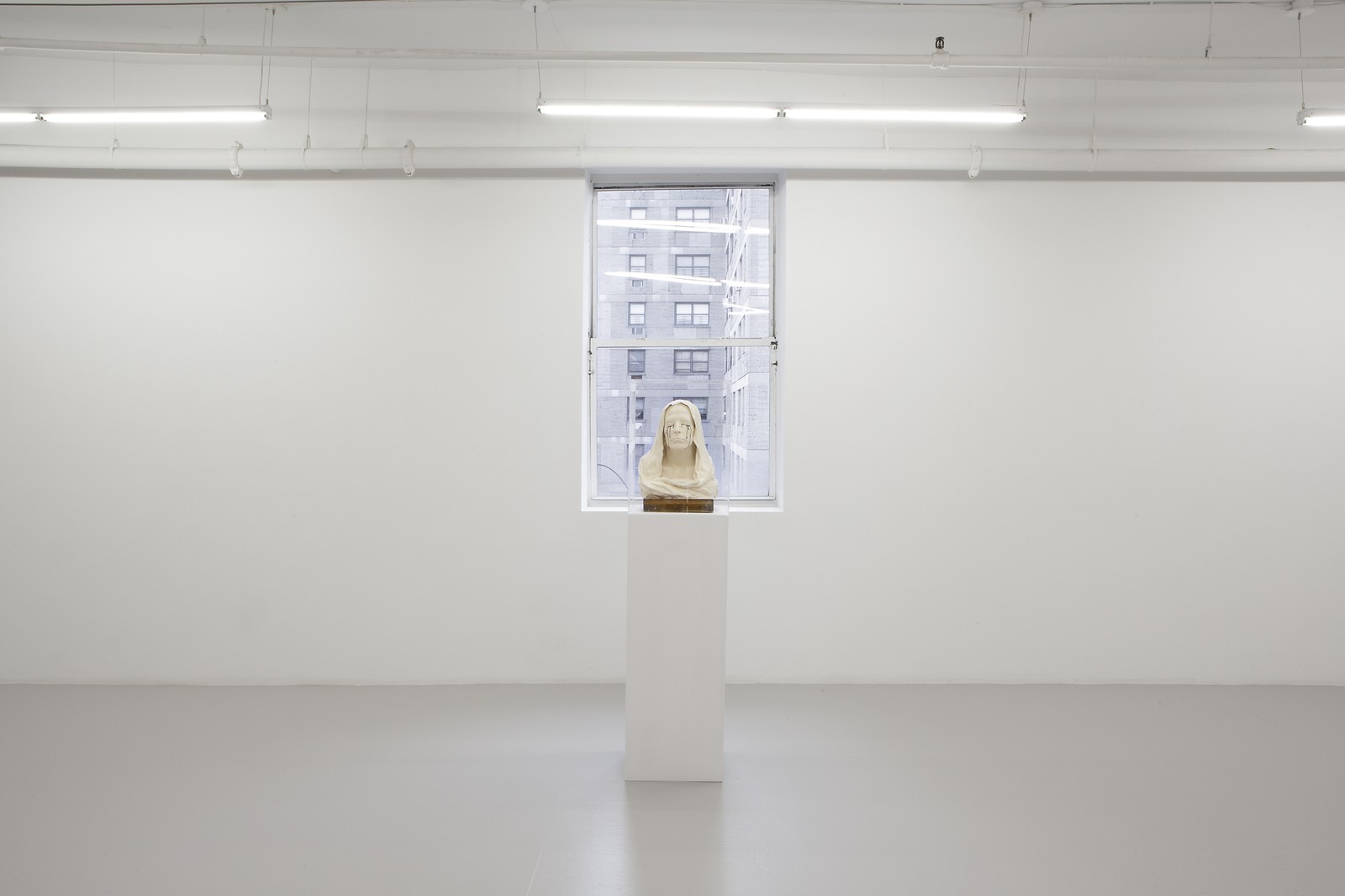
Installation view, Still American, Company Gallery, New York, 2020
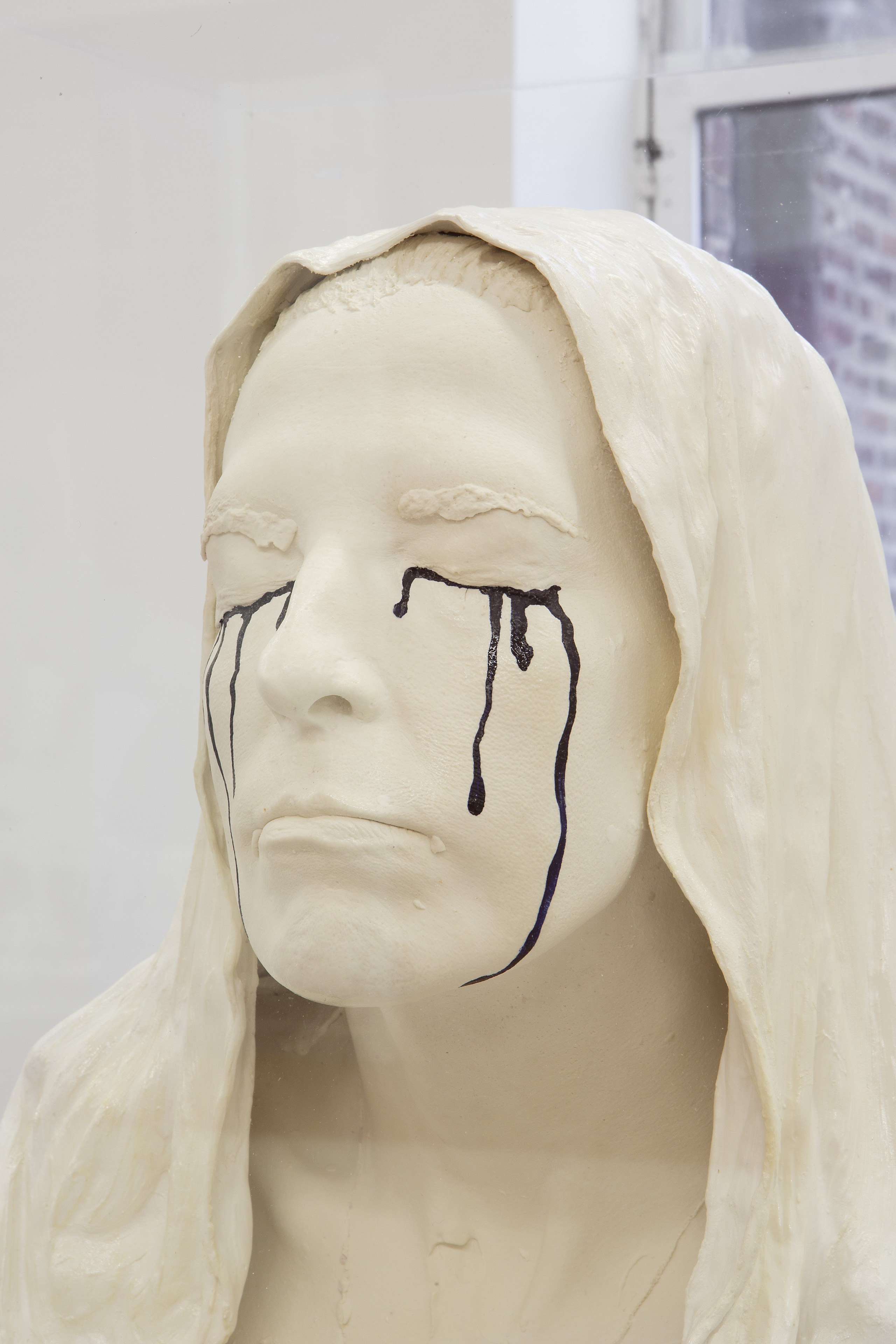
Installation view, Still American, Company Gallery, New York, 2020
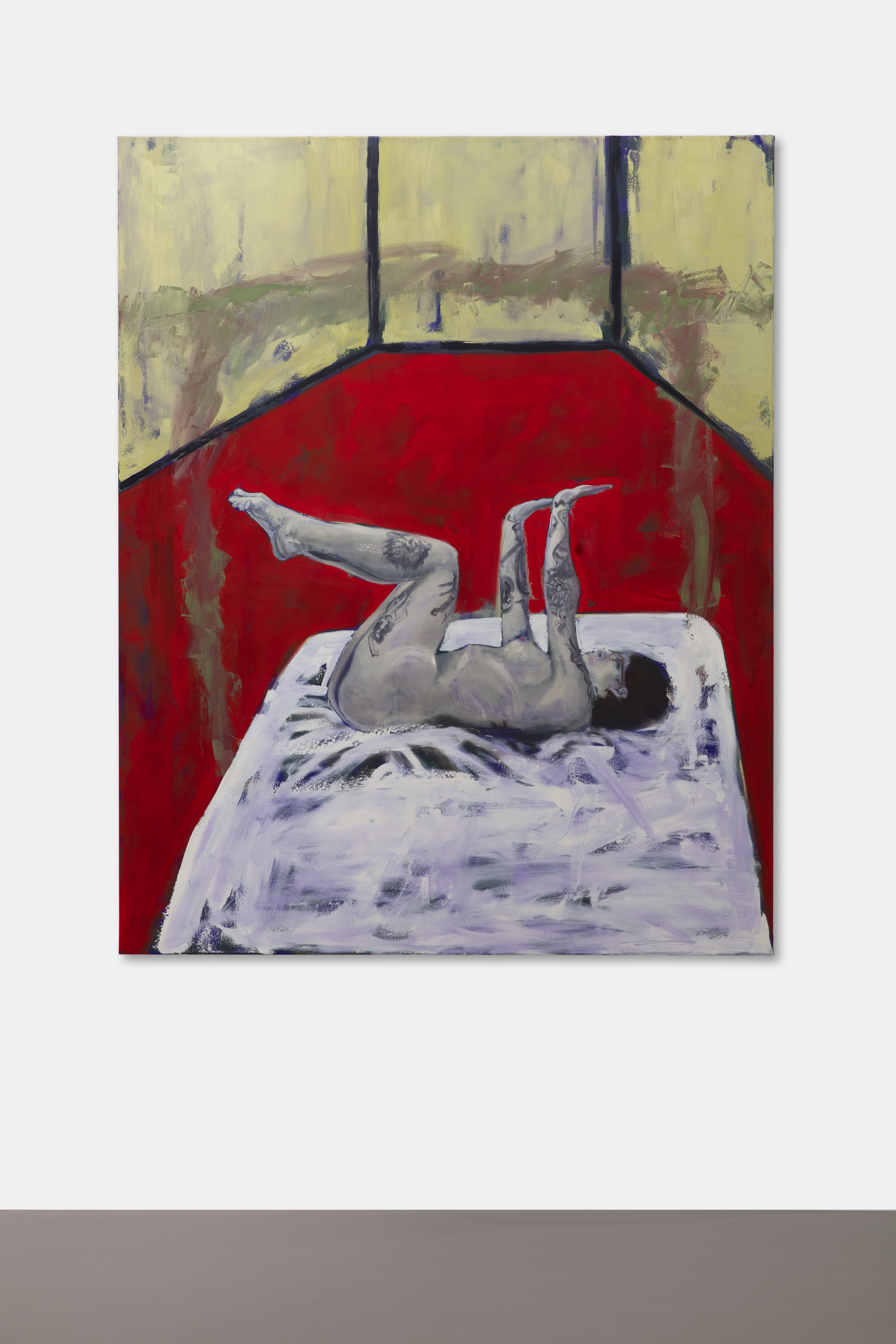
Jeanette Mundt, Climbing, Jeanette Mundt IV, 2019, oil on Canvas, 152 × 122 cm, 60 × 48 1/2 in
Whitney Biennial
Whitney Museum of Modern Art, New York, 2019
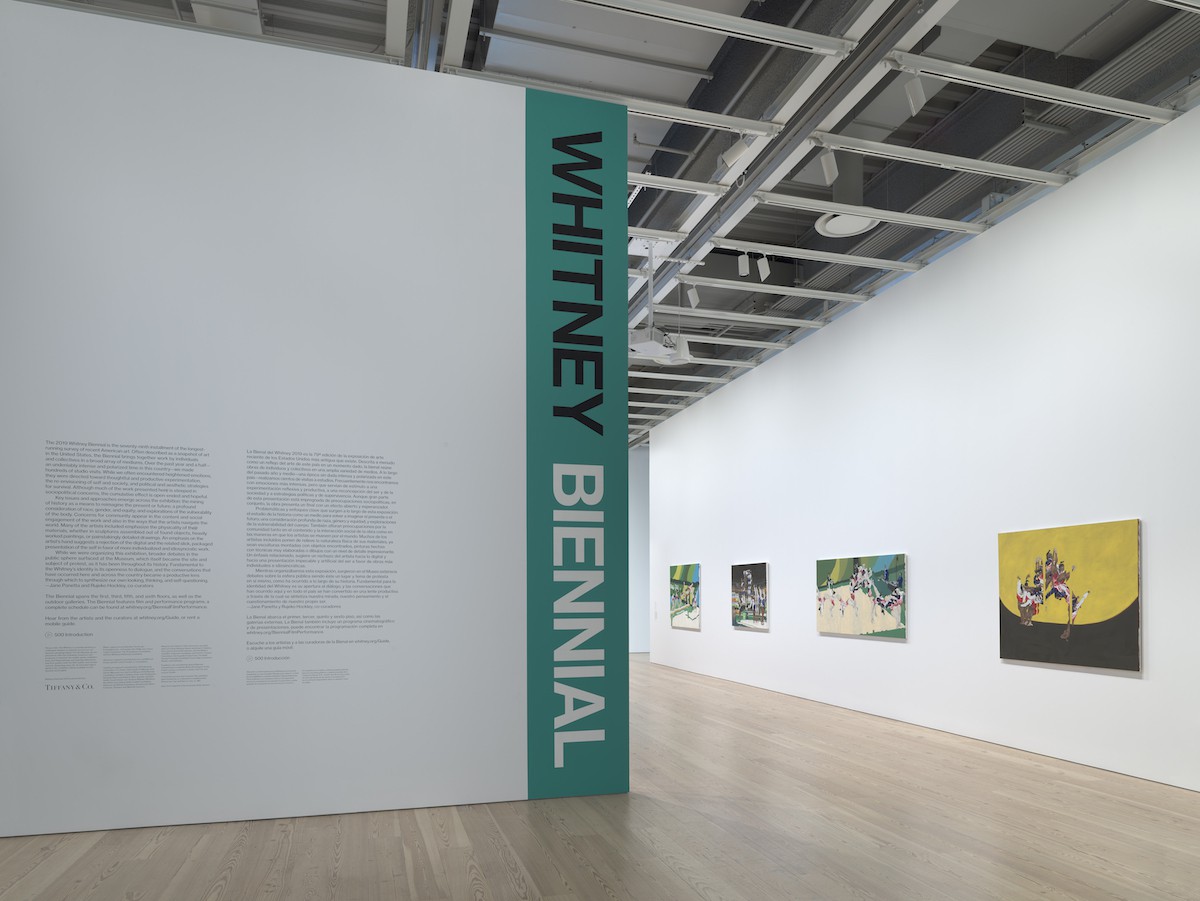
Installation view, Whitney Biennial, Whitney Museum of Modern Art, New York, 2019
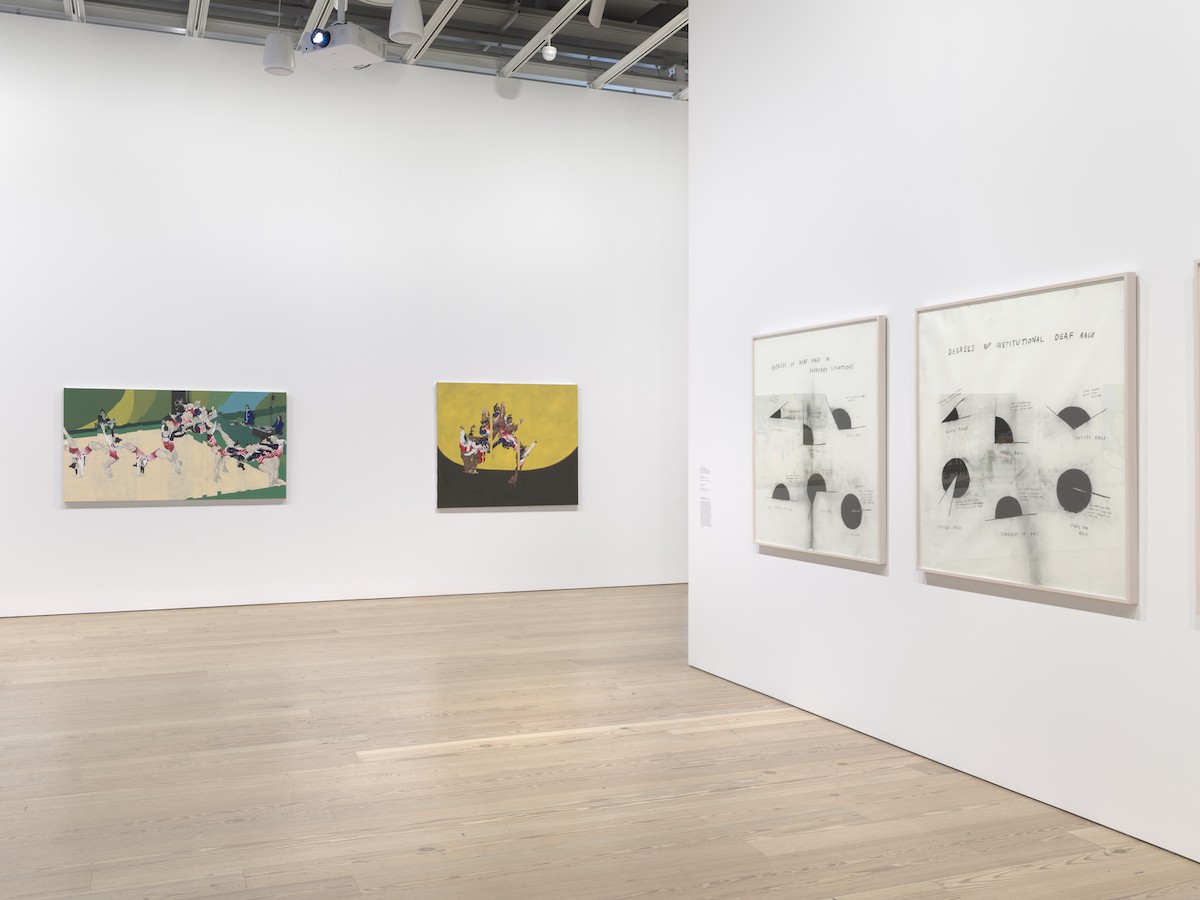
Installation view, Whitney Biennial, Whitney Museum of Modern Art, New York, 2019
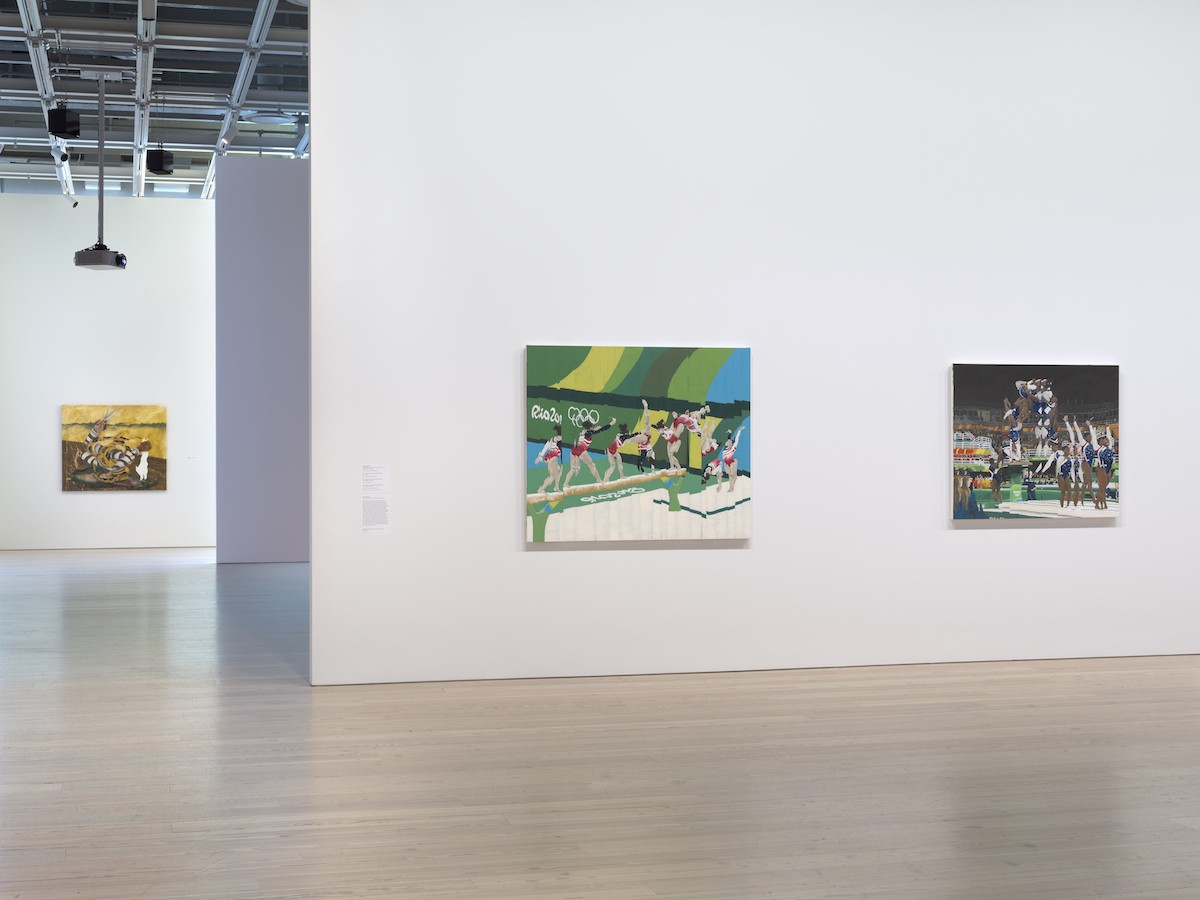
Installation view, Whitney Biennial, Whitney Museum of Modern Art, New York, 2019
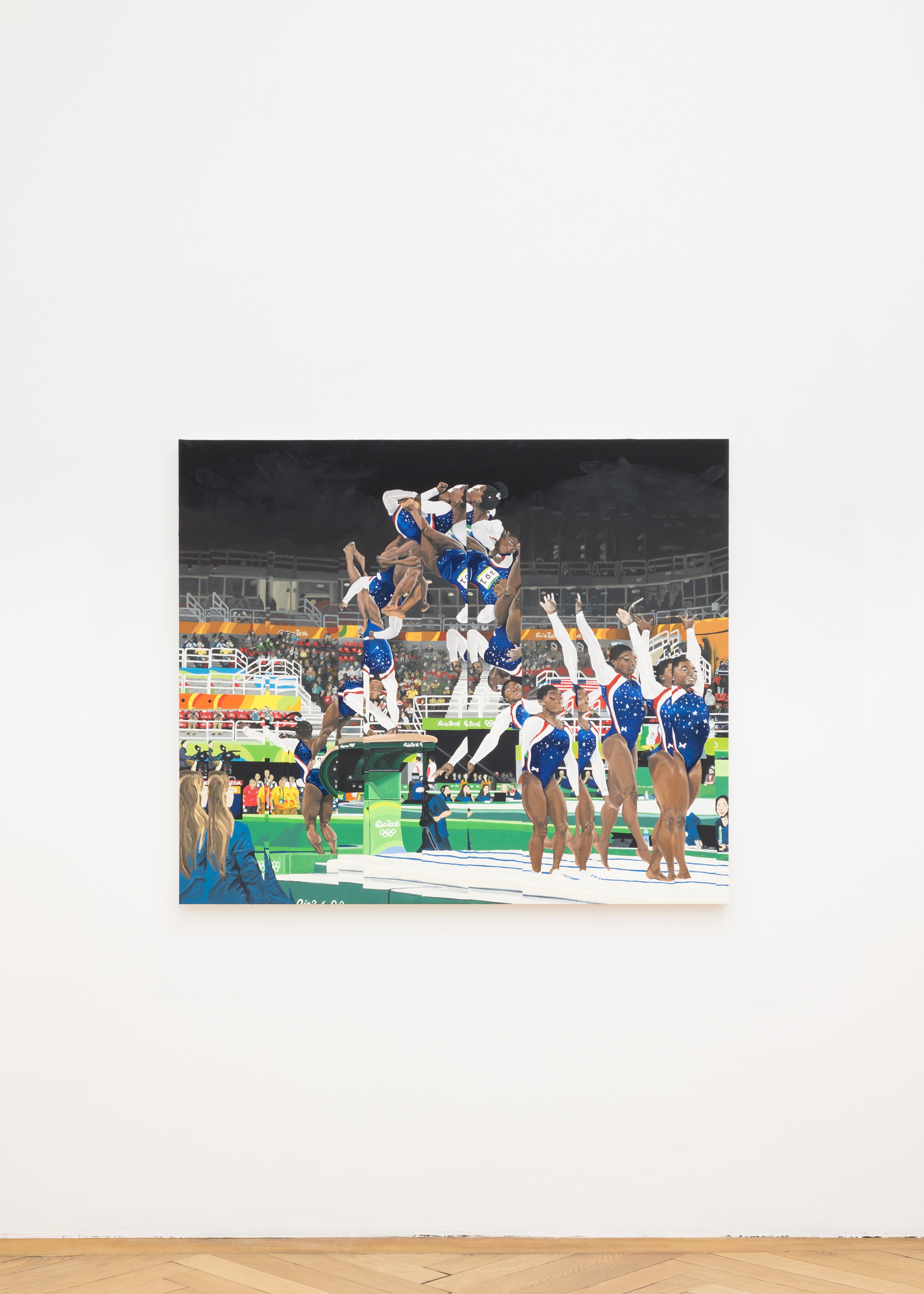
Jeanette Mundt, Born Athlete American: Simone Biles I, 2017, oil on linen
41 × 51 cm / 16 × 20 in
Painting: Now and Forever, Part III
Greene Naftali Gallery and Matthew Marks Gallery, New York, 2018
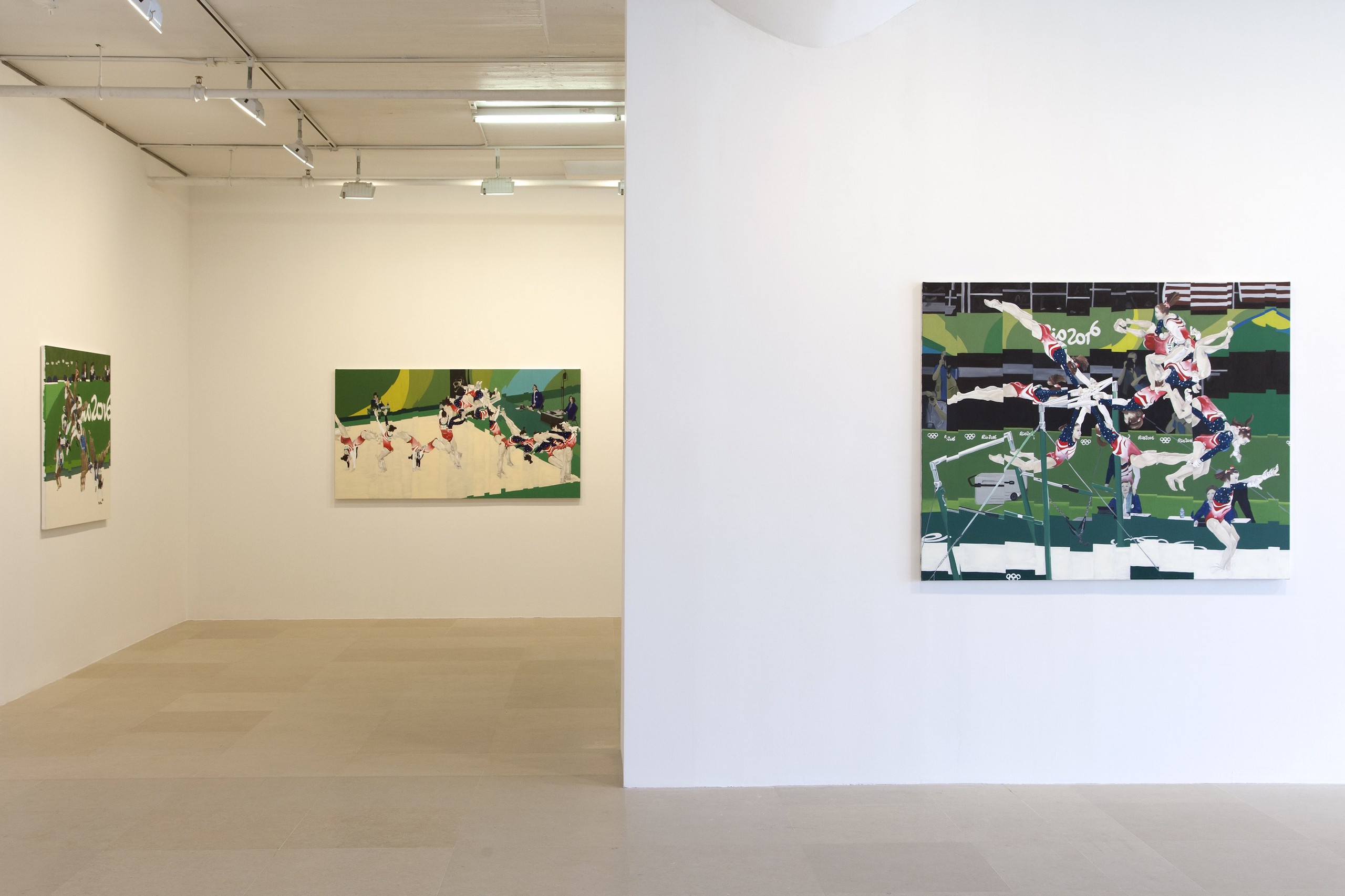
Installation view, Painting: Now and Forever, Part III, Greene Naftali Gallery, Matthew Marks Gallery, New York, 2018
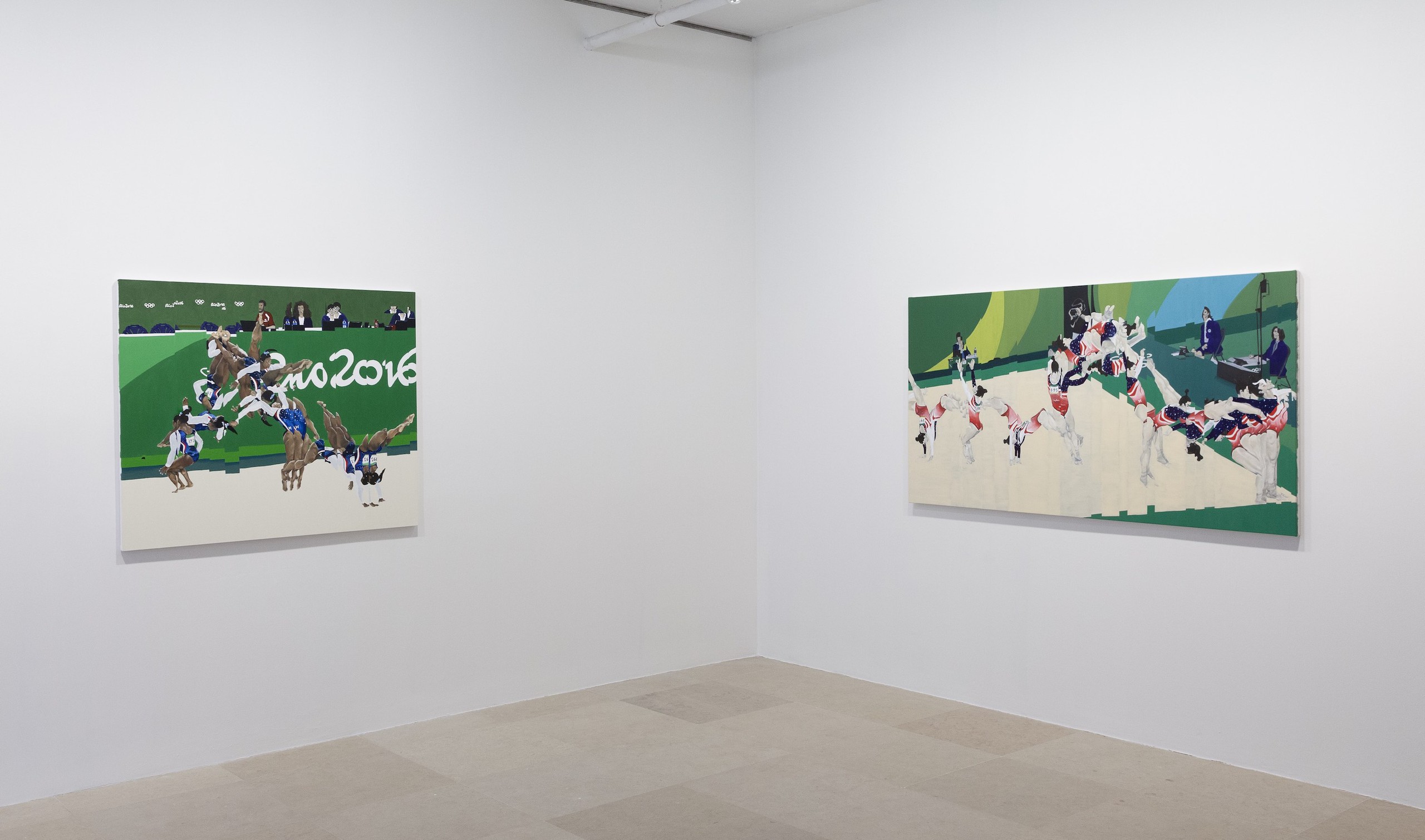
Installation view, Painting: Now and Forever, Part III, Greene Naftali Gallery, Matthew Marks Gallery, New York, 2018
Vitalist Economy of Painting
Galerie Neu, Berlin, 2018, curated by Isabelle Graw
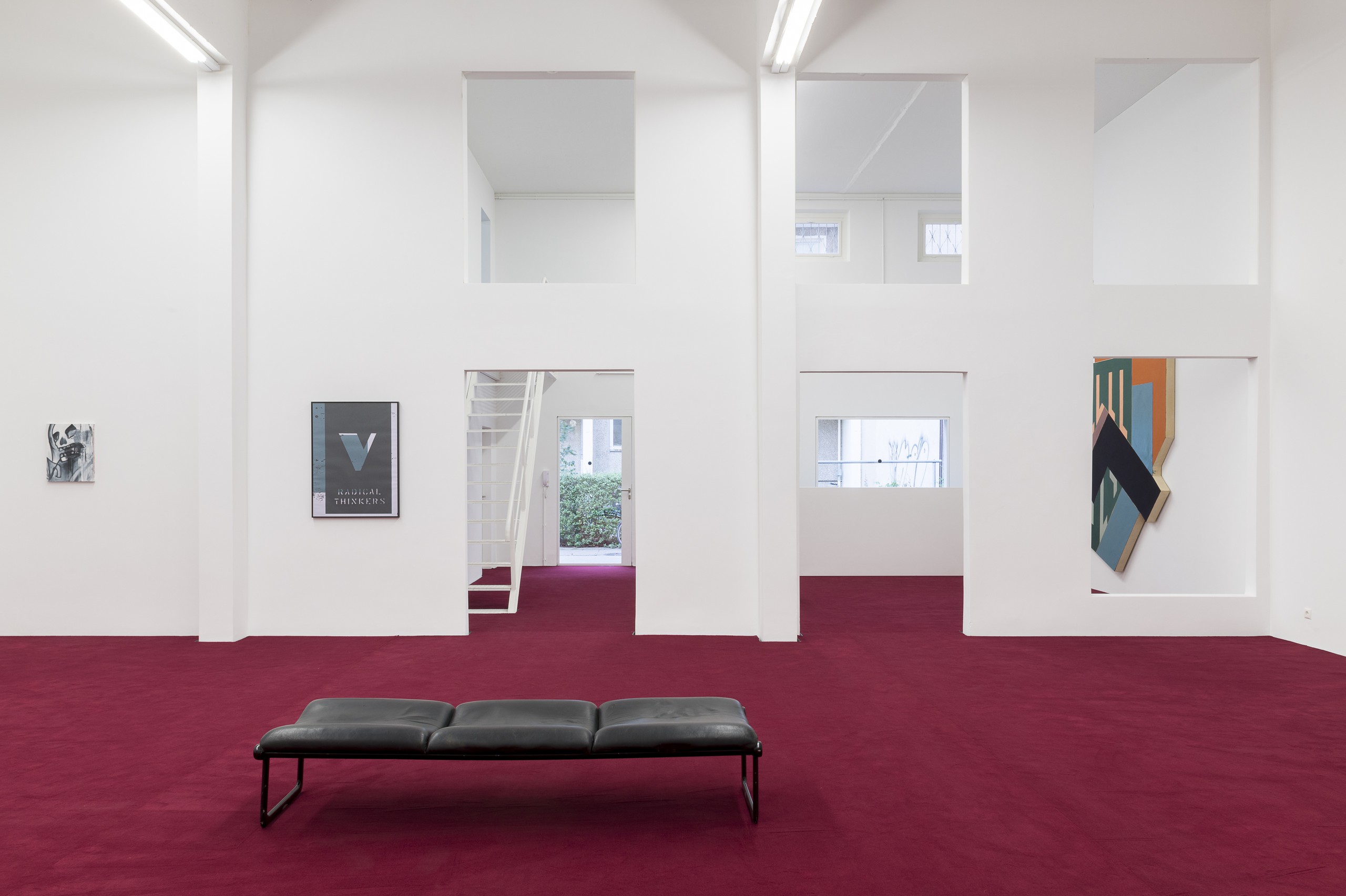
Installation view, Vitalist Economy of Painting, Galerie Neu, Berlin, 2018
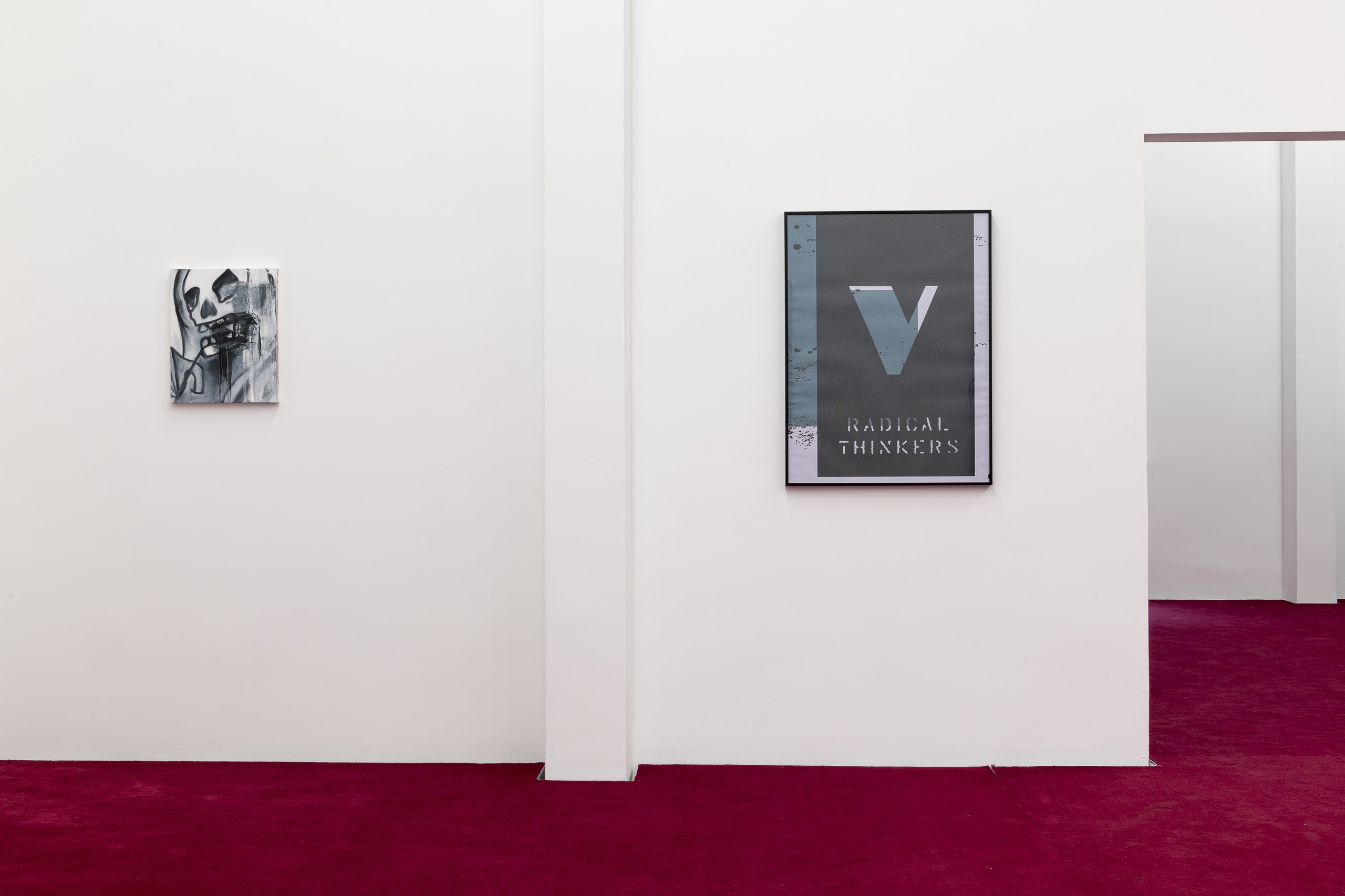
Installation view, Vitalist Economy of Painting, Galerie Neu, Berlin, 2018
This painting is one in a series for which Jeannette Mundt worked with JPG images of tattoos by her partner Ned Vena. The motif—a death’s head that Vena himself wears on his skin—in turn derives from a skull painting by Van Gogh. The several layers of appropriation of visual material that went into Mundt’s picture are reflected by the peculiar way in which the motif shrinks from view: it looks like a faded and soiled copy of an orig- inal that is difficult to reconstruct. The blurring of the sketched skull—paint seems to bleed through the outline—likewise signals the reference to a source in the distant past. Meanwhile, by reproducing her boyfriend’s tattoo, the artist implies that what he wears as a symbol of his singularity is in fact indefinitely reproducible. Mundt’s series acknowledges her partner’s influence in her art and at once transcends it. Read as a tribute to Vena, the picture is apt to downplay any sense of competition between them. Read as an idiosyncratic adaptation of his artistic approach, it turns the traditional hierarchy between painter and muse on its head: Mundt, it emerges, is the “winner” in this relationship.
- Isabelle Graw
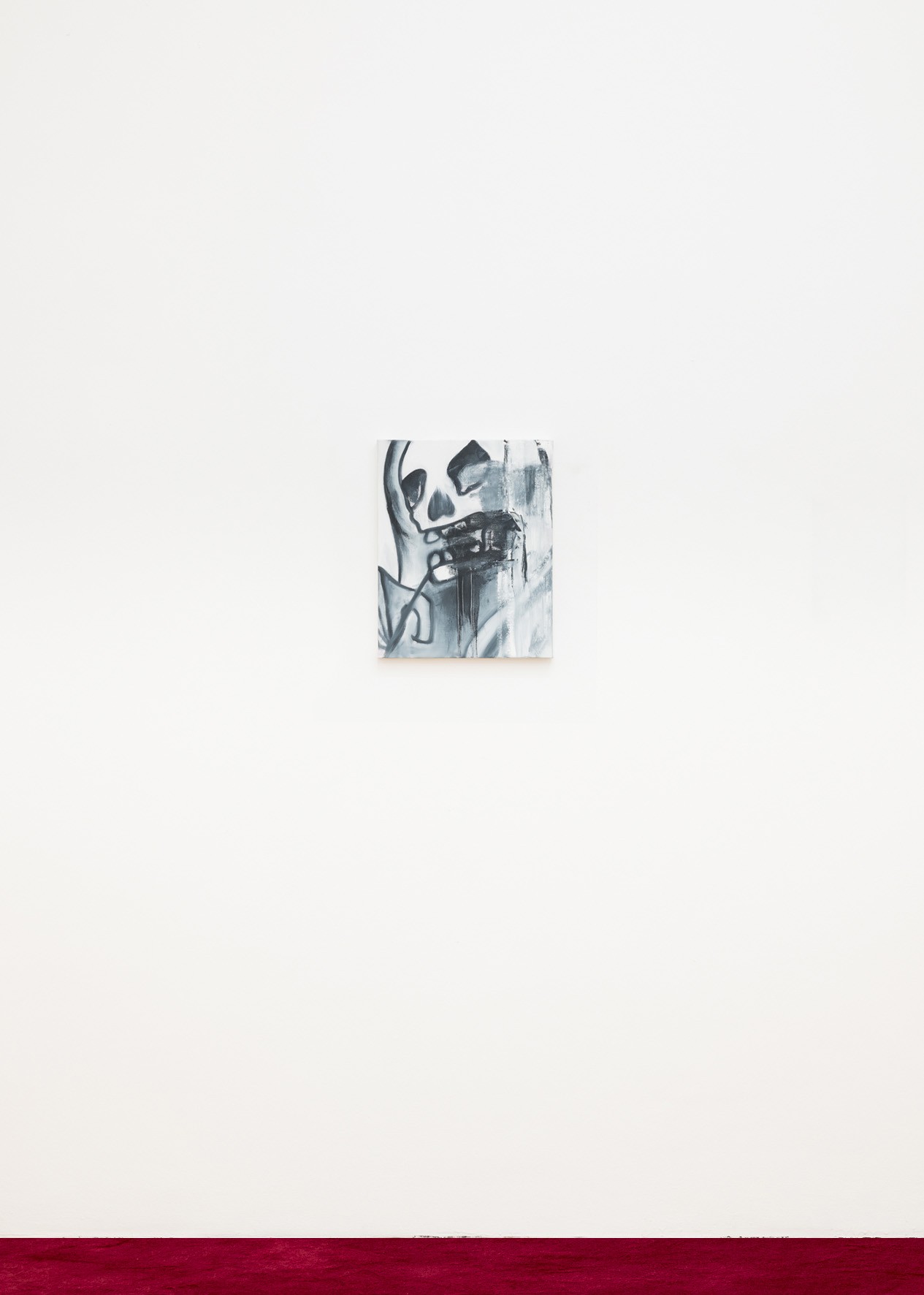
Jeanette Mundt, Baby Like the Wind, 2018, Oil on linen, 51 × 41 cm,
20 × 16 in
Lana del Rey
Société, Berlin 2018
I. Blind landing. Two-and-a-half twists in the air. Back handspring onto vaulting table. Roundoff onto spring- board. Reversal to transfiguration. Roundoff-one-and-a-half-twist step out-roundoff-back handspring-arabian double front-front layout salto. Splicing motion, mutilating time.
II. The “becoming subject”— the becoming Olympiad-blind landing out of Amanar; the becoming American- teenaged-tattooed; the becoming female-Blaze Pink into camouflage-latent hunter drive. Engendering and gendering the sport, not by rules but by an “immanent sense of the game,”* shared in a field: the necessity of play for the players; the production of durability thru corporeal dispositions; the gymnastic elasticity of bodies, stretched by fabric and time.
III. But what ensures this durability? The extensification of Edison’s originary electric pen, naval homosociality transfigured too, subsumed in punk aesthetic; “the social life of things,”** objects traveling on their own damn course—in and out of commodity, body to conjugal body...and yet the question’s the same: what is the boundary of pain, where the sea meets the sky and death resides.
IV. The becoming dead- “Spirit attains its truth only by finding itself in absolute dismemberment.”*** What is the process of this finding? Not annihilation, but incomplete destruction. The kind of time you start to see passing, death as anti-economy, vanitas in the Latin—futility of material.
Esra Padgett
*Bourdieu and Wacquant. 1992. An Invitation to Reflexive Sociology. **Appadurai. 1986. The Social Life of Things.
*** Mbembe. 2003. Necropolitics.
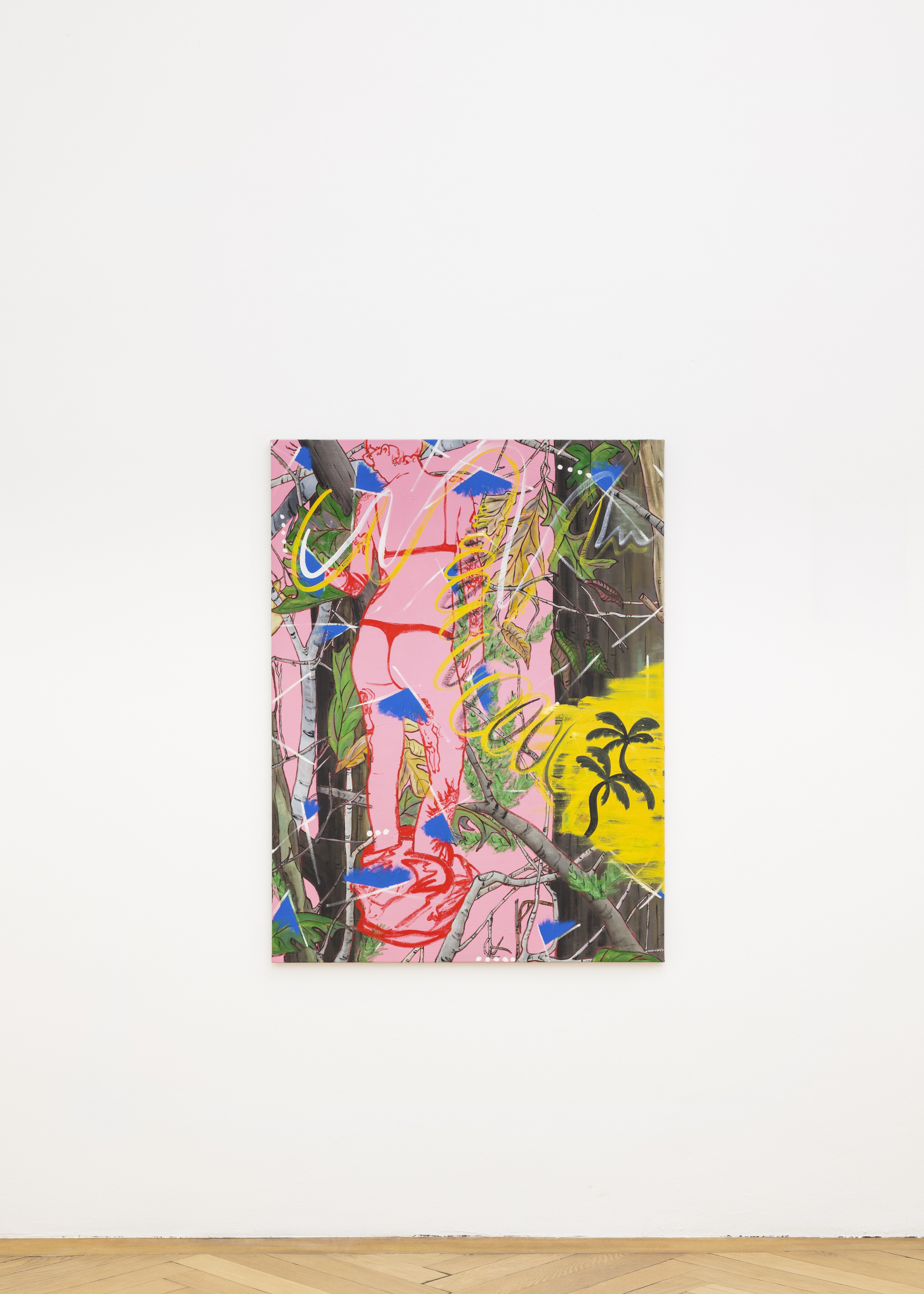
Jeanette Mundt, on Pink Camo 3, 2018, oil on linen, 122 × 91 cm / 48 × 36 in
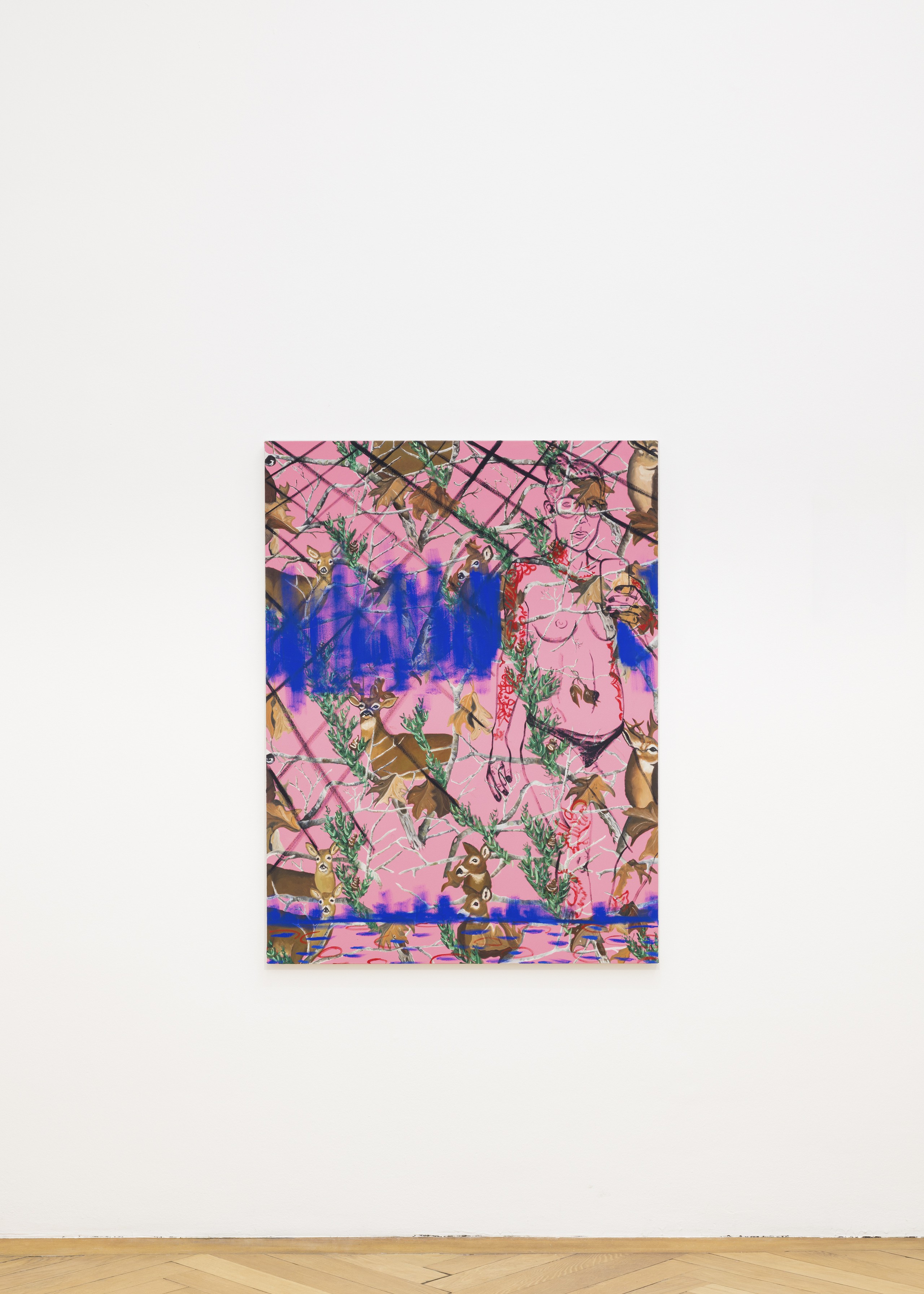
Jeanette Mundt, Pink Camo 2, 2017, oil on canvas, 122 × 91 cm / 48 × 36 in

Jeanette Mundt, on Pink Camo 1, 2017, oil on canvas, 142 × 91 cm / 56 × 36 in
Heroin
My head is aching.
It ached yesterday as well.
I should take pills I guess - for the headache.
I can see the dust around me. Settled. I can see the dust accumulating. And I keep bleeding.
but quietly this time.
They vomit and cough outside on the sidewalk, in the daylight. Something — an addiction. I can hear it.
The young girl told the religious social worker that doing heroin for her was like getting to kiss jesus for her.
Heroin is stronger than any human tie. It is stronger than any compelling argument. It is stronger than a religious belief. It is the devil incarnate. It is evil. It's the black plague. It's like the zombie apocalypse. It's death.
You can’t make this up. It’s all been said. It’s been recorded.
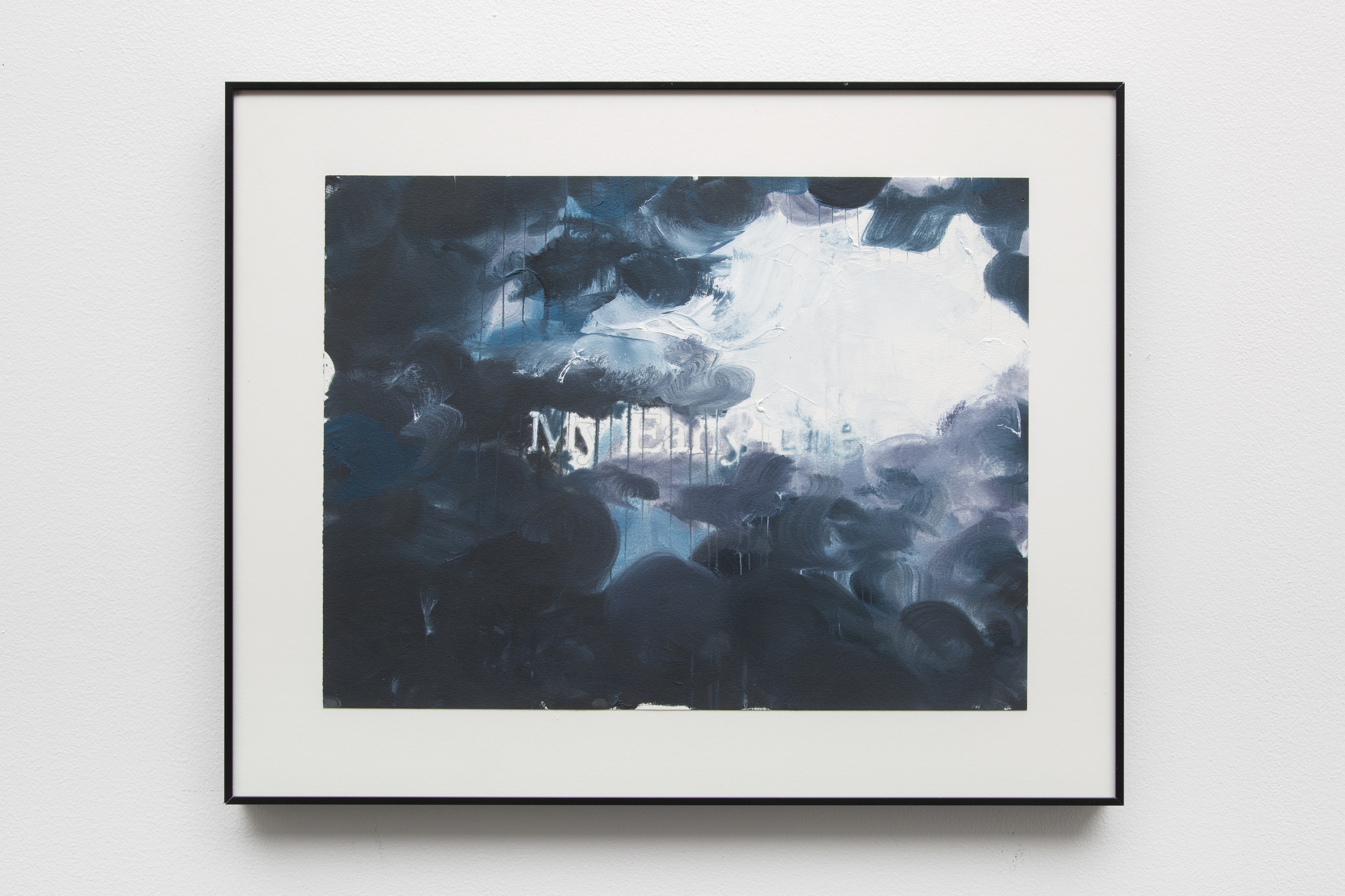
Installation view, Addict Distract, Bridget Donahue, New York, 2018
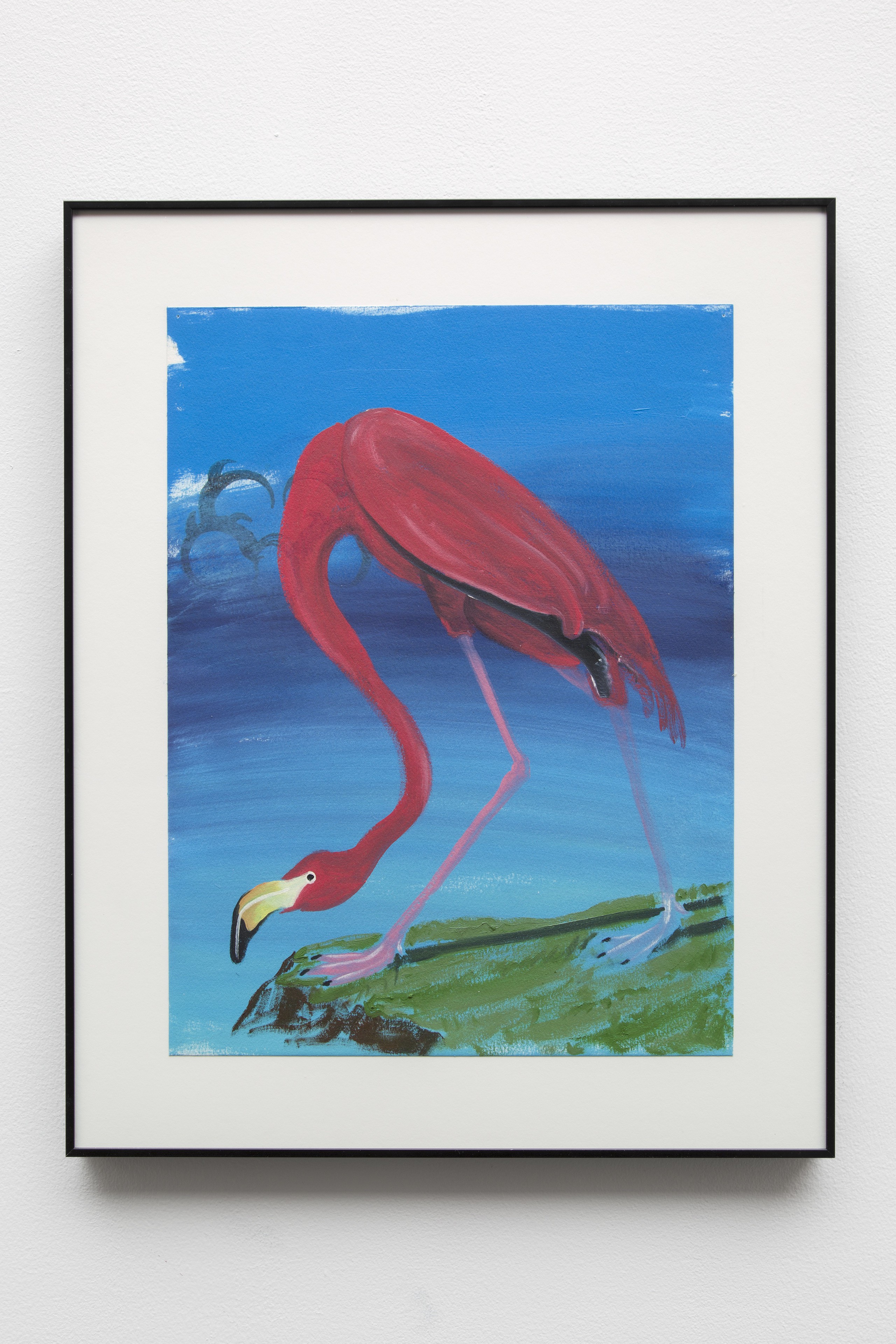
Installation view, Addict Distract, Bridget Donahue, New York, 2018
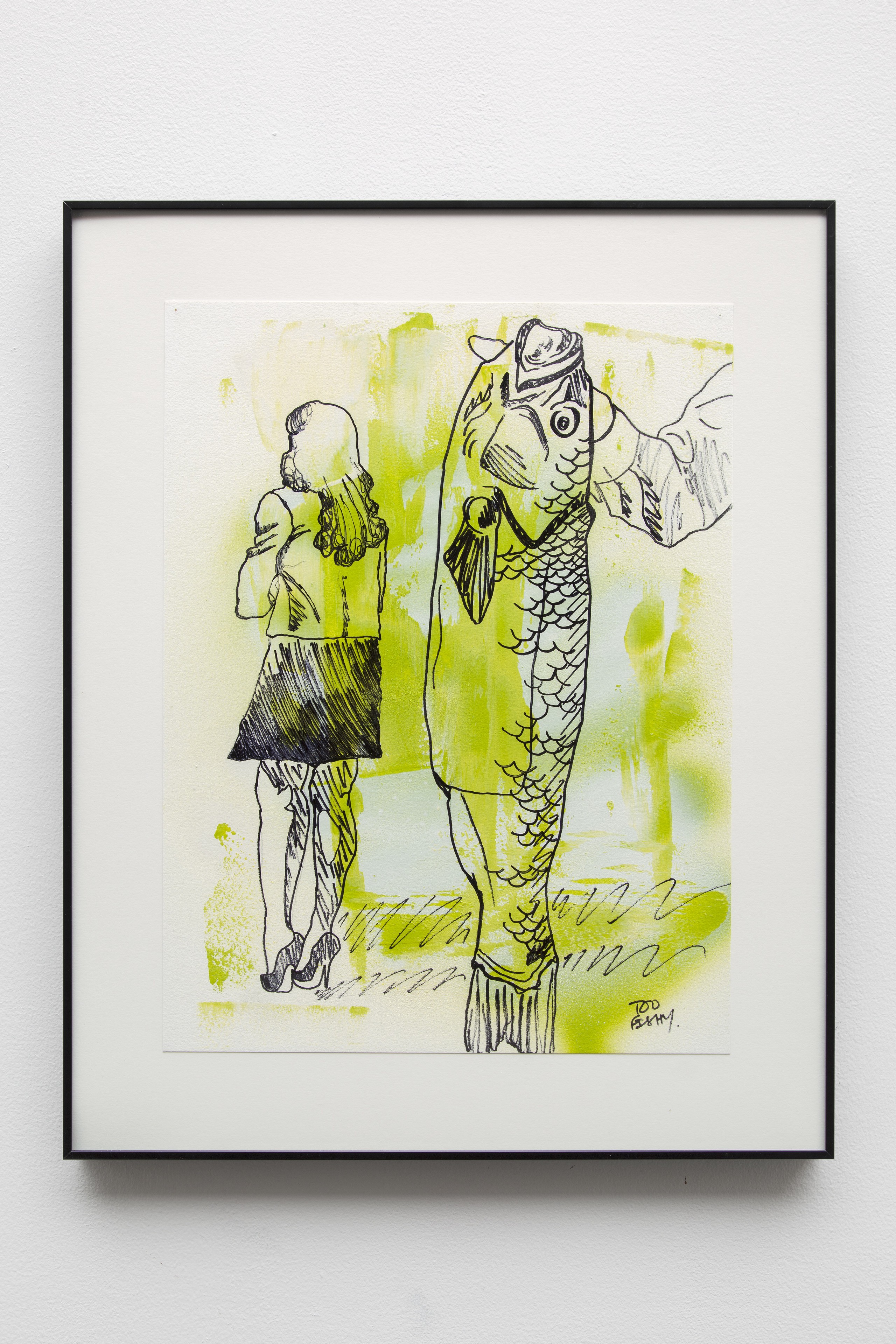
Installation view, Addict Distract, Bridget Donahue, New York, 2018
Beggars Thieves Faeries and Whores
The Green Gallery, Milwaukee, 2016
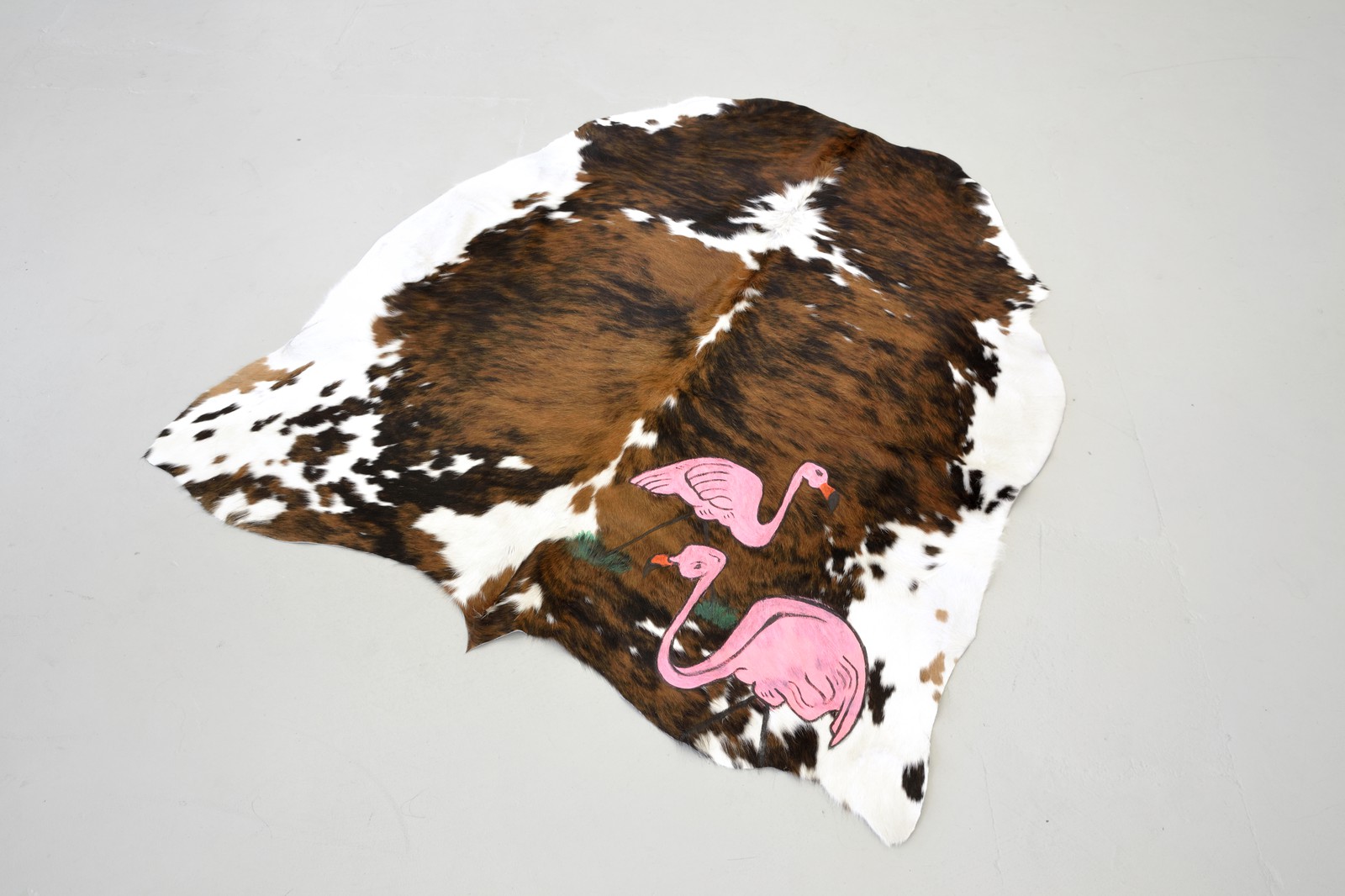
Installation view, Beggars Thieves Faeries and Whores, The Green Gallery, Milwaukee, 2016
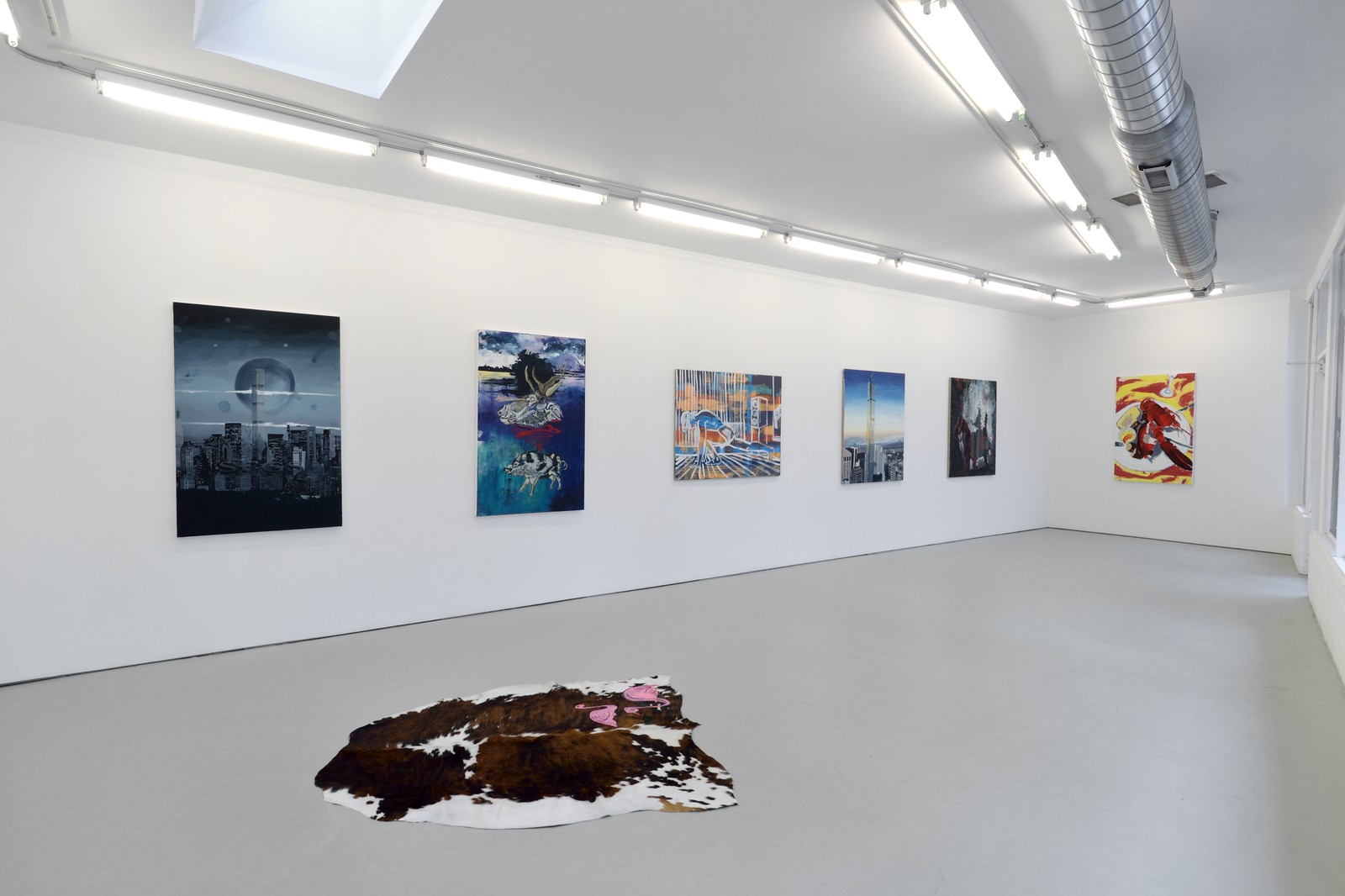
Installation view, Beggars Thieves Faeries and Whores, The Green Gallery, Milwaukee, 2016
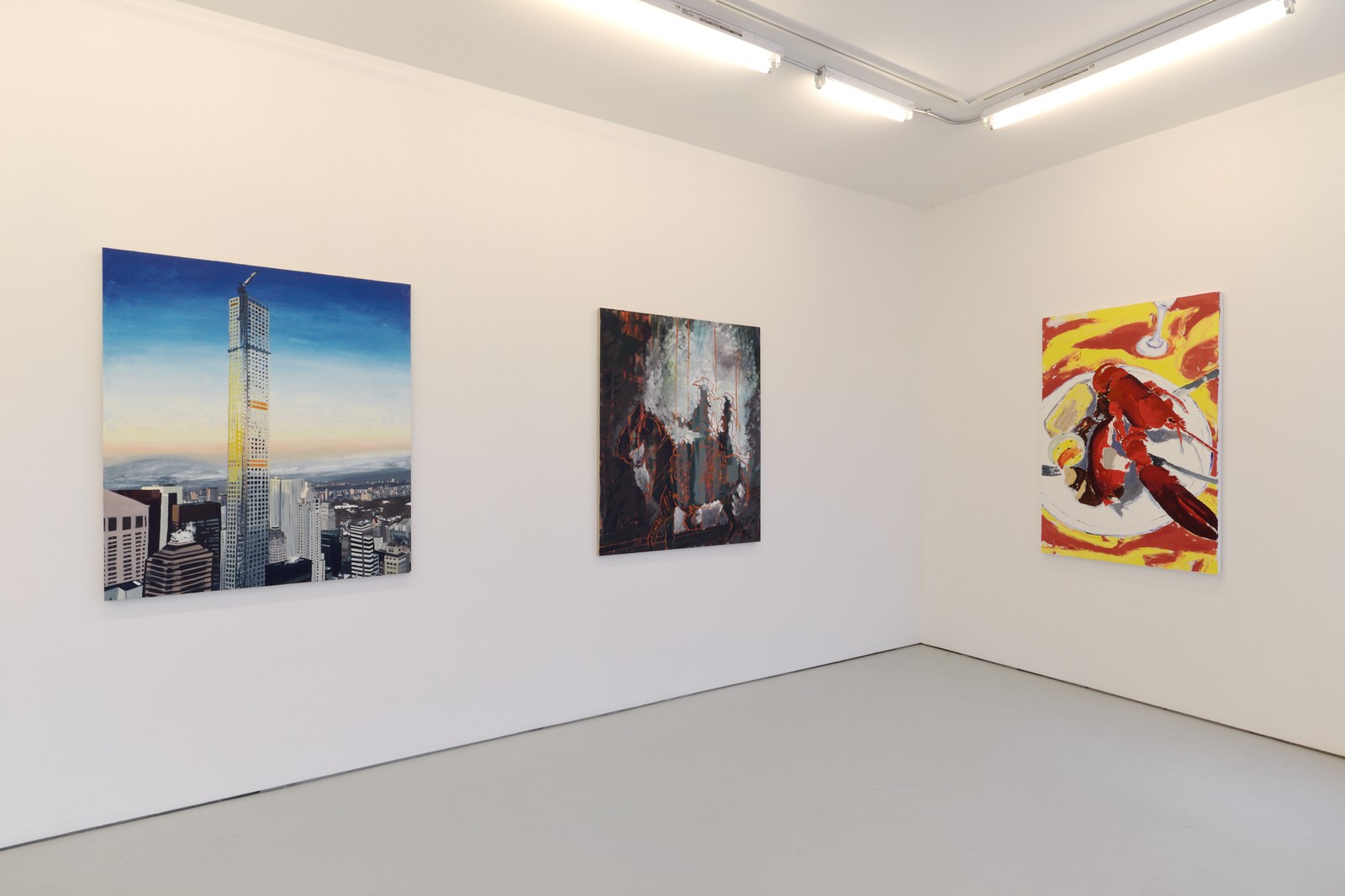
Installation view, Beggars Thieves Faeries and Whores, The Green Gallery, Milwaukee, 2016
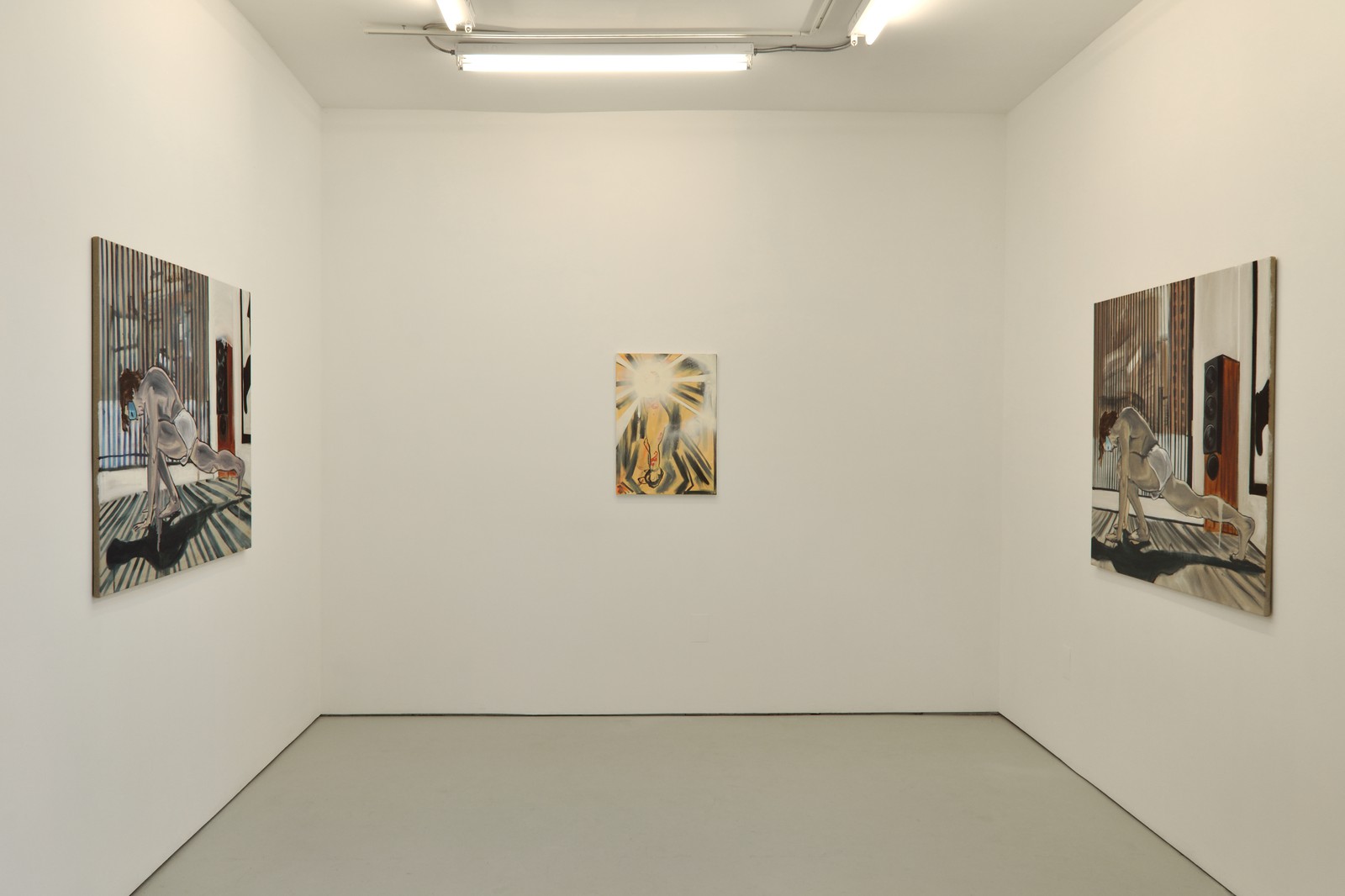
Installation view, Beggars Thieves Faeries and Whores, The Green Gallery, Milwaukee, 2016
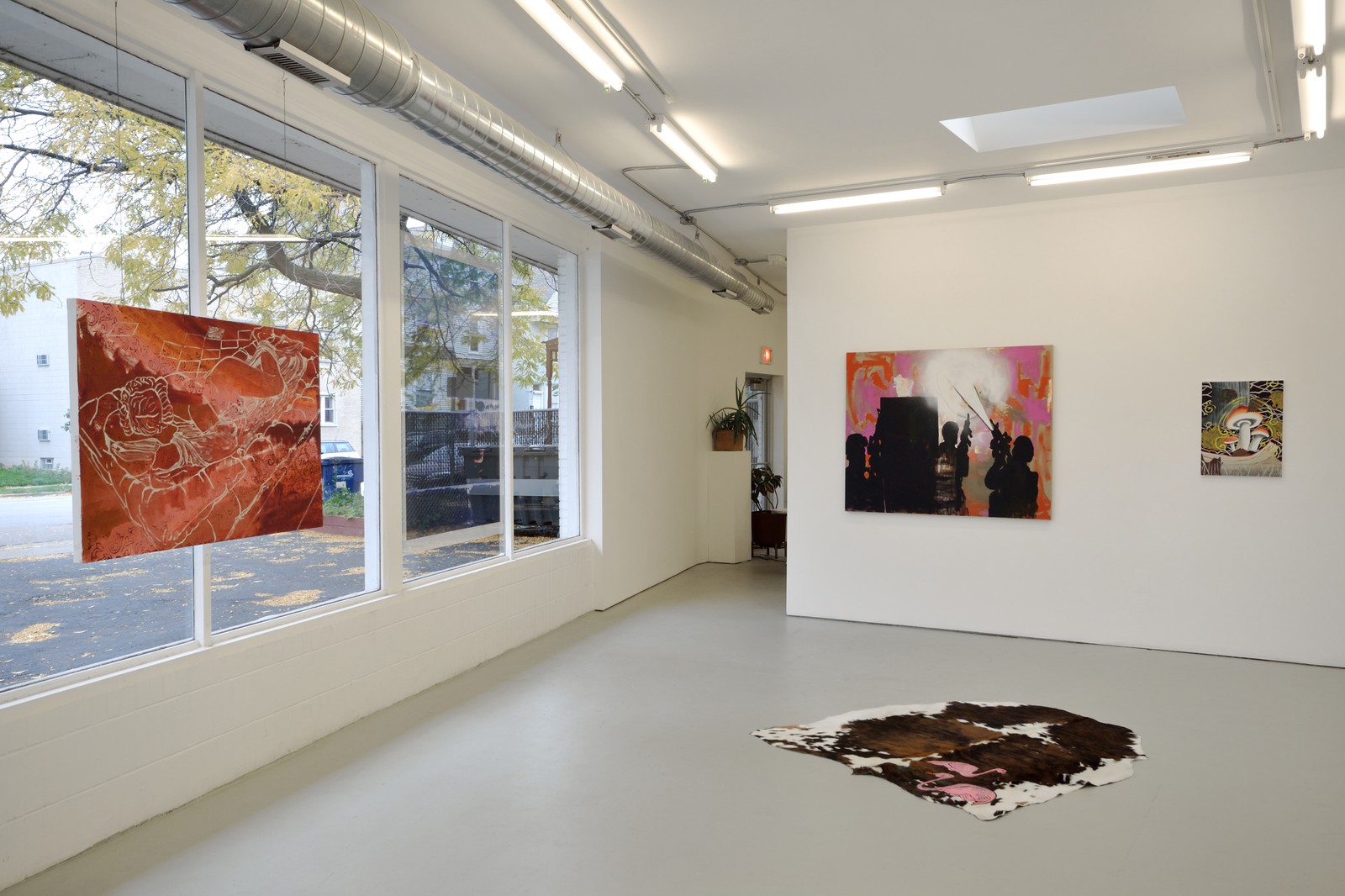
Installation view, Beggars Thieves Faeries and Whores, The Green Gallery, Milwaukee, 2016
Heroine: Cape Cod, Usa
Off Vendome, New York, 2016
Ultra Beauty, Treating Objects Like Women
Société, Berlin 2015
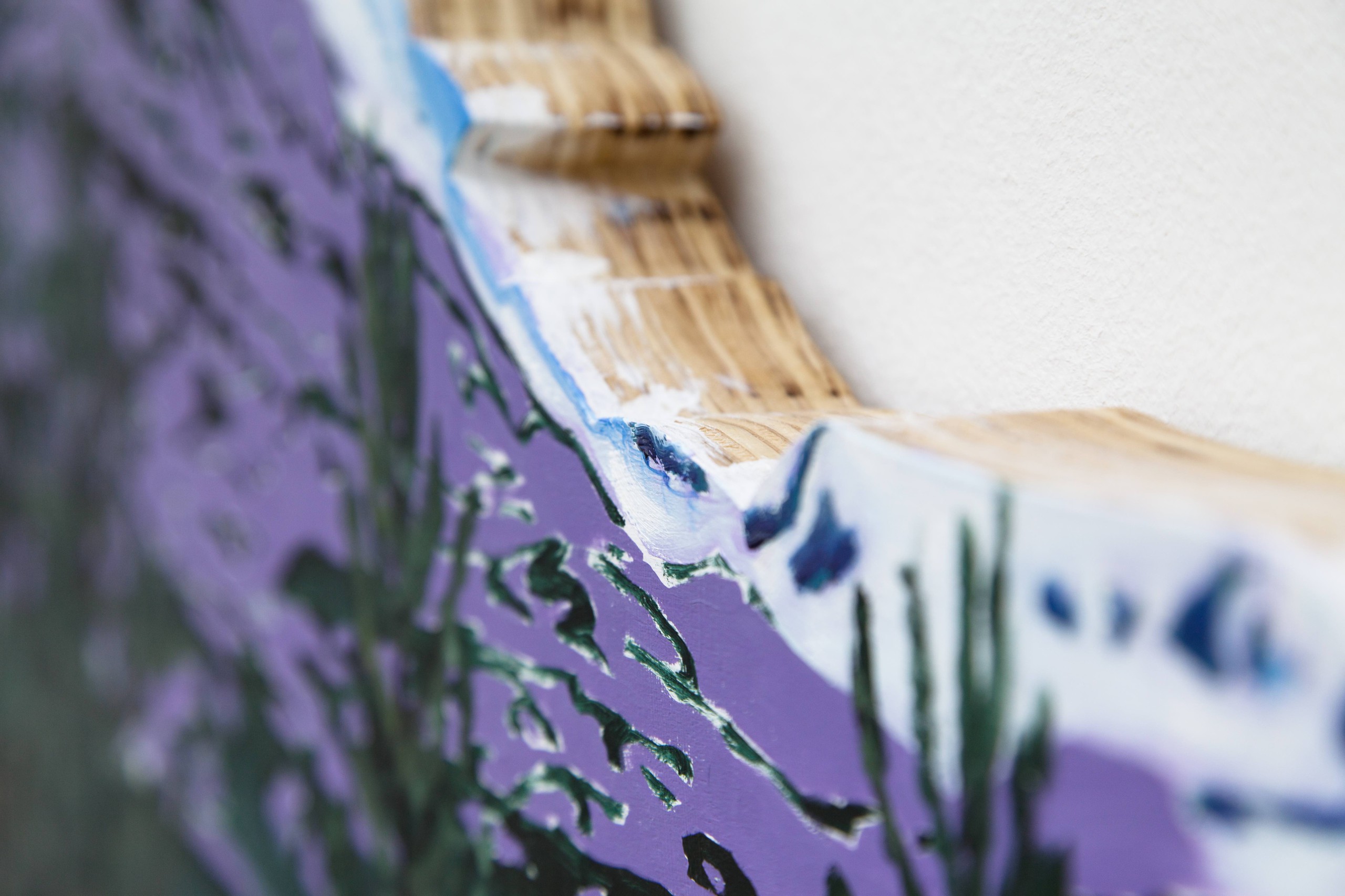
Detail view, Ultra Beauty, Treating Objects Like Women, Société, Berlin, 2015
Ultra Beauty
Based on a detail of Hendrik Goltzius's The Fall of Man, the painting And Outcasts Always Mourn is an exercise in the melancholic. The work of mourning, they said, is the elimination of demons. The demons remain, next to motifs that pervade the exhibition: landscape, specifically mountains, and women. The mourning withstands the presence of the demons. The title is taken from a line in Oscar Wilde’s The Ballad of Reading Gaol:
And alien tears will fill for him,
Pity's long-broken urn,
For his mourners will be outcast men, And outcasts always mourn.
I’m a Dragon, You’re a Whore fuses H.R. Geiger's alien and the threat of the female body. It is not a superimposition. It is not pretense. There is a subtle ferocity in asking about the surface of a painting, the creation of an image - it is a question of belief, of faith, of imagination - an imaginary being. How much weight is given to the presence of reduction? The layering of colors on the surface of this linen is realized with folded paper towels and the force of weight.
I Want You, I Want You layers permanent marker and oil paint - drawing and painting. The Sharpie seeps through the oil paint with time - persistent. The motifs create the pictorial space. Or is it the other way around? Maybe the mountains make a female form. The drawing is taken from the stills that make up a GIF of Patricia Arquette riding Fred Madison in Lost Highway. The mountain, the Matterhorn, is reflecting itself, a game of perception.
French Beach is originally Odilon Redon’s. Mundt stared at a printout on 8 1/2 x 11” paper of the rock that comes out of the beach, in front of the sky and ocean. The reproduction is unifying, eliminating all grounds, shallowing space and abstracting shapes - leaving room for interpretation.
Elizabeth Taylor leaves the ocean in He Becomes Fed Up With The Dark Ones. The gay icon, the fallible female, in a space defined by lines, strokes, a suggestion of liquid. The rest is in the mind. The violence is in the mind. The artist can give a name to that violence.
There is a definitive impetus - to be now - that is thwarted by the anxieties of being now. Questions about relevancy strangle perspicuity. Or is it the other way around?
Treating Objects Like Women
When she was younger, growing up in Switzerland, the artist hiked the Bernese Alps with her family regularly. Mundt’s appreciation for the Alps formed later in life, after she had moved to back to America - you love her as she’s walking out the door. In an effort to bring the personal into the work, Mundt reached out to images of the Alps. The motif of the mountain in Ultra Jungfrau and The Aktenschrank leaves the linen and the wall to stand, straight up and down, braced by the filing cabinet, with a security lock set at 666 - a nod perhaps to And Outcasts Always Mourn, in the exhibition Ultra Beauty across the hall.
Elizabeth Taylor leaves the ocean in Untitled. The gay icon, the fallible female, in a space defined by permanent marker, lines, strokes, a suggestion of liquid. The rest is in the mind. The violence is in the mind. The artist can give a name to that violence.
Predator - the title and the image - is taken from Instagram. The artist wants what makes her laugh, she wants to have what she wants, she wanted to use metallic oil paint as well. Can you something be yours if you’ve made your own picture of it?
Preoccupied with women and the construction of femaleness, Mundt is likely to turn to women in popular culture. The protagonist of the musical Mamma Mia is one of these women and the well-known advertisement is actually an image of a pastel drawing of this character in the agony of ecstasy. Me As The Mamma Mia Lady, Me During My Stay In London As The Mamma Mia Lady, and Tanya and Rosie Try To Convince Donna Dancing Queen start with that quietly atrocious and delicate pastel that is so often recognized but not quickly identified.
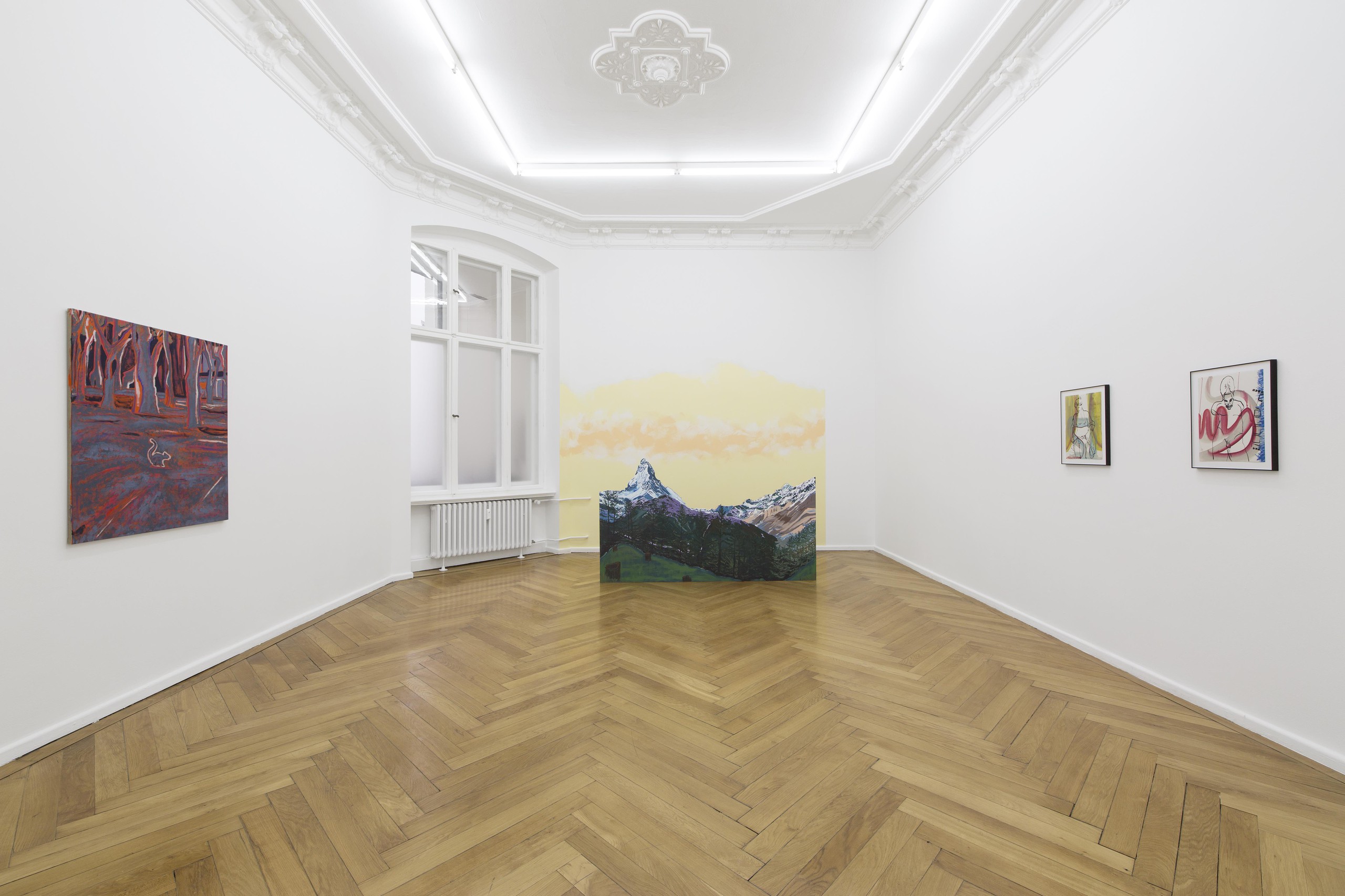
Installation view, Ultra Beauty, Treating Objects Like Women, Société, Berlin, 2015
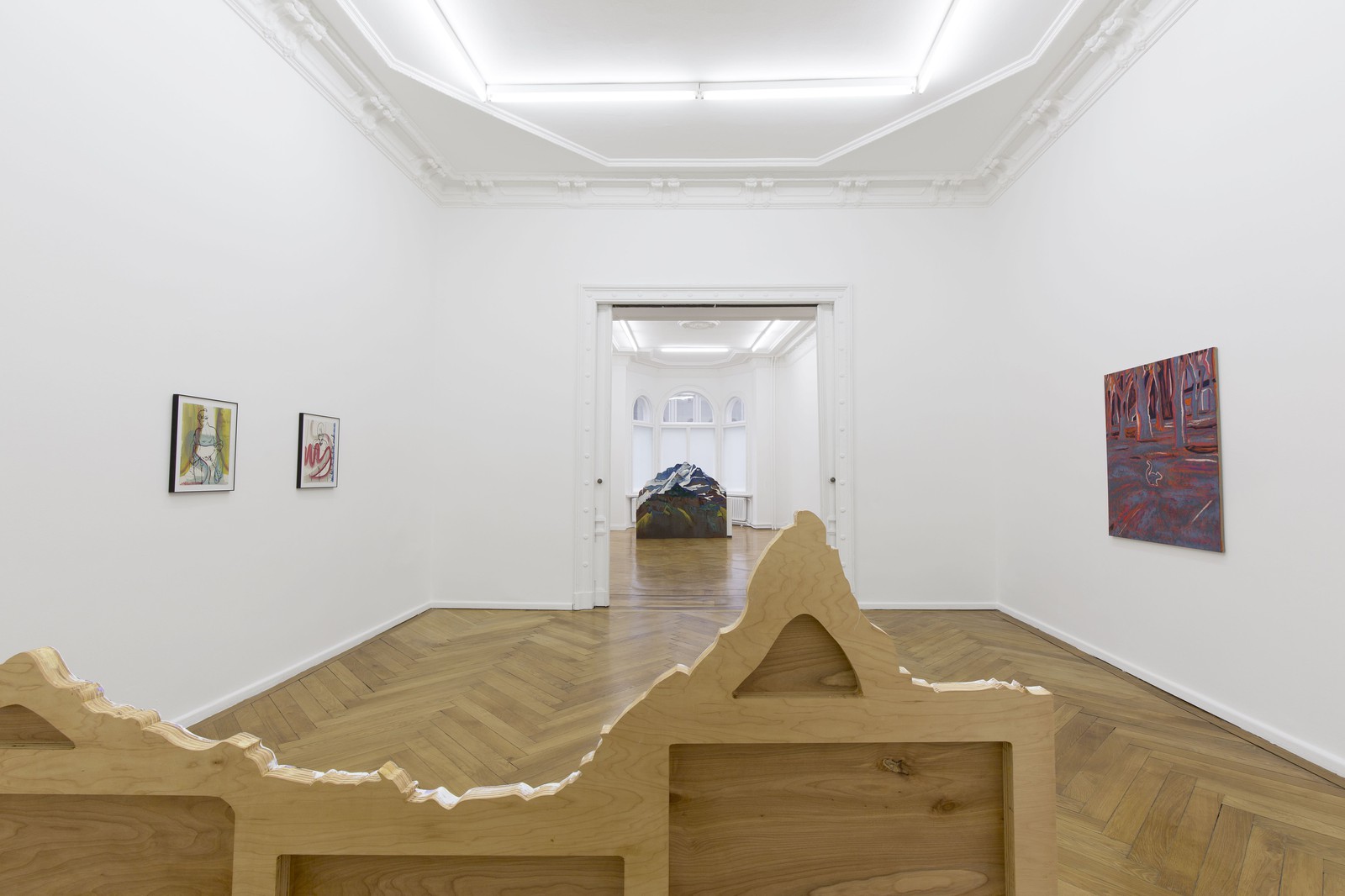
Installation view, Ultra Beauty, Treating Objects Like Women, Société, Berlin, 2015
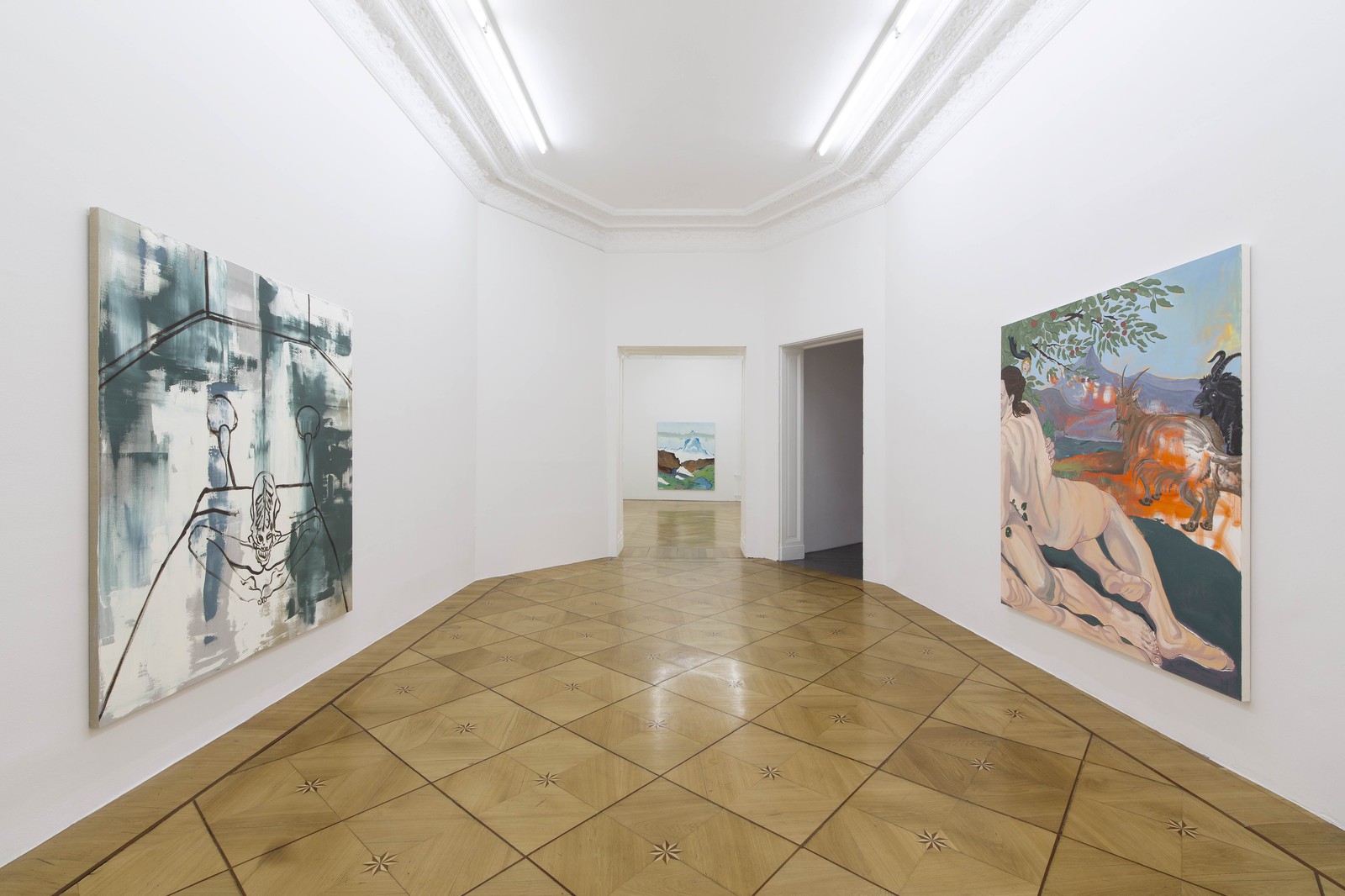
Installation view, Ultra Beauty, Treating Objects Like Women, Société, Berlin, 2015
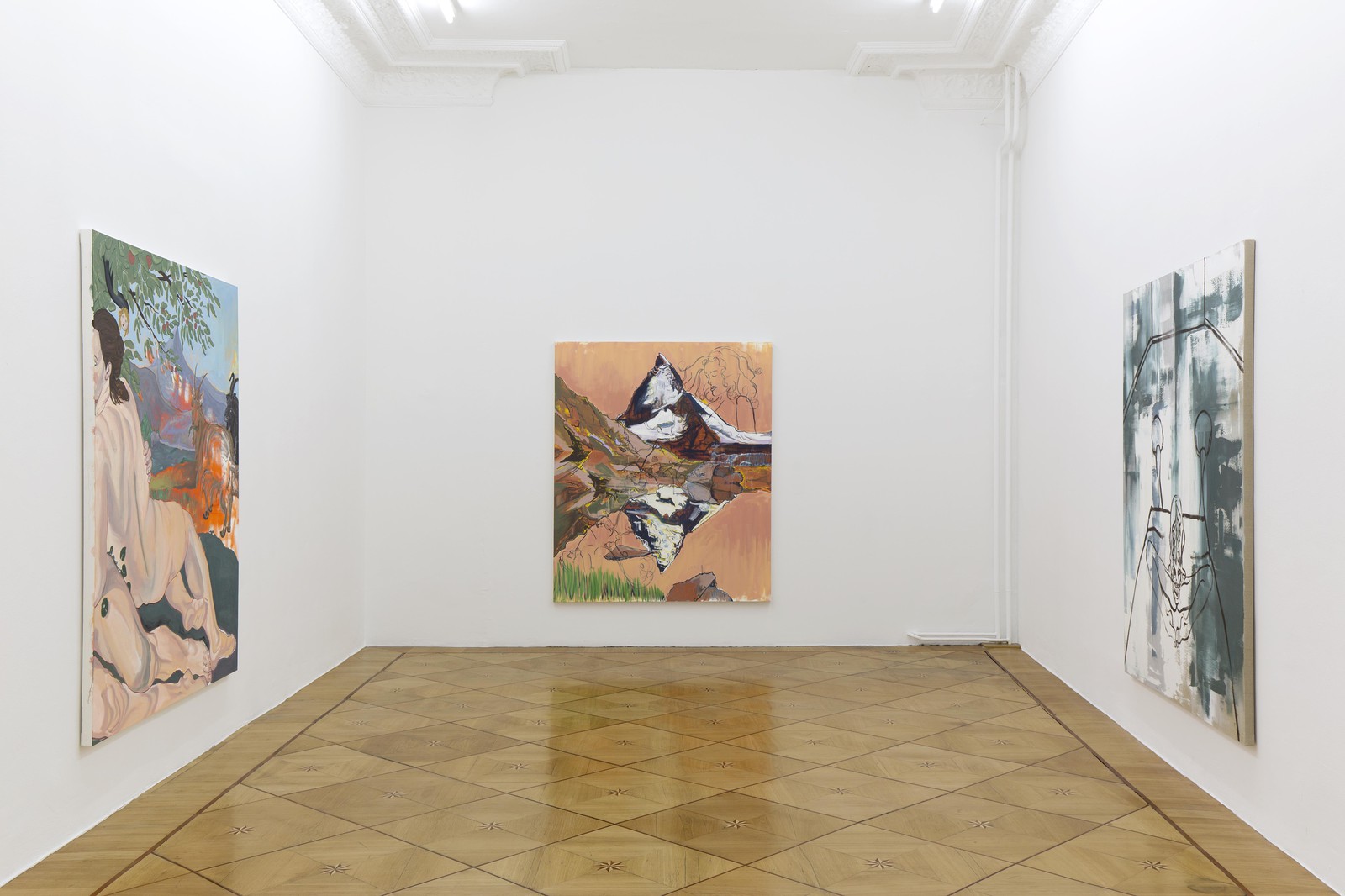
Installation view, Ultra Beauty, Treating Objects Like Women, Société, Berlin, 2015
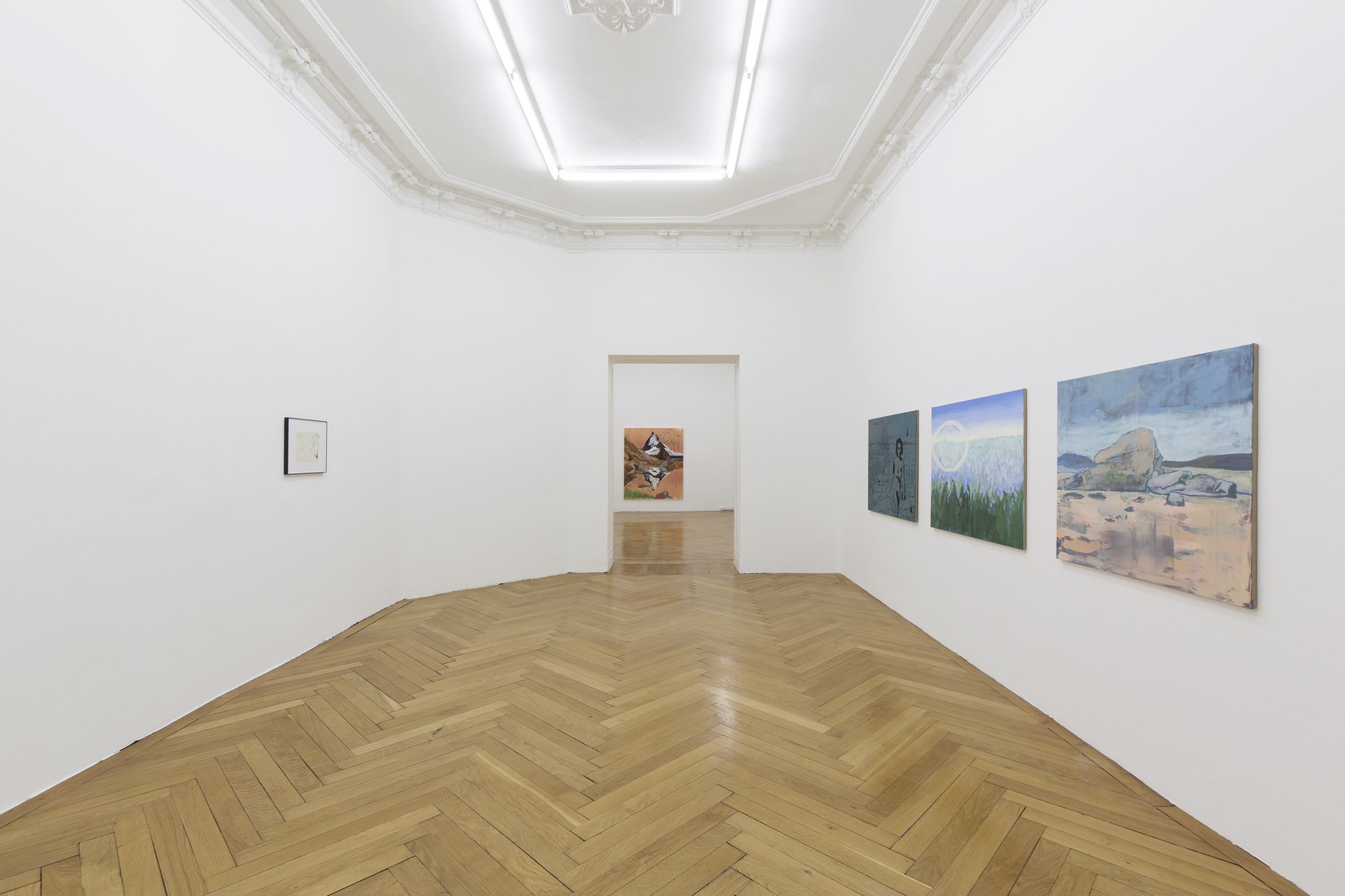
Installation view, Ultra Beauty, Treating Objects Like Women, Société, Berlin, 2015
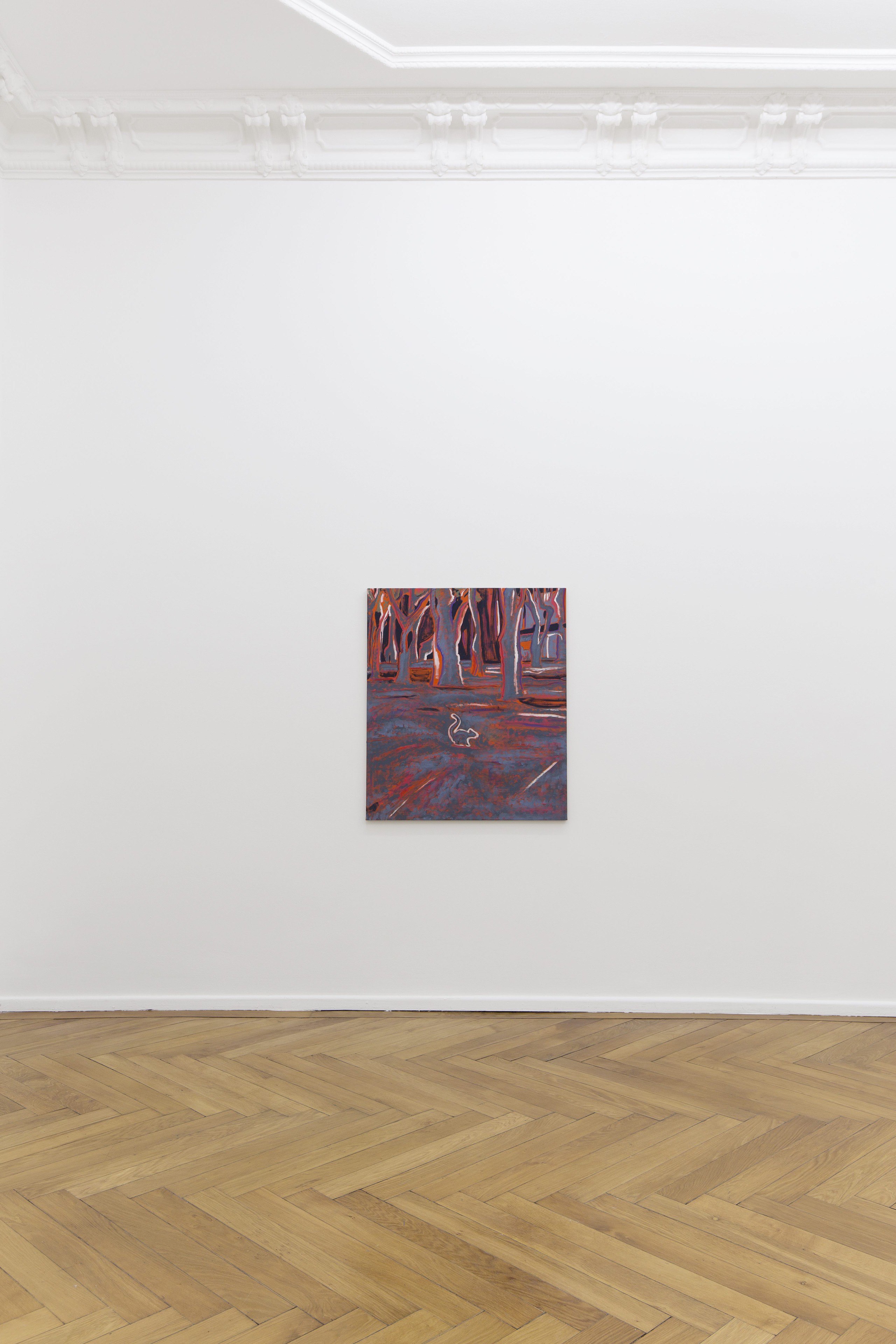
Installation view, Ultra Beauty, Treating Objects Like Women, Société, Berlin, 2015
Jeanette Mundt
Solo exhibitions
-
2023
A Reality, TANK Shanghai
God Told Him to Wait, Société, Berlin
Batshit, Company Gallery, New York -
2022
Human Remains, Overduin & co, Los Angeles
Art Basel Unlimited, Basel
-
2021
Wash us with fire, Société, Berlin
Sprich auch du, Red Tracy, Copenhagen
-
2020
Still American, Company Gallery, New York
-
2019
If The Devil Could Kill You Right Now He Would, OVERDUIN & CO, Los Angeles
-
2018
Lana Del Rey, Société, Berlin
A Failed Killing, a film by Jeanette Mundt and David Mramor, CANADA Gallery, New YorkHell on Earth, Gavin Brown’s Enterprise, New York
Addict Distract, Bridget Donahue, New York -
2017
Screen Series: GOD, New Museum, New York
-
2016
Beggars Thieves Faeries and Whores, The Green Gallery, Milwaukee
Antigone, Chapter NY, New York
Heroin: Cape Cod, USA, Off Vendome, New York
CONDO Project, Hosted by Project Native Informant, London (with Josh Kolbo) -
2015
Ultra Beauty, Société, Berlin
Treating Objects Like Women, Société, Berlin -
2014
Das Mundt, 576 Morgan Ave Apt 3L, New York
GOD, PrimeTime, New York (with Josh Kolbo) -
2013
I know I am when you make me, Clifton Benevento, New York
-
2012
Jeanette Mundt, Michael Benevento, Los Angeles
-
2011
Three Films – EyeEclipse, The GlowWorm, The Lamp, Cleopatra’s, New York
Jeanette Mundt, Clifton Benevento, New York
-
2010
Project Room, Galerie Mikael Andersen, Berlin
-
2009
The Tunnel Room, John Connelly Presents, New York
-
2008
Max Hans Daniel, Berlin
Group exhibitions
-
2024
Everyone Loves Picabia, David Lewis Gallery, New York
Day for Night: New American Realism, Palazzo Barberini, Rome
Excitement & Enticement, Oriole, Hamburg
Angelic Rebels, Company Gallery, New York
-
2023
Et Toi, Benoit?, Sara’s, New York
Baroque, Champ Lacombe, Biarritz
Magpie, Société, Berlin
New York is for Lovers, CFHILL, Stockholm
-
2022
A Maze Zanine, Amaze Zaning, A-Mezzaning, Meza-9, David Zwirner, New York
-
2021
DOG, Company Gallery, New York
Striving After Wind, Chapter NY, New York
an ego of her own, Kaufmann Repetto, Milan
an ego of her own, Kaufmann Repetto, New York
-
2020
(Nothing but) Flowers, Karma, New York
-
2019
Whitney Biennial 2019, Whitney Museum of American Art, New York
The Rest, Lisson Gallery, New York
-
2018
The Vitalist Economy of Painting by Isabelle Graw, Galerie Neu, Berlin
Painting: Now and Forever, Part III, Matthew Marks Gallery and Greene Naftali Gallery, New YorkDinner That Night, Bureau Gallery, New York
-
2017
Animal Farm, The Brant Foundation Art Study Center, Greenwich Homestead, Carl Louie, Ontario
Elements of XXX : Part I, 47 Canal, New York
Sputterances, METRO PICTURES, New York
New Acquisitions – Hildebrand Collection, G2 Kunsthalle, Leipzig -
2016
0rphan Drift - Unruly City, Dold Projects, Villingen
The Grand Dold Projects Art Gala, Villa Junghans, Villingen
Tre Amici, Tre Amici Restaurant, Long Branch
Dasmundt’s Archeopsychic Zero, KGB Bar, New York
Habits, Svietlana, New York
Paul Heyer, Janette Mundt, Jesse Wine, Andrea Rosen Gallery, New York -
2015
Pet Sematary, Shoot the Lobster, New York
Leaves of Sage and Foot of Mammal on a Smooth Yellow-ochre Background, U.S. Blues, New York
The Coyote, Gallery Steinsland Berliner, Stockholm
Works on Paper, Greene Naftali Gallery, New York
Looking back, White Columns, New York
The Rest is Free, Ground Floor Theater, New York -
2014
Jeanette Mundt + Ned Vena, Federico Vavassori, Milan
Kultur und Freizeit, Westfälischer Kunstverein, Münster -
2013
Quadrato, Interno 4, Bologna
Reckless Head, Curated by Jeanette Mundt, Michael Benevento, Los Angeles -
2012
Screening: Emergency Cheesecake, Whitney Museum of American Art, New York
Habeas Corpus, Halsey McKay, New York
In Plain Sight, Mitchell-Innes & Nash, New York
The Picture of Dorian Gray, SecondGuest, New York
Gruppenausstellung 3, Société, Berlin -
2011
Sentimental Education, Gavlak Gallery, Palm Beach
From Where You Just Arrived, Pepin Moore, Los Angeles -
2010
BigMinis, Musée d’art contemporain, Bordeaux
Salad Days, The Journal, New York
August Group Show, Guerrero Gallery, San Francisco
Small Oil Paintings, Galerie Mikael Andersen, Berlin
All the Splendors of the Earth, Part II, Cave, Detroit
Big Apple, Clifton Benevento, New York -
2009
Brooklyn Queens, The Journal, New York
Cleopatra’s Trade Secrets 2, John Connelly Presents, New York
They Are Summating, Space 1026, Philadelphia
If the Dogs are Barking, Artists Space, New York
Single Vision, Apartment Show, New York -
2008
Friends and Family, Anton Kern Gallery, New York
